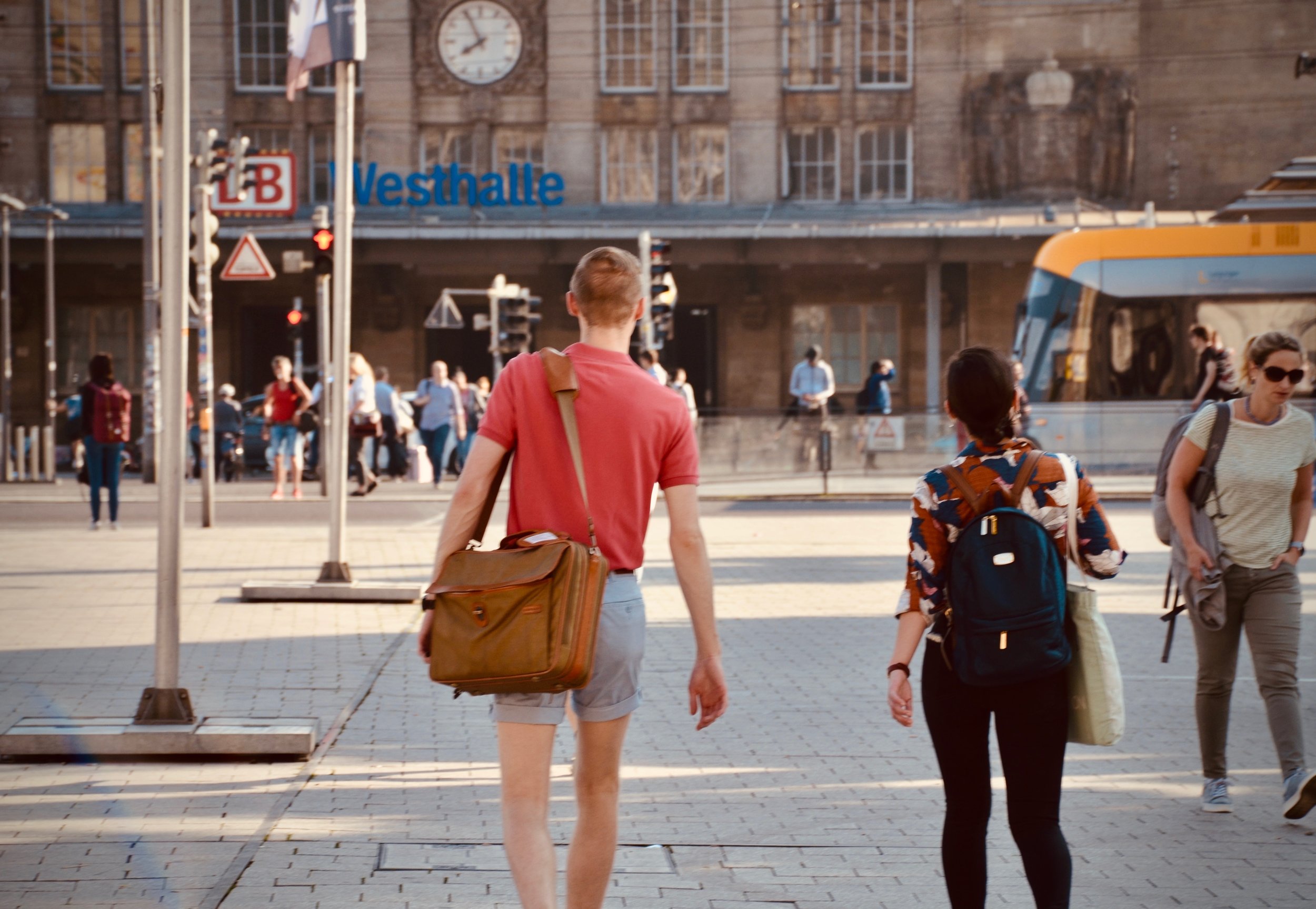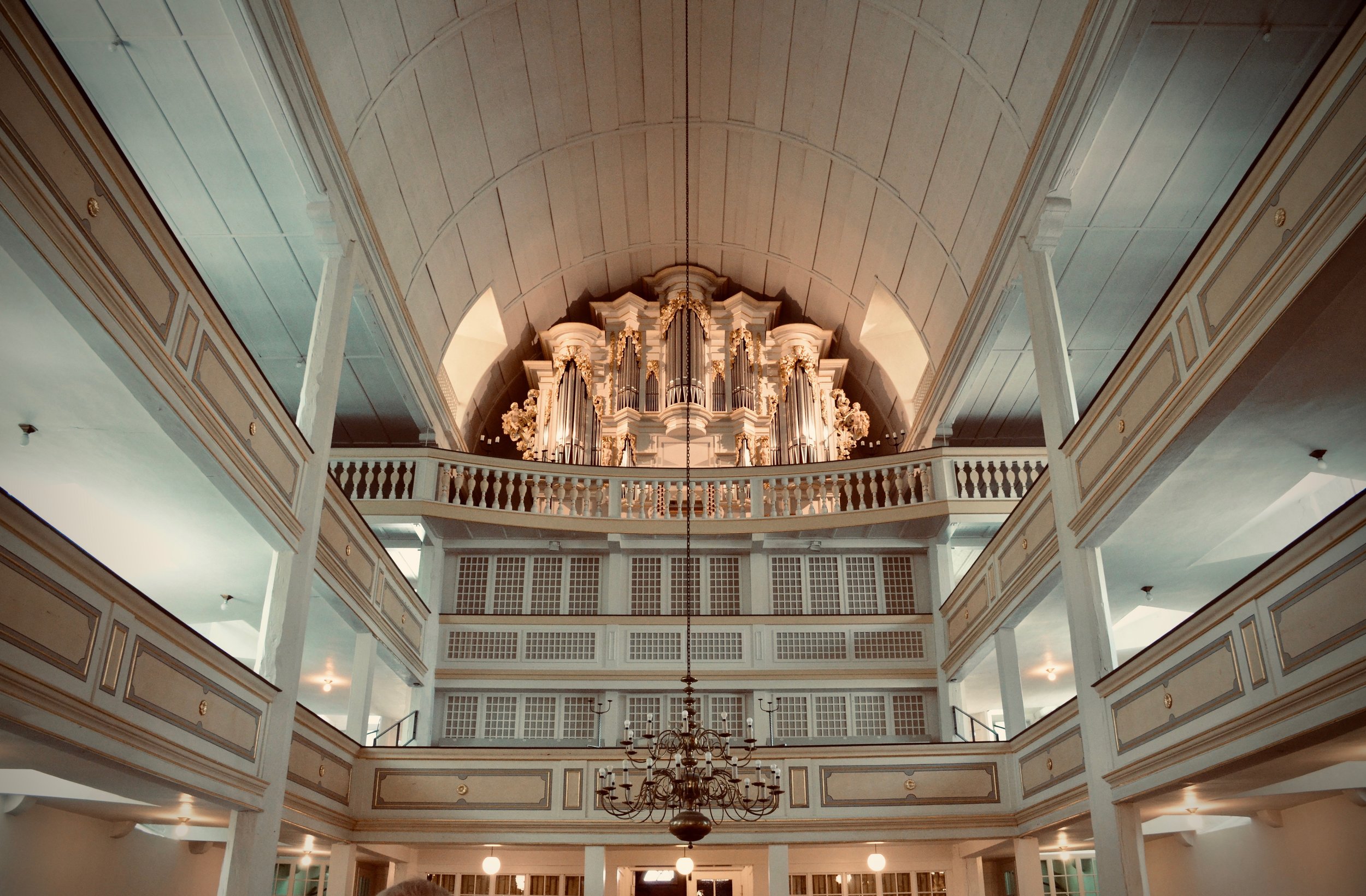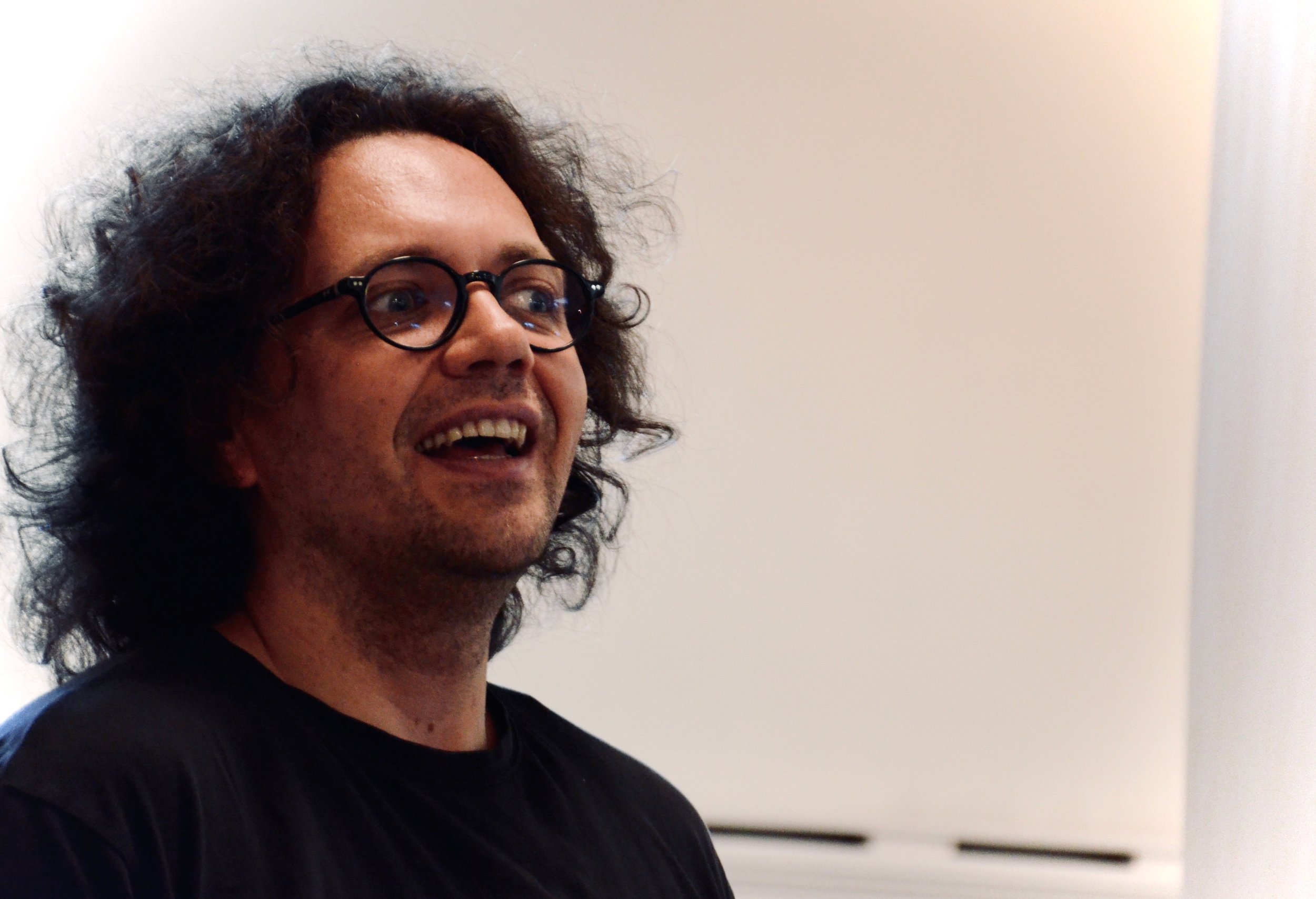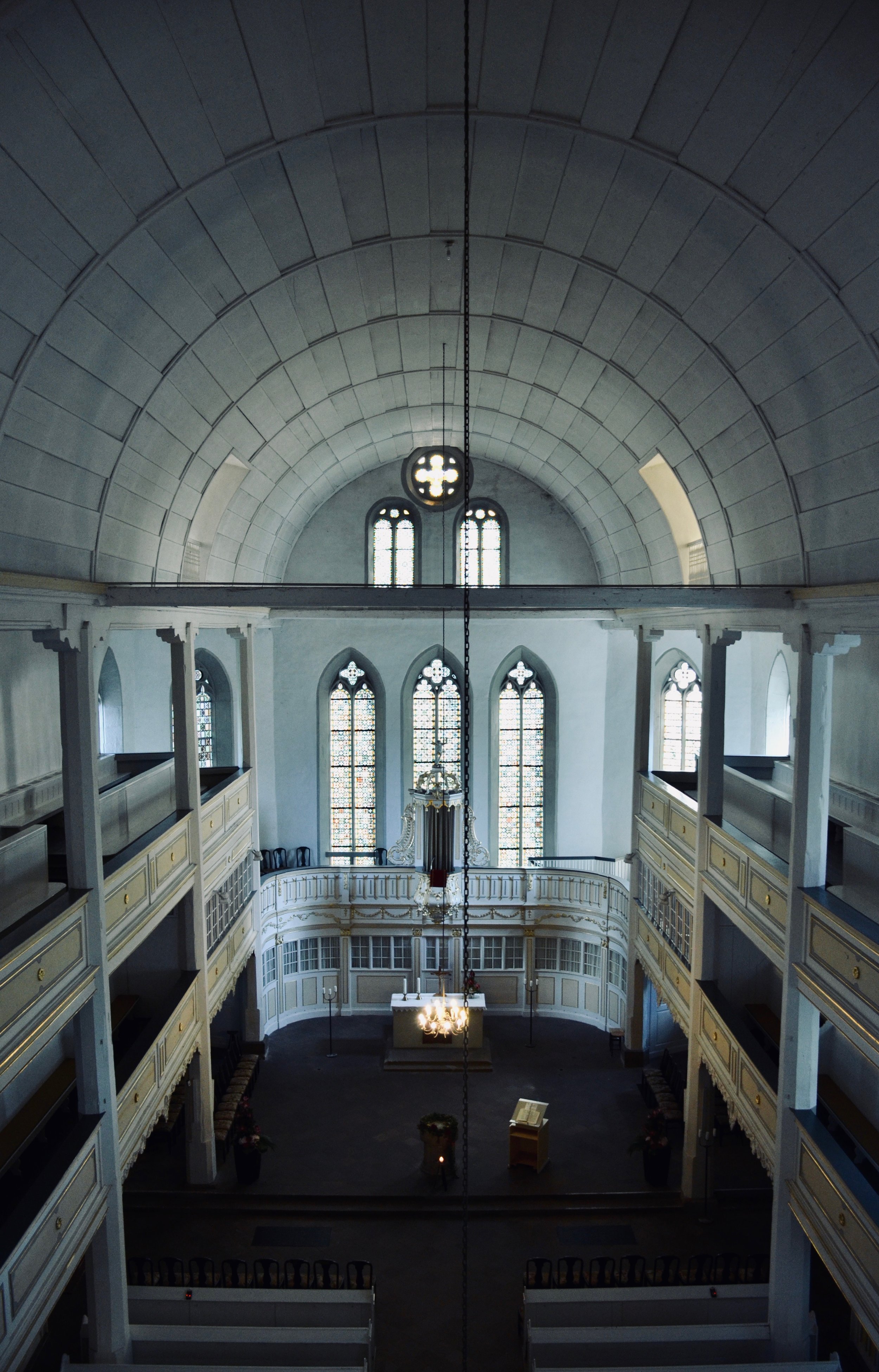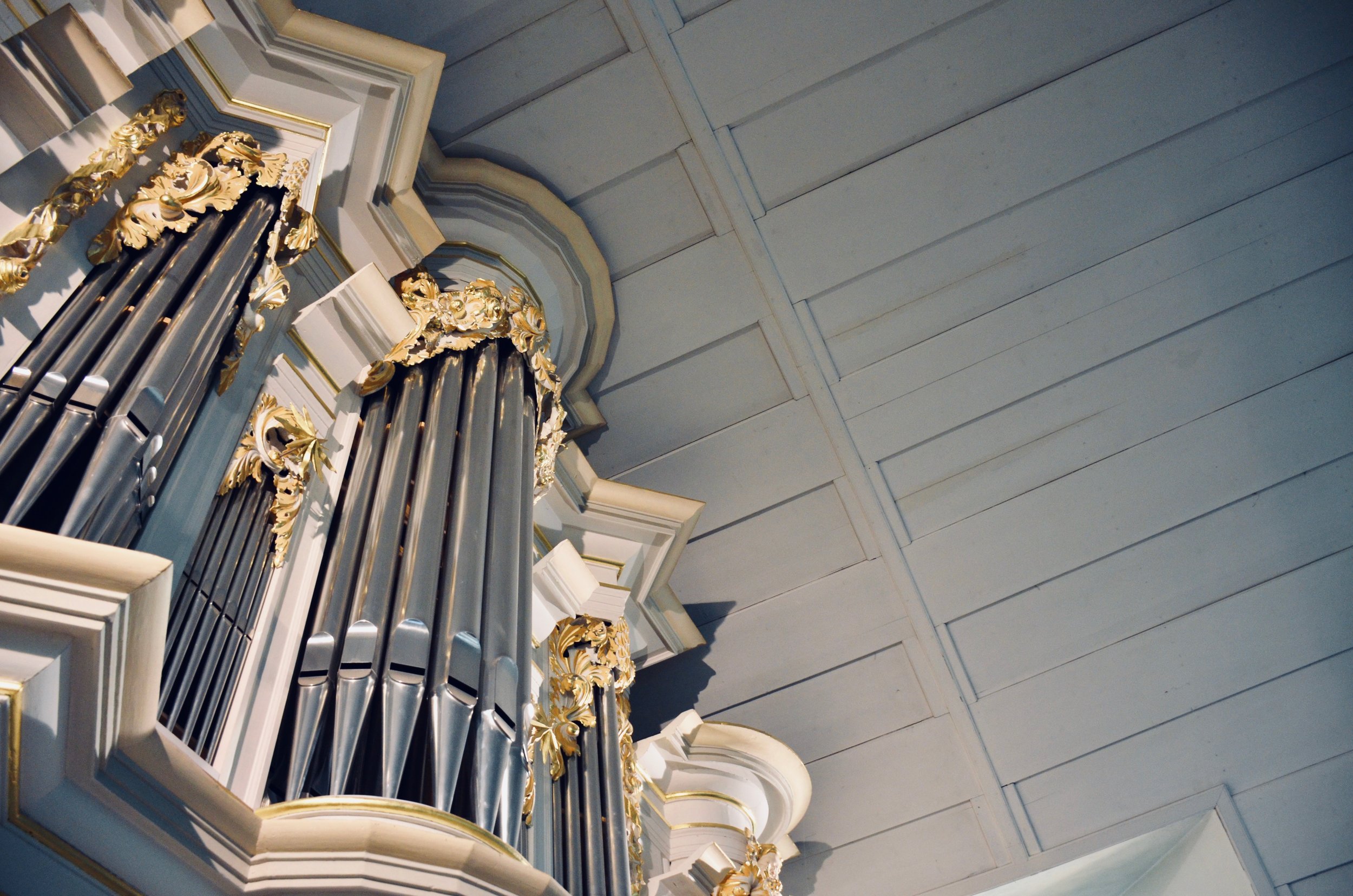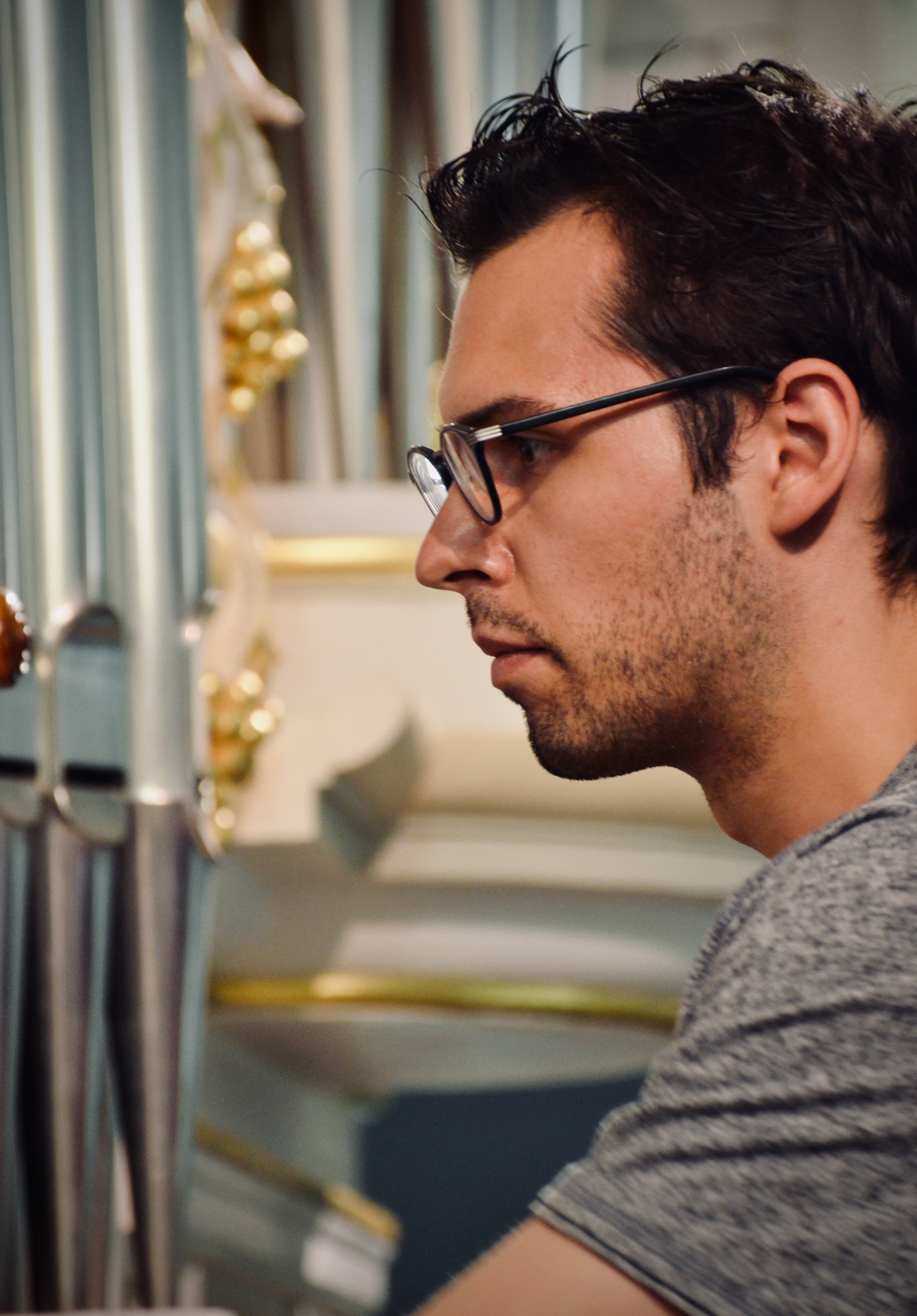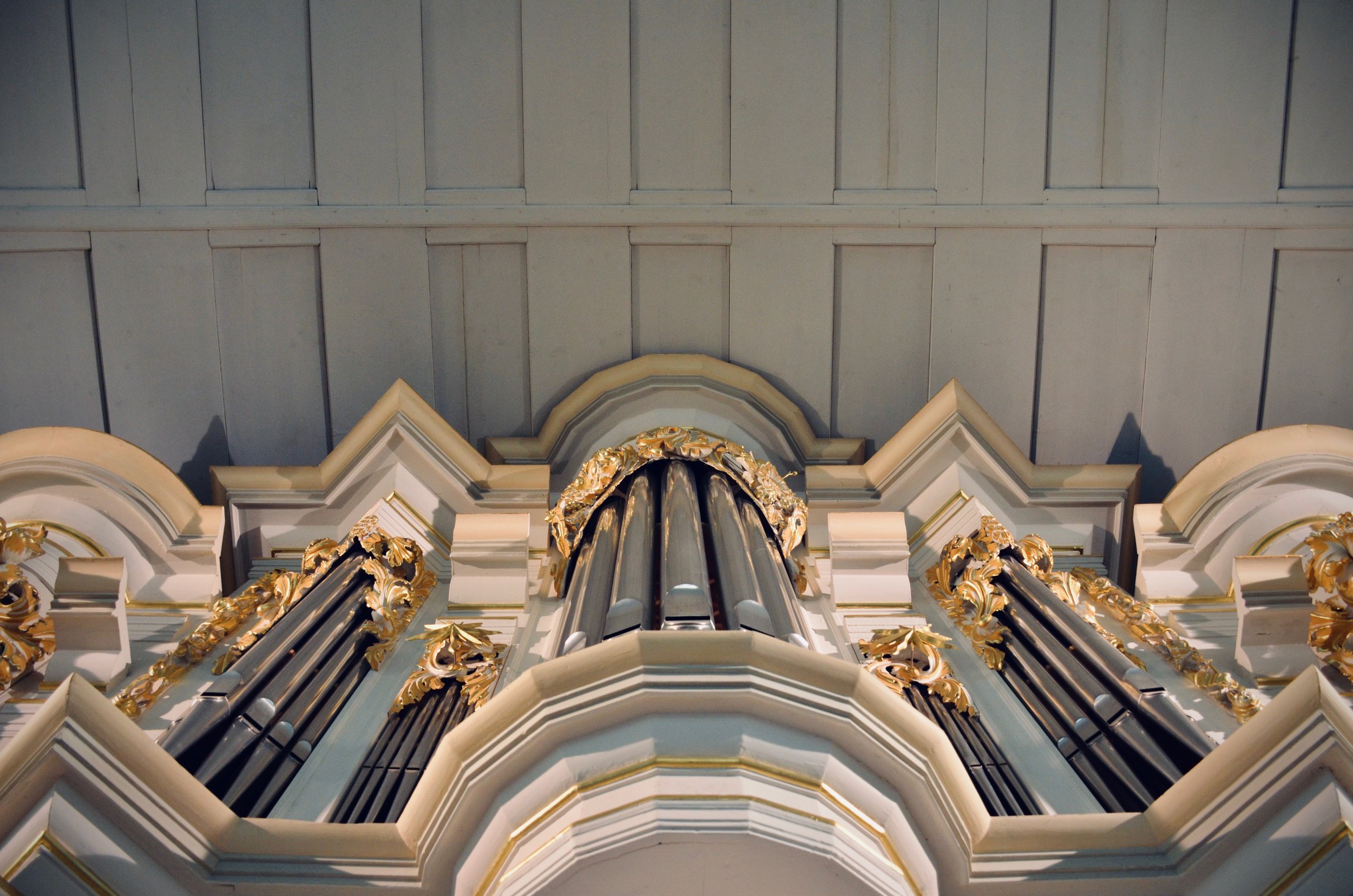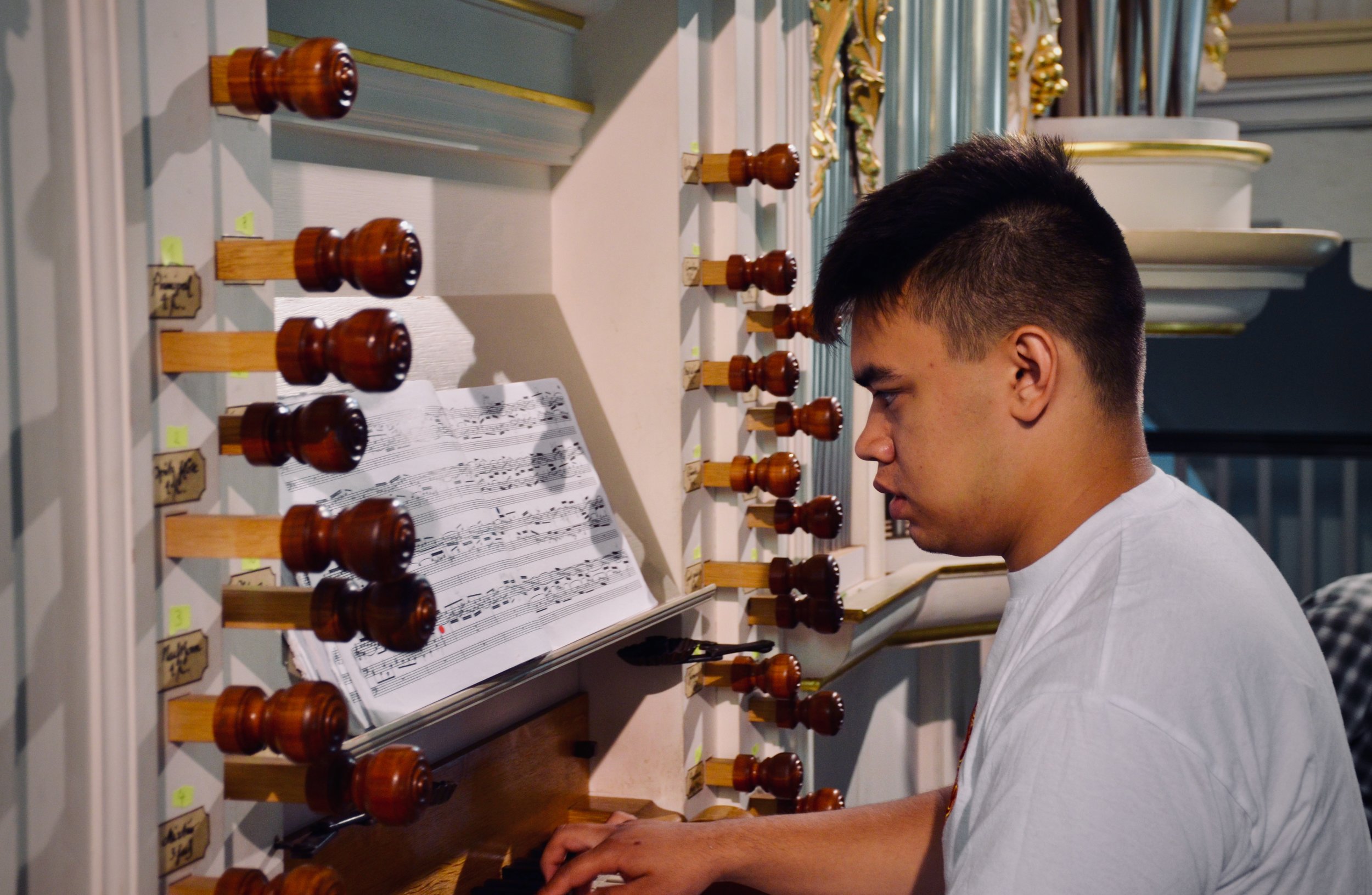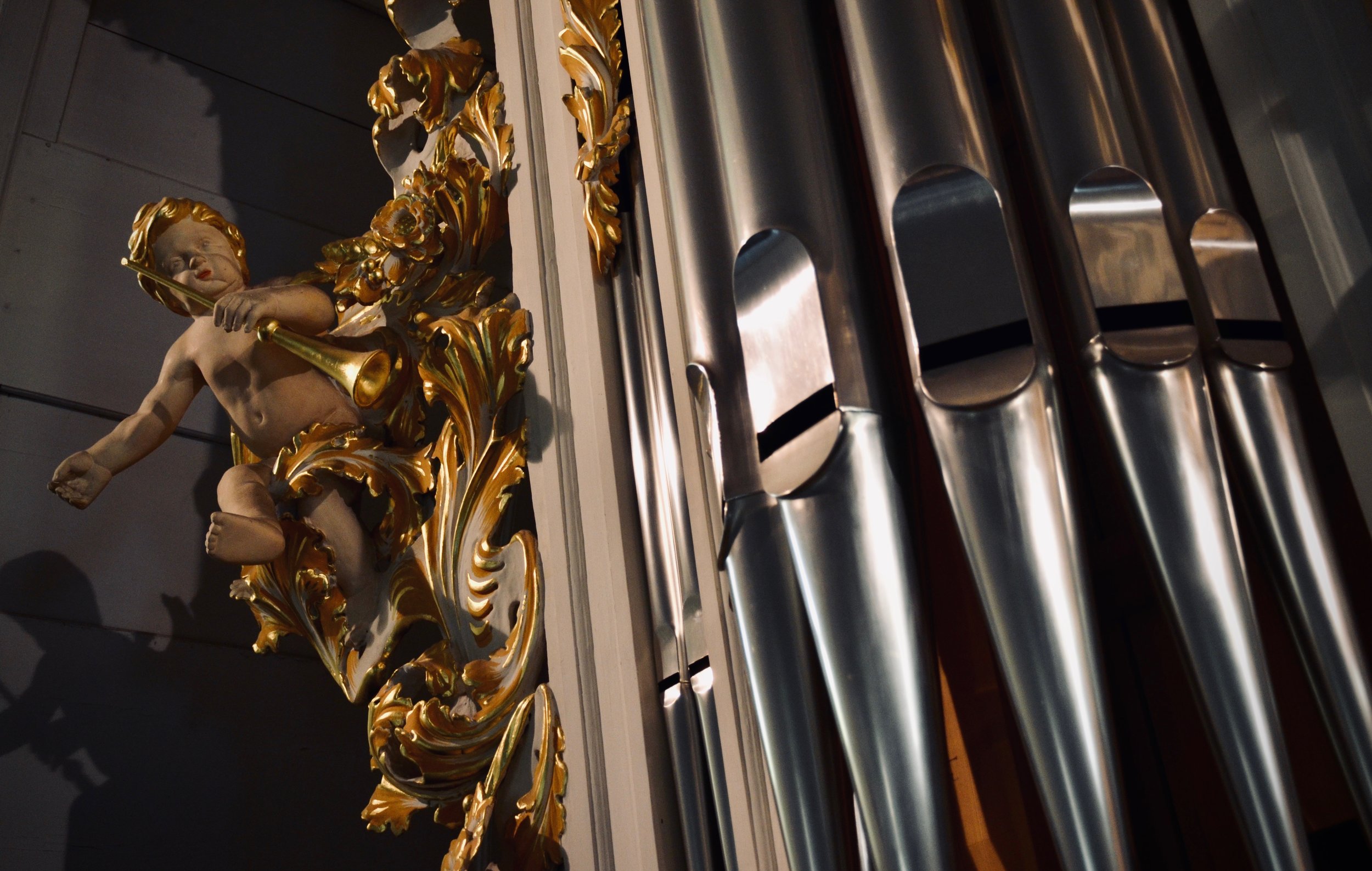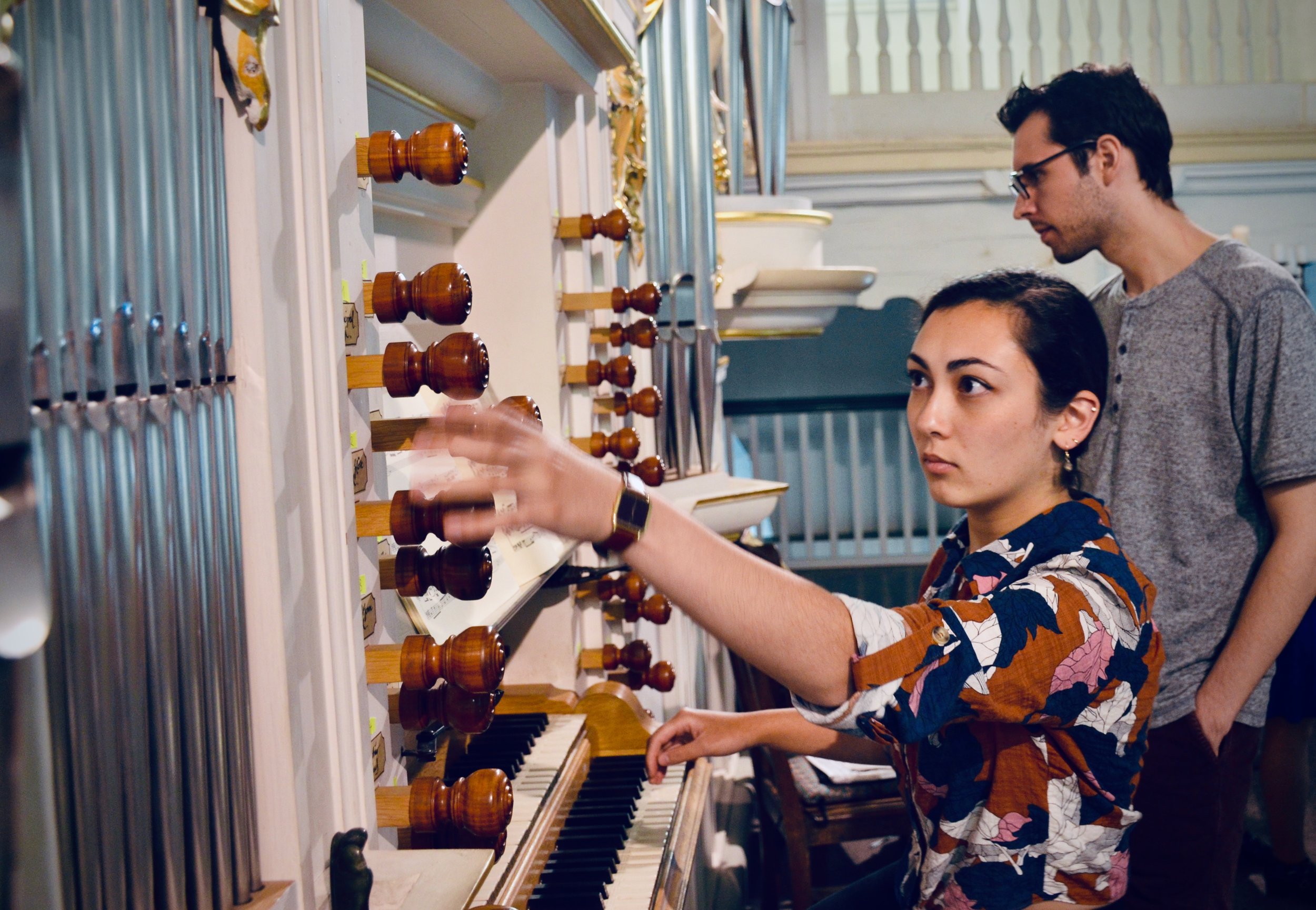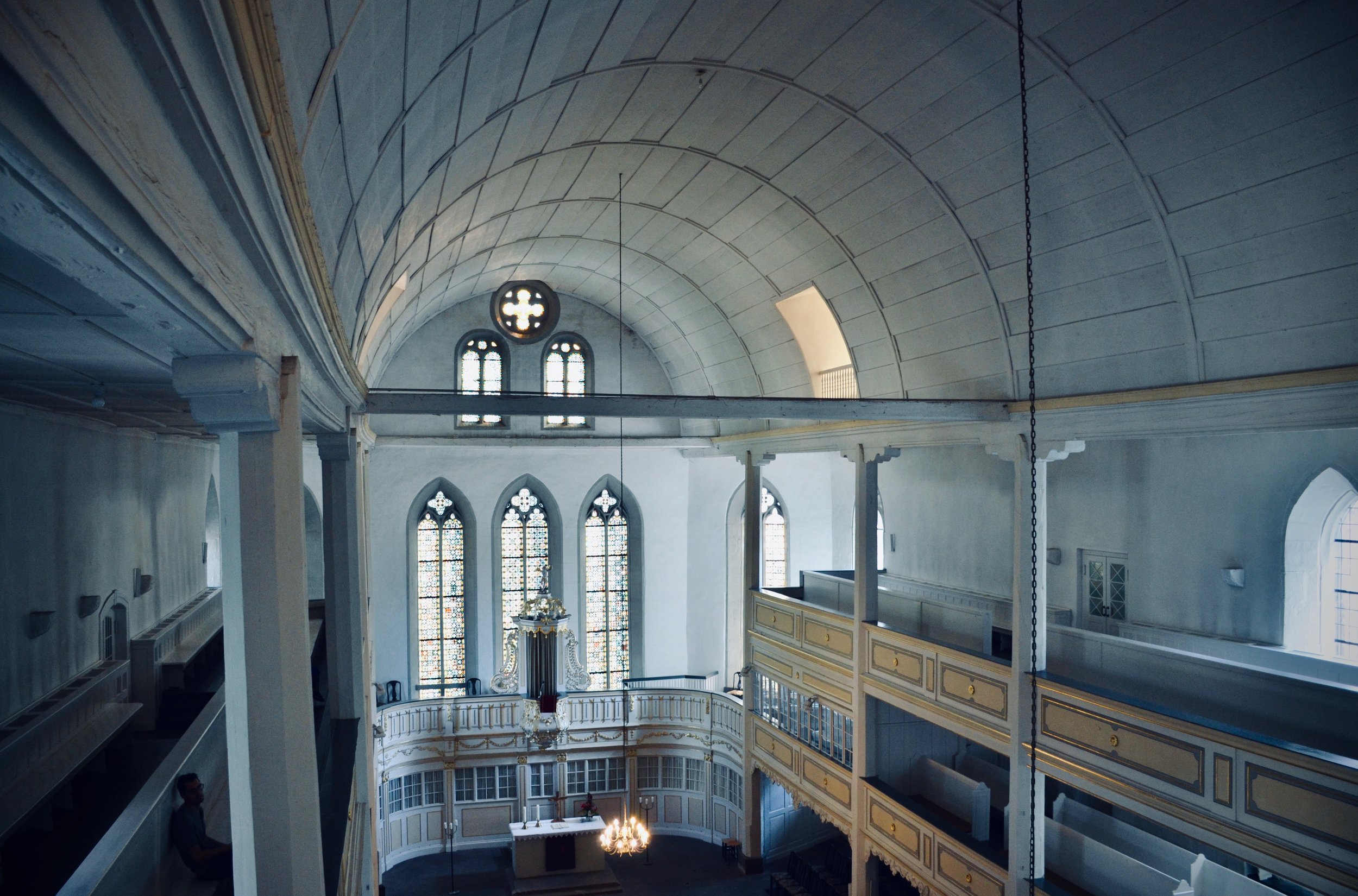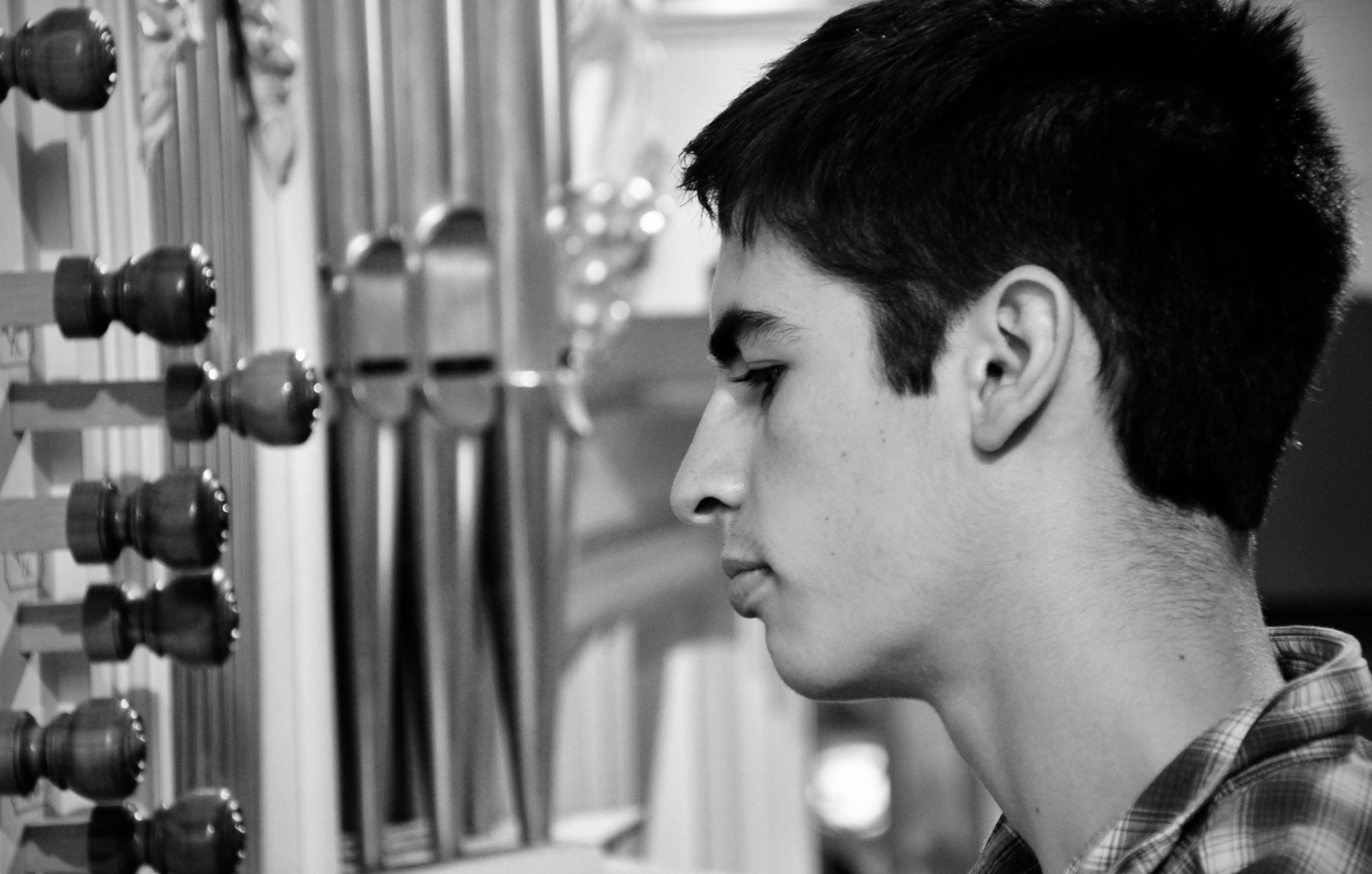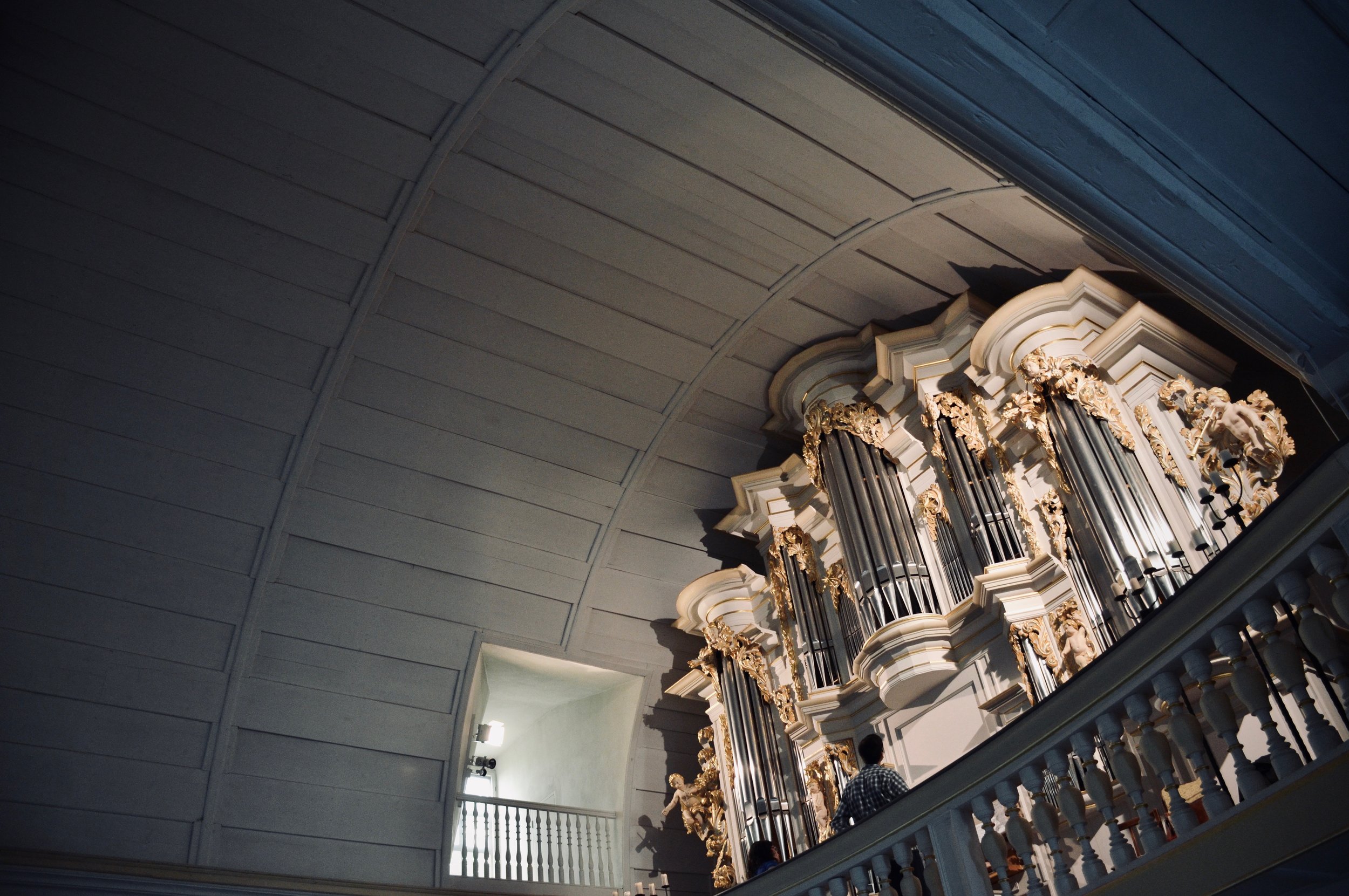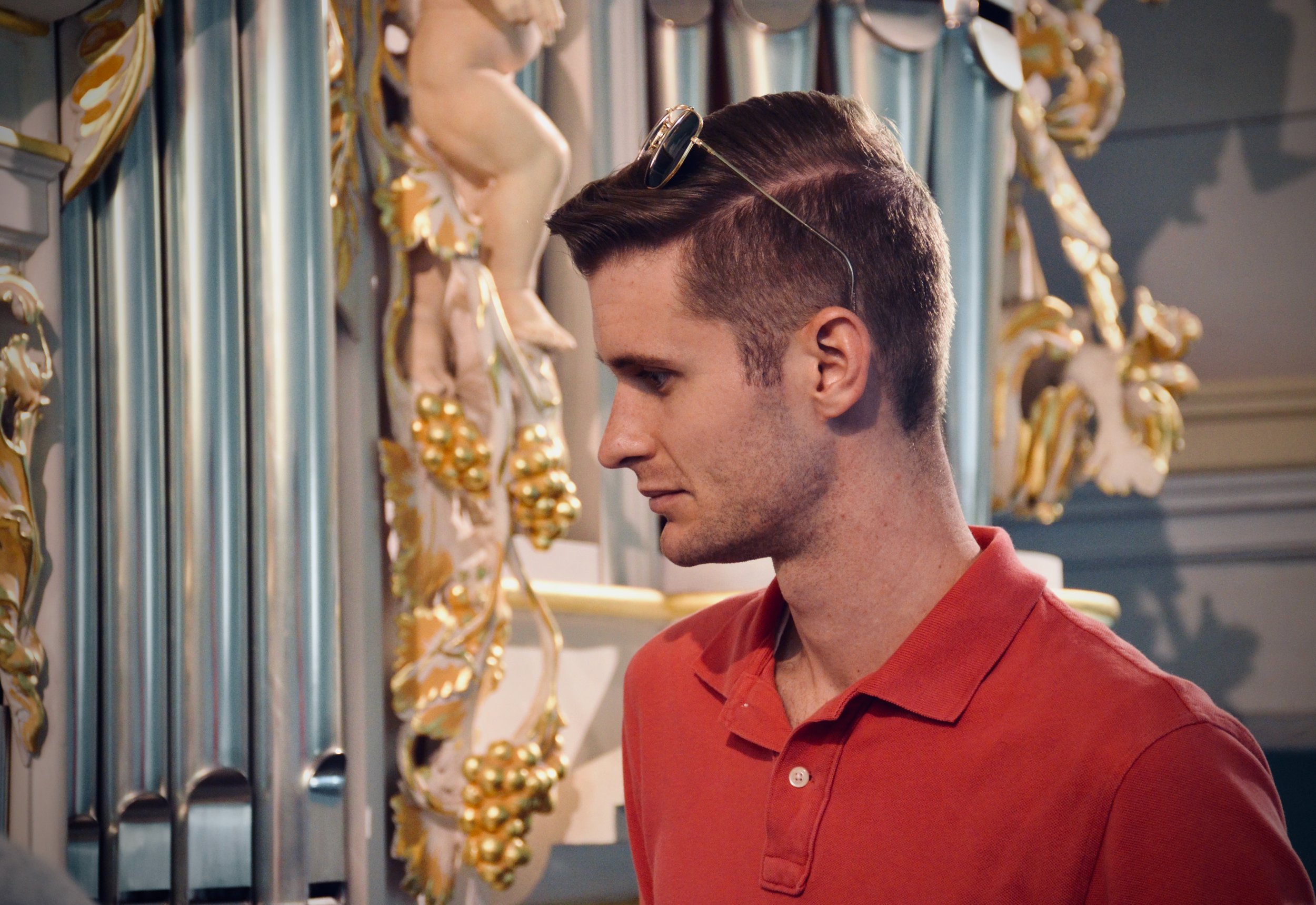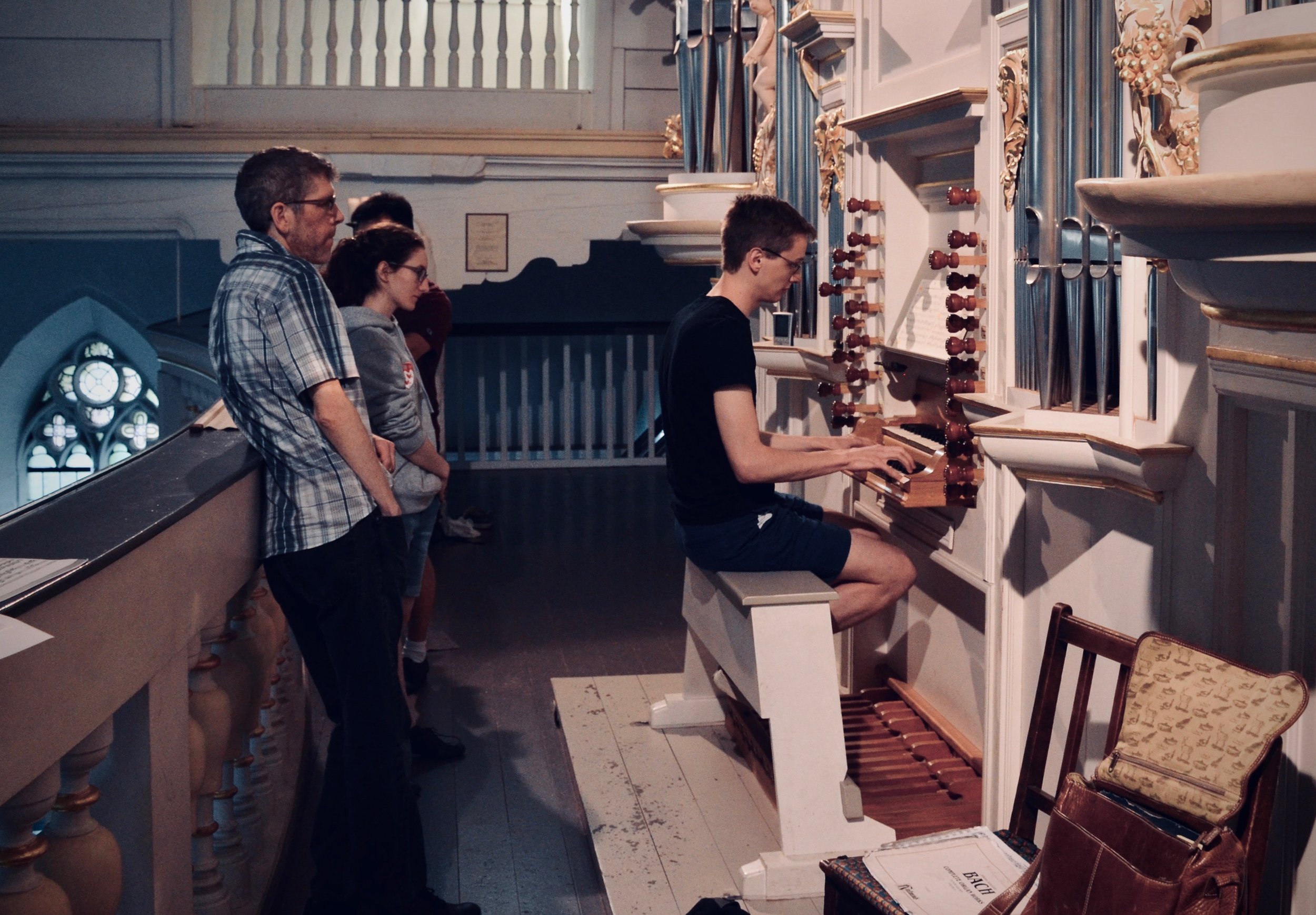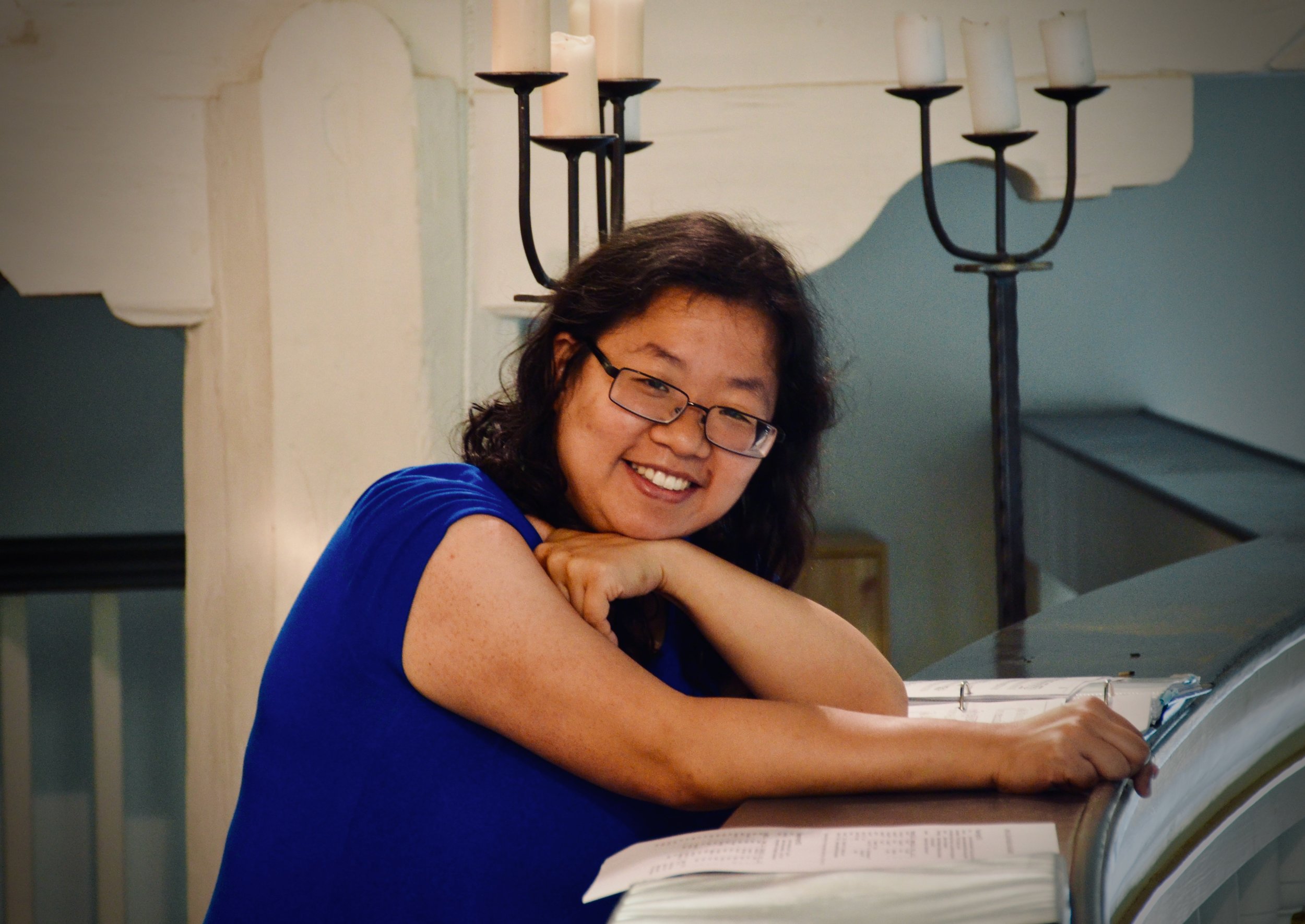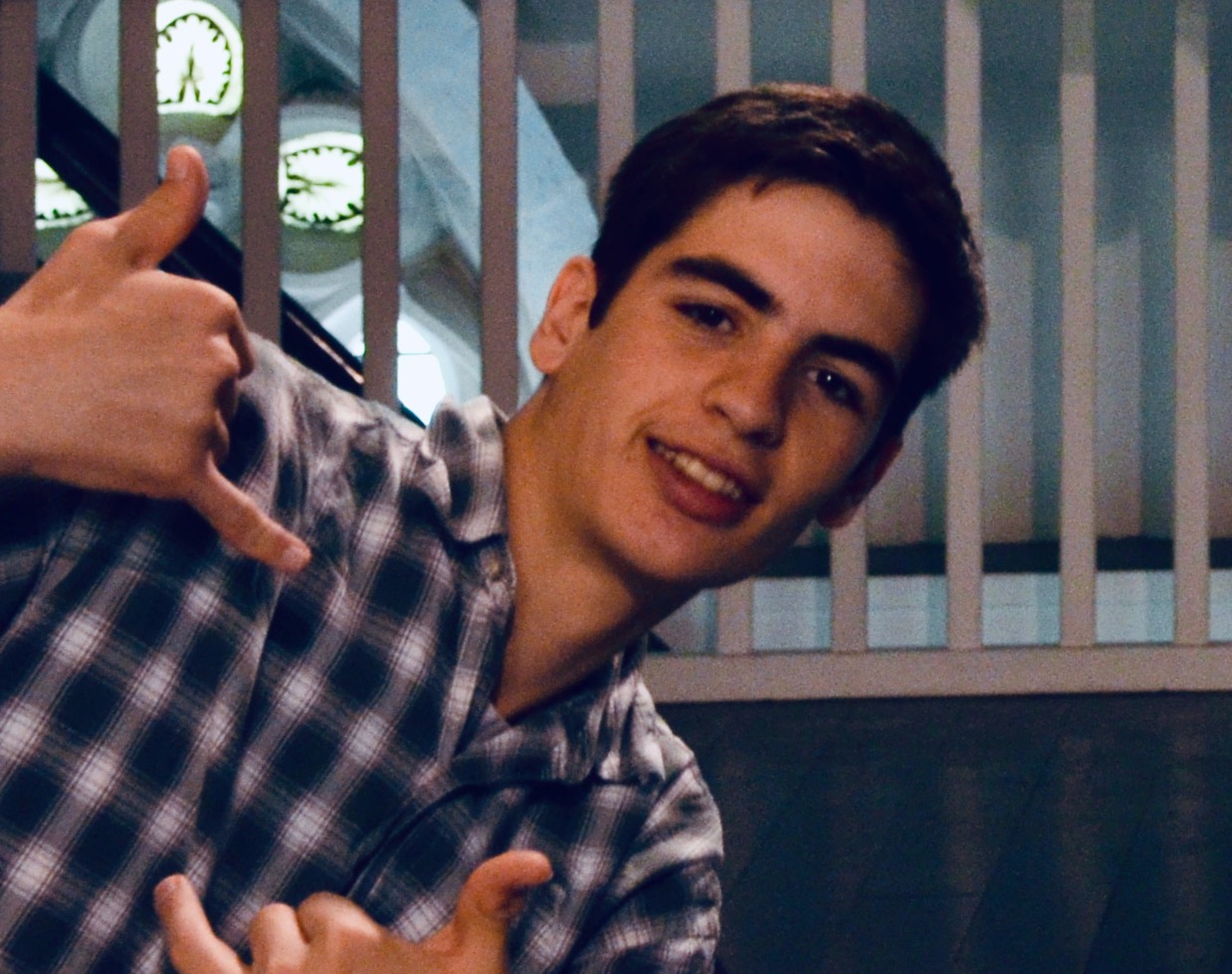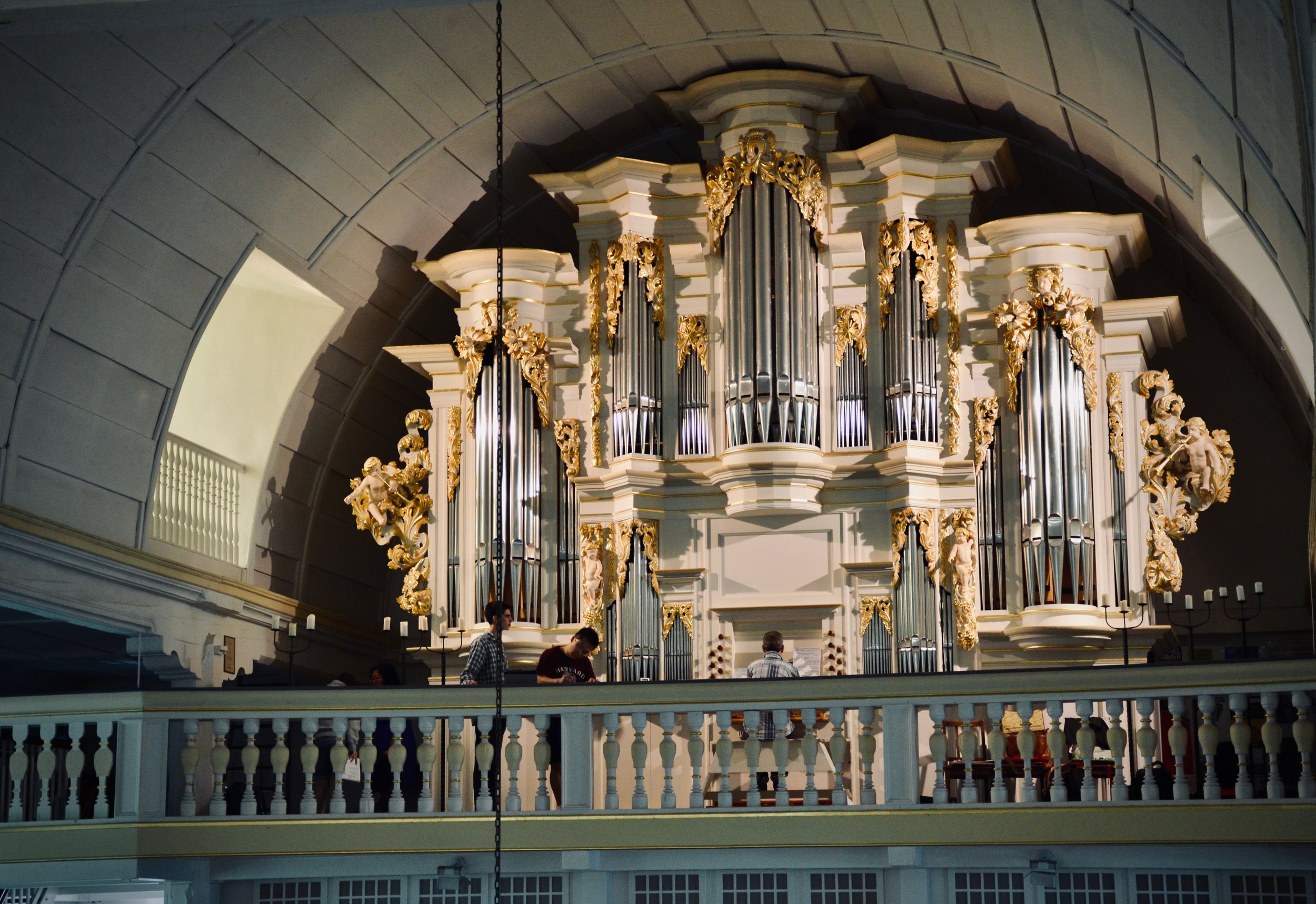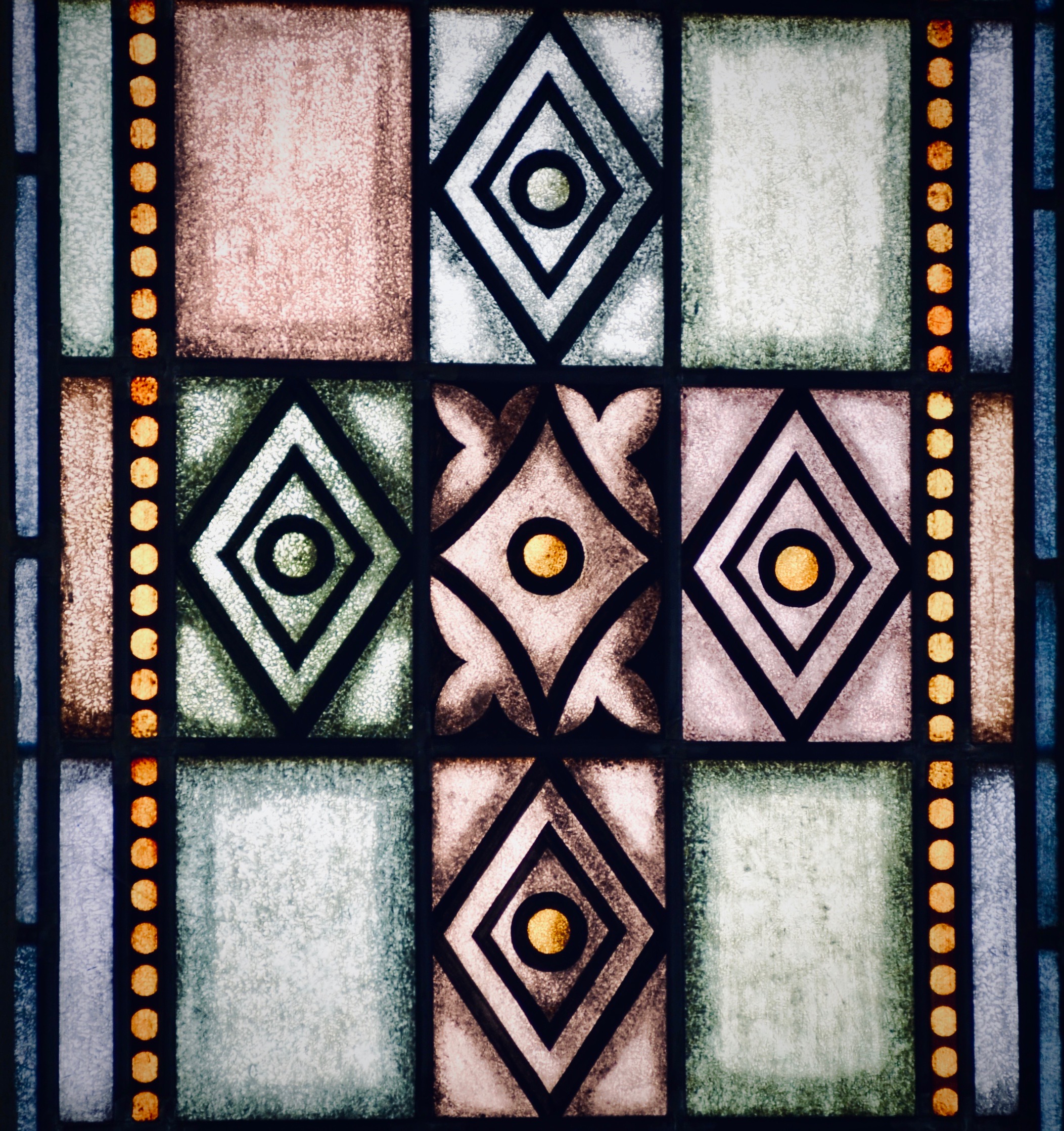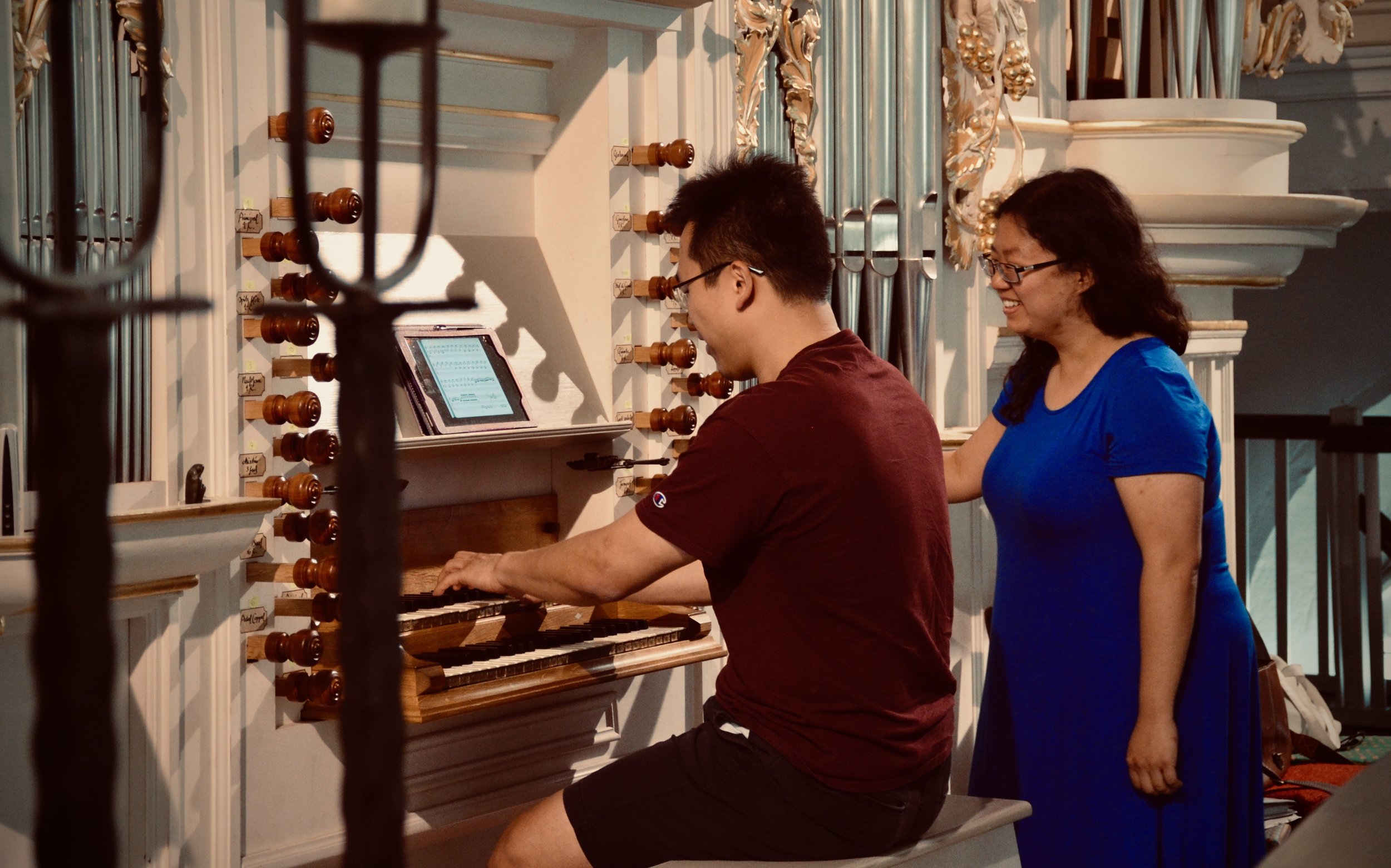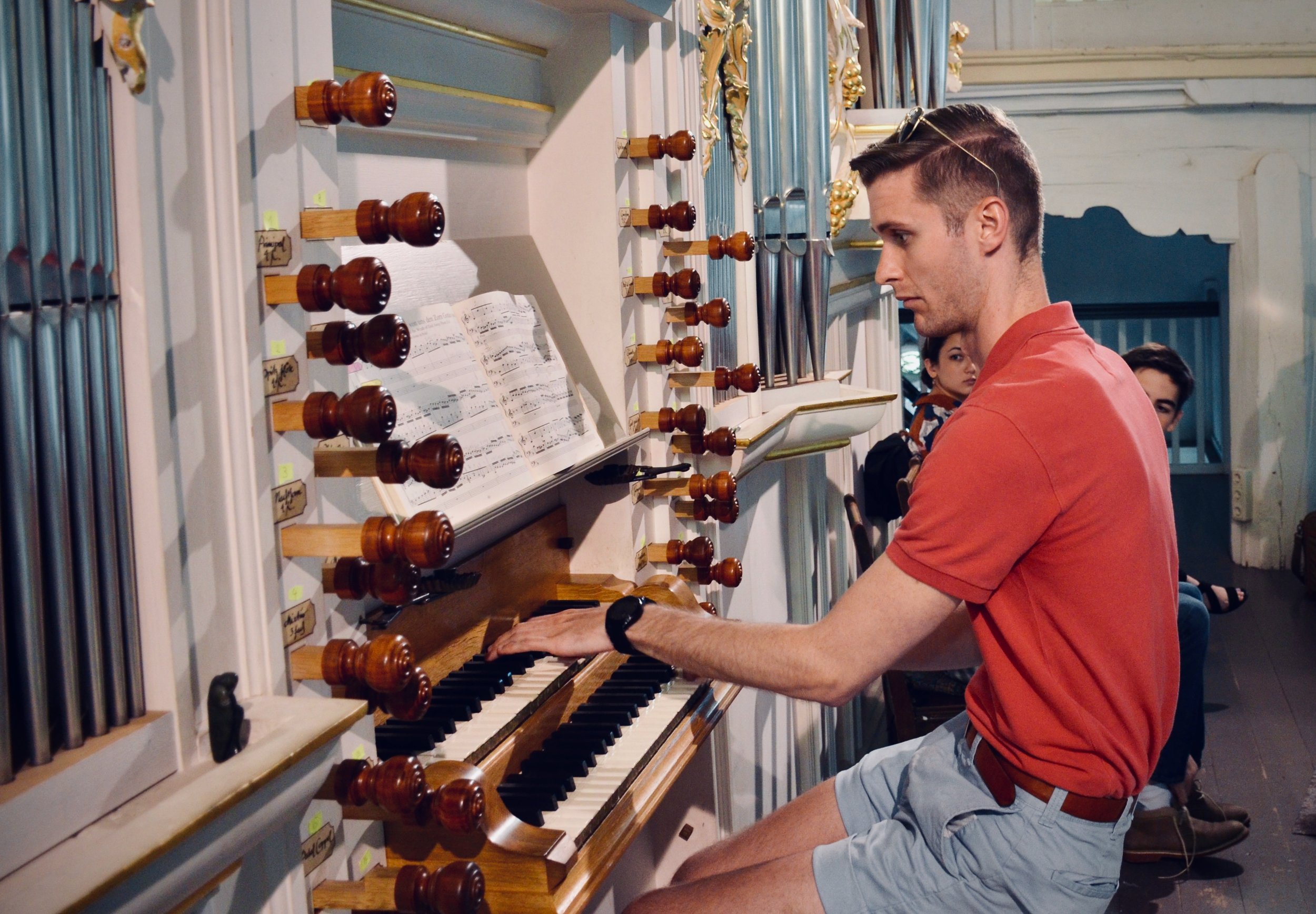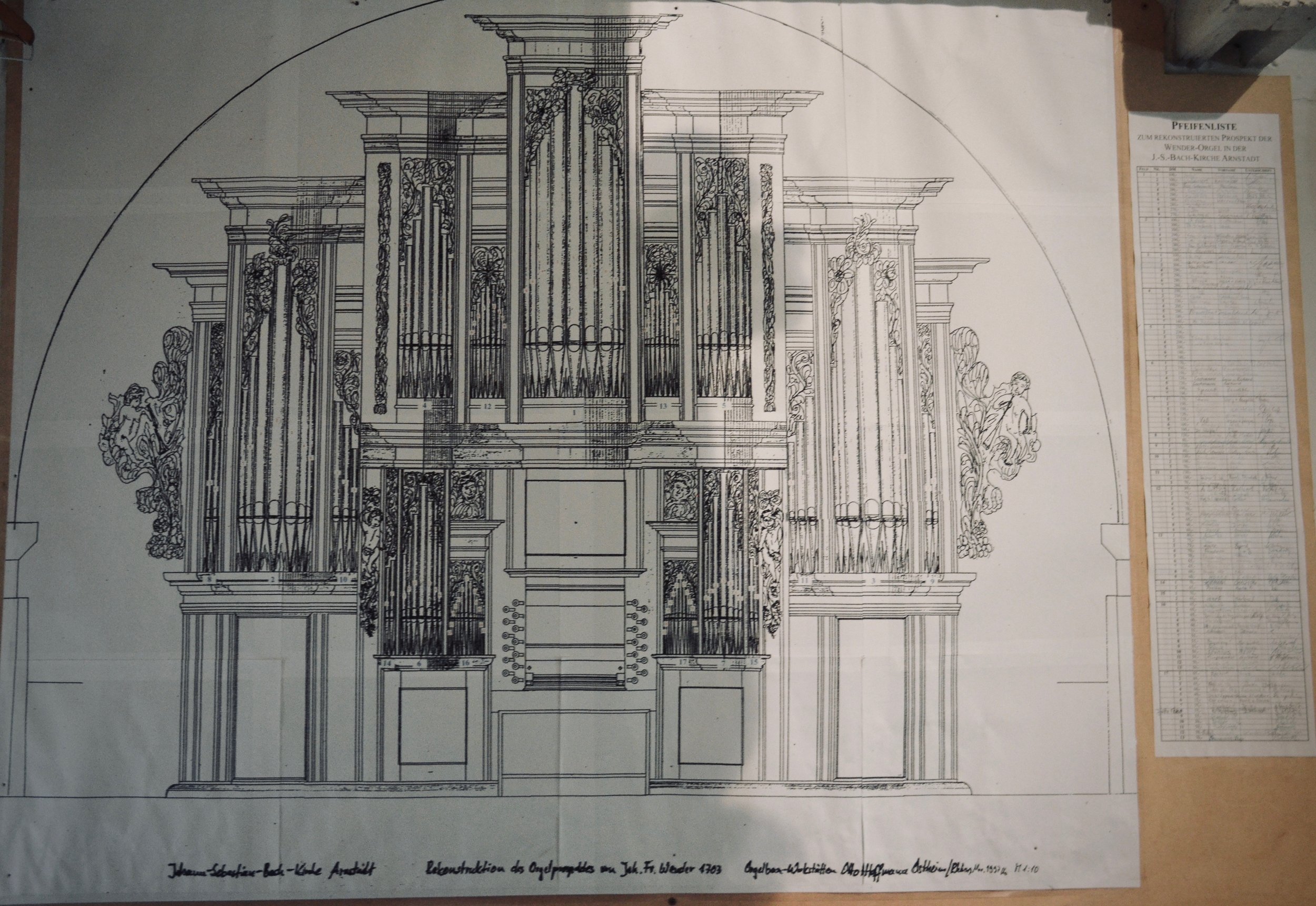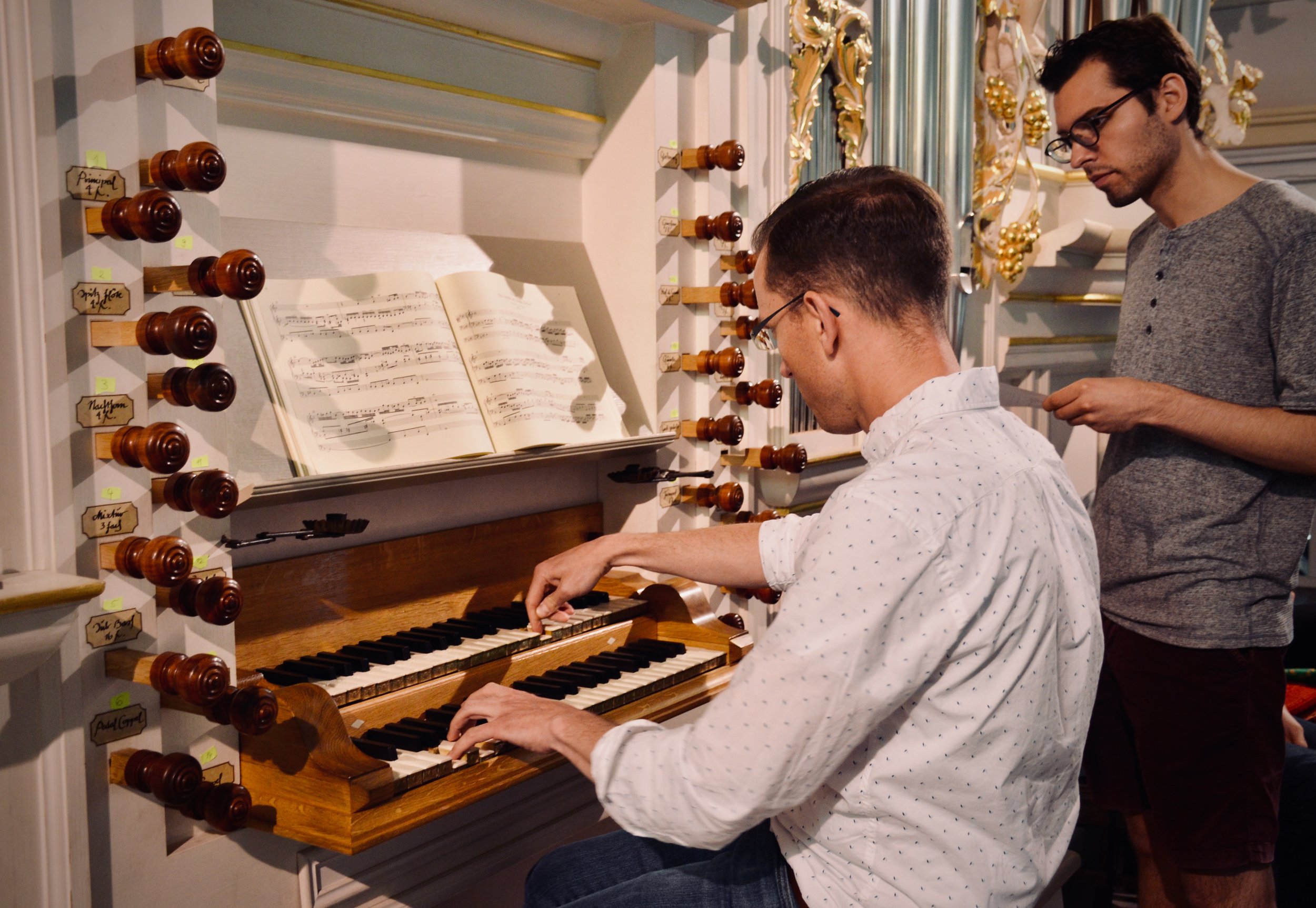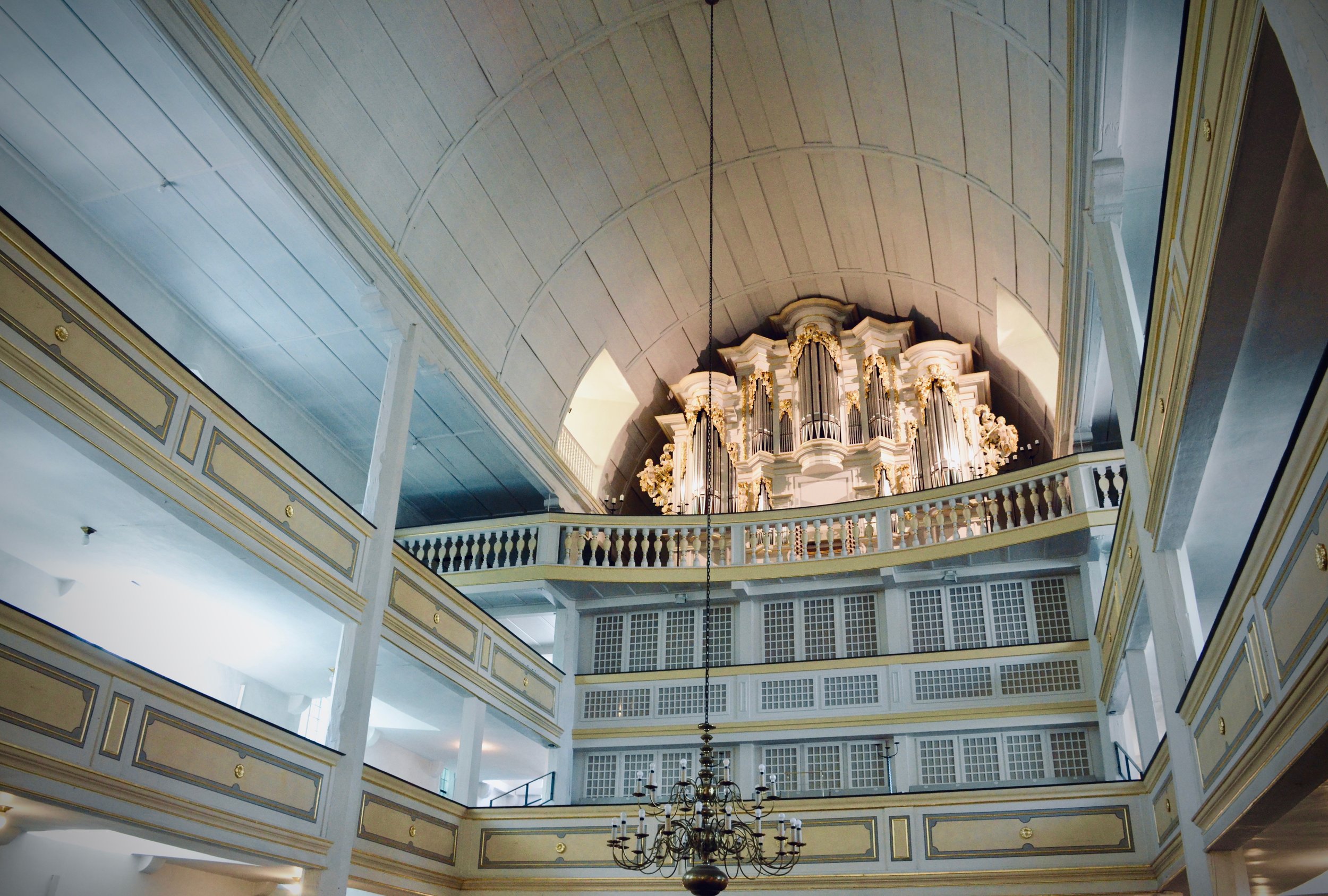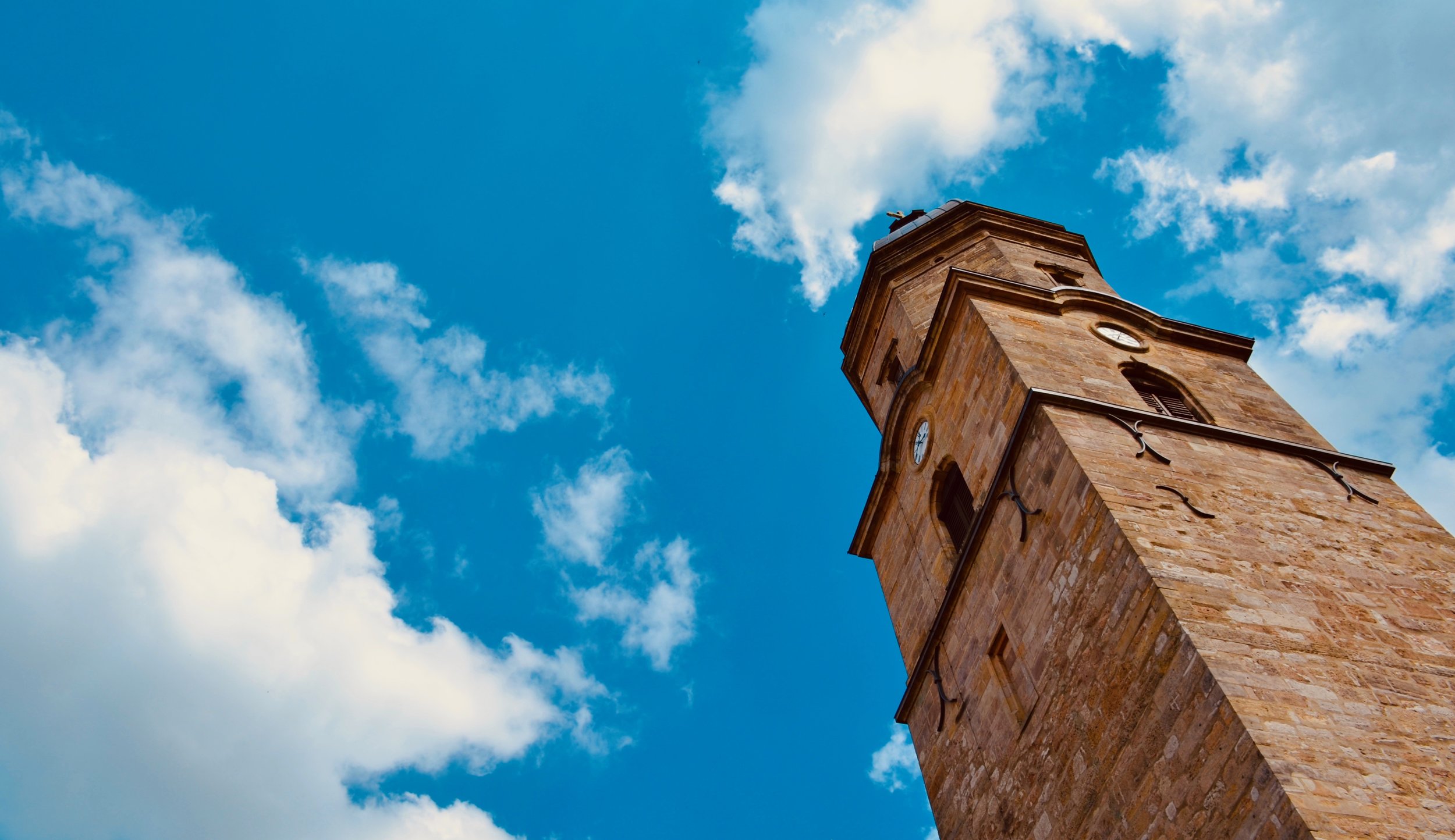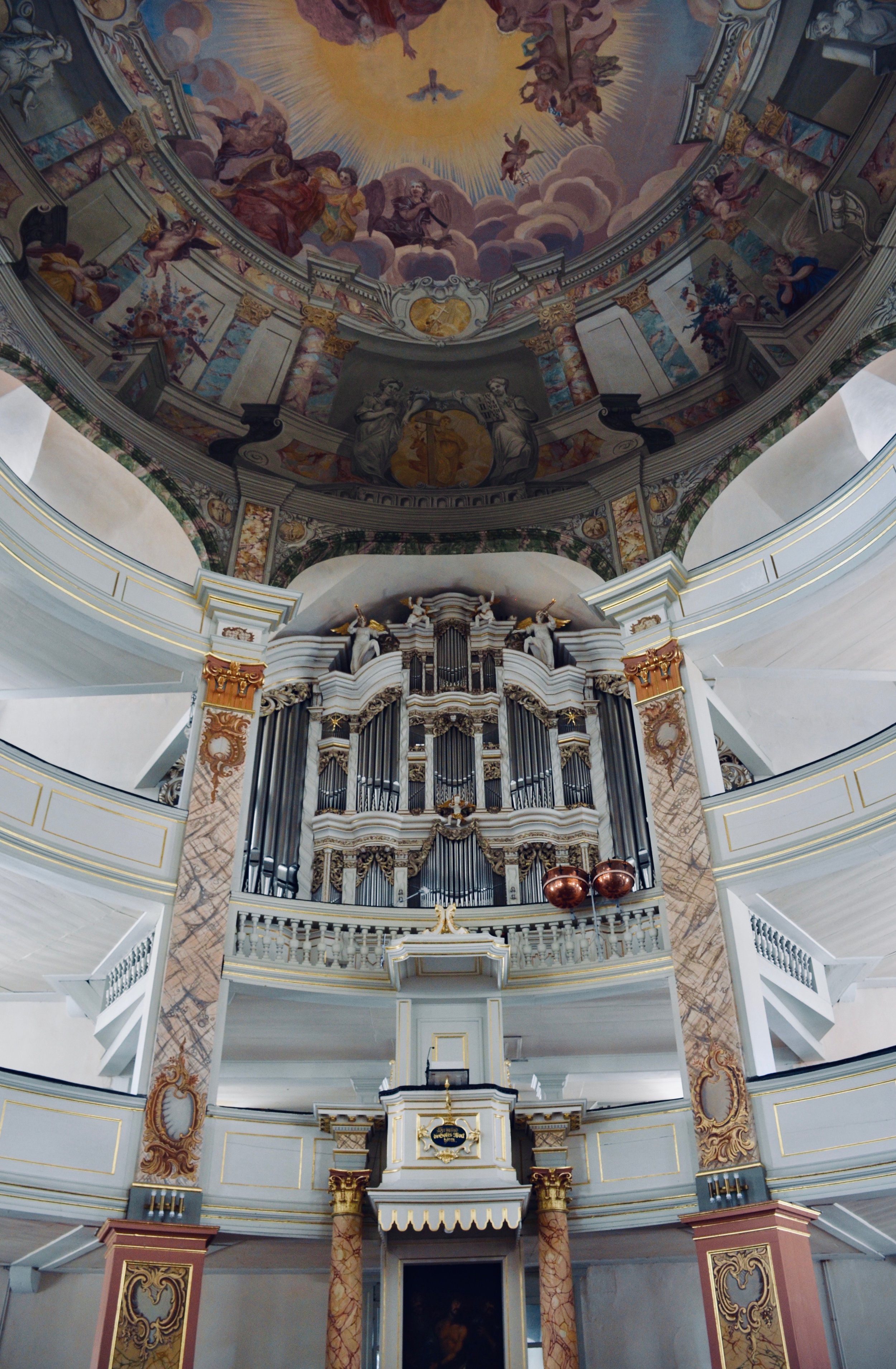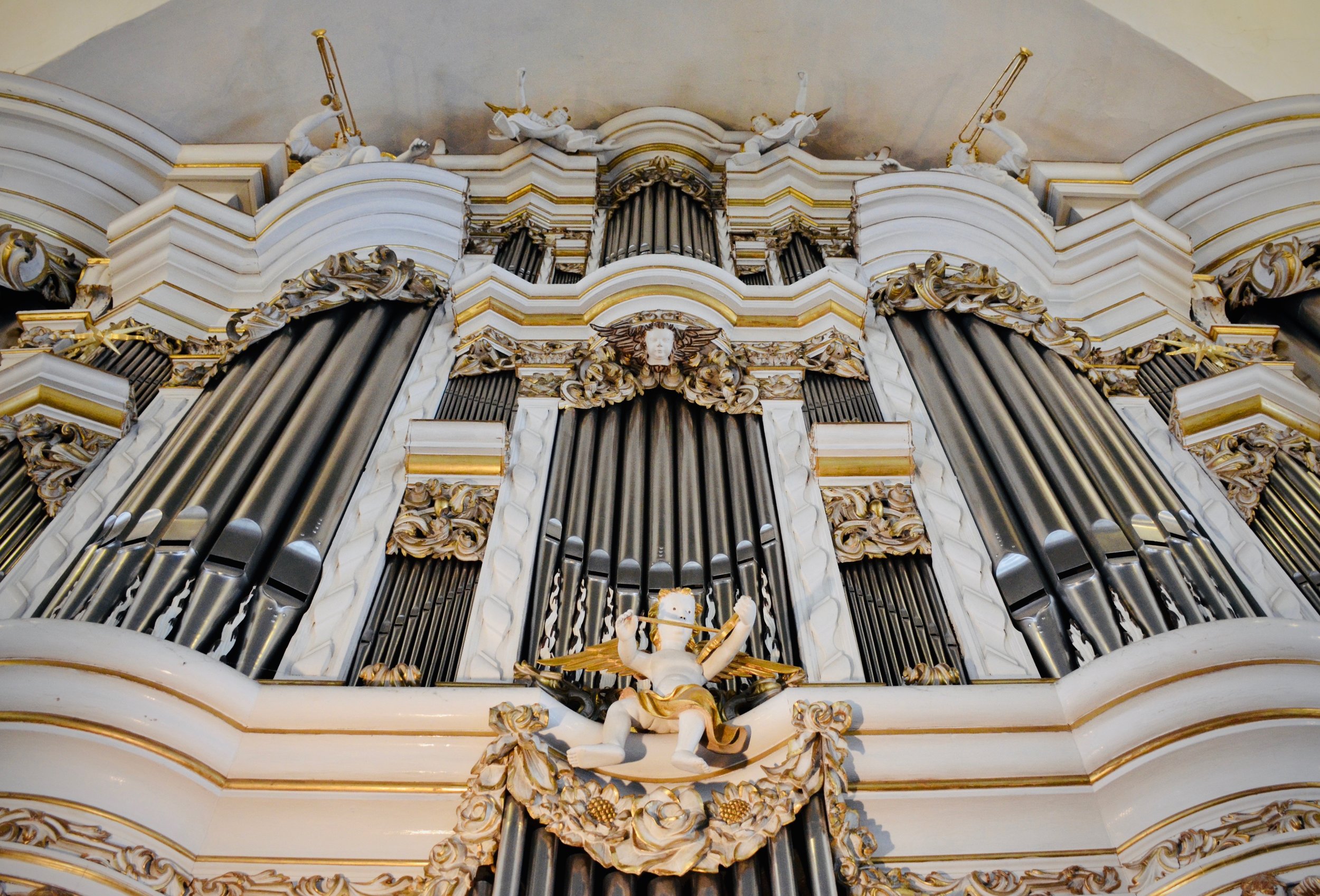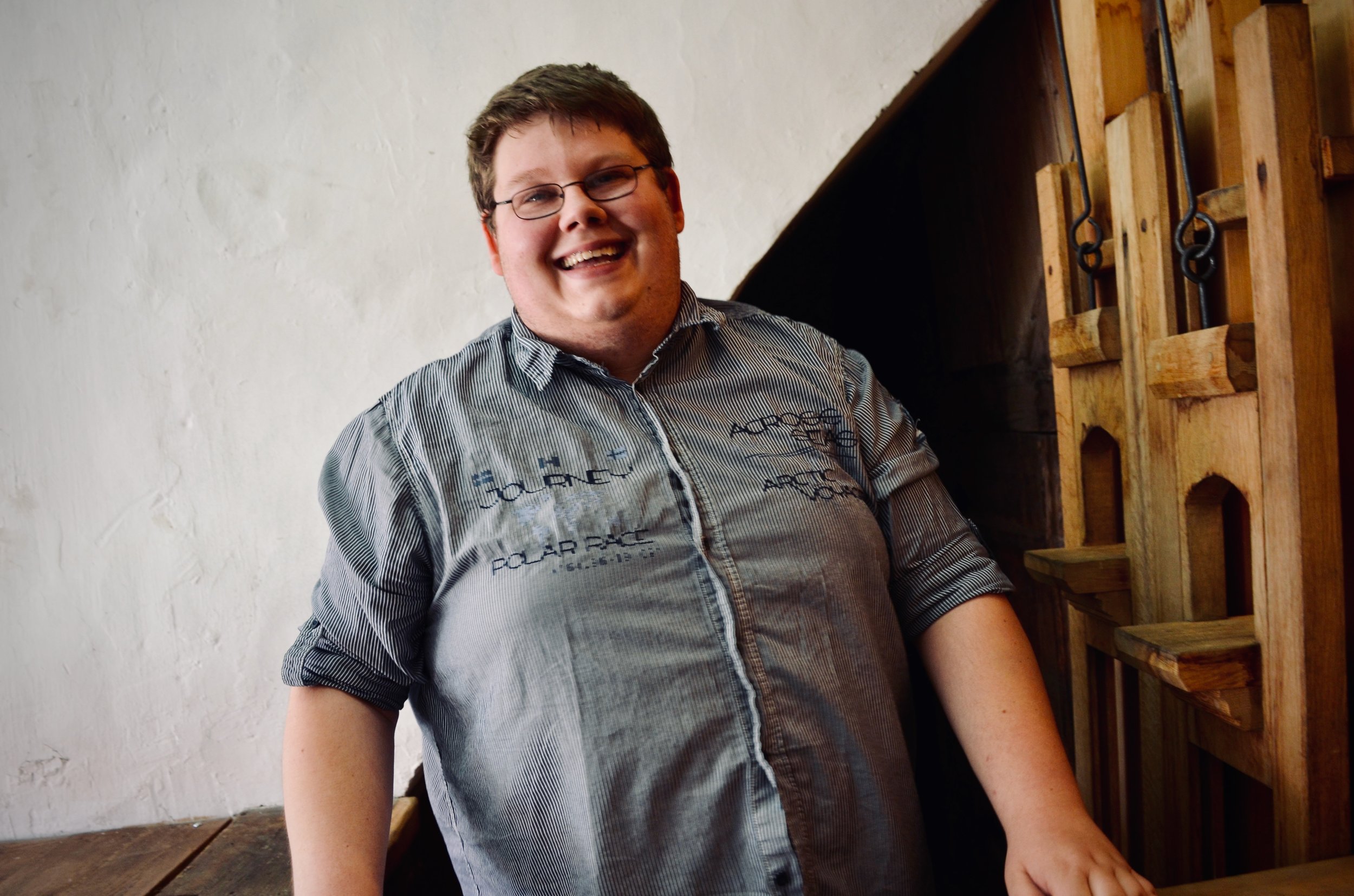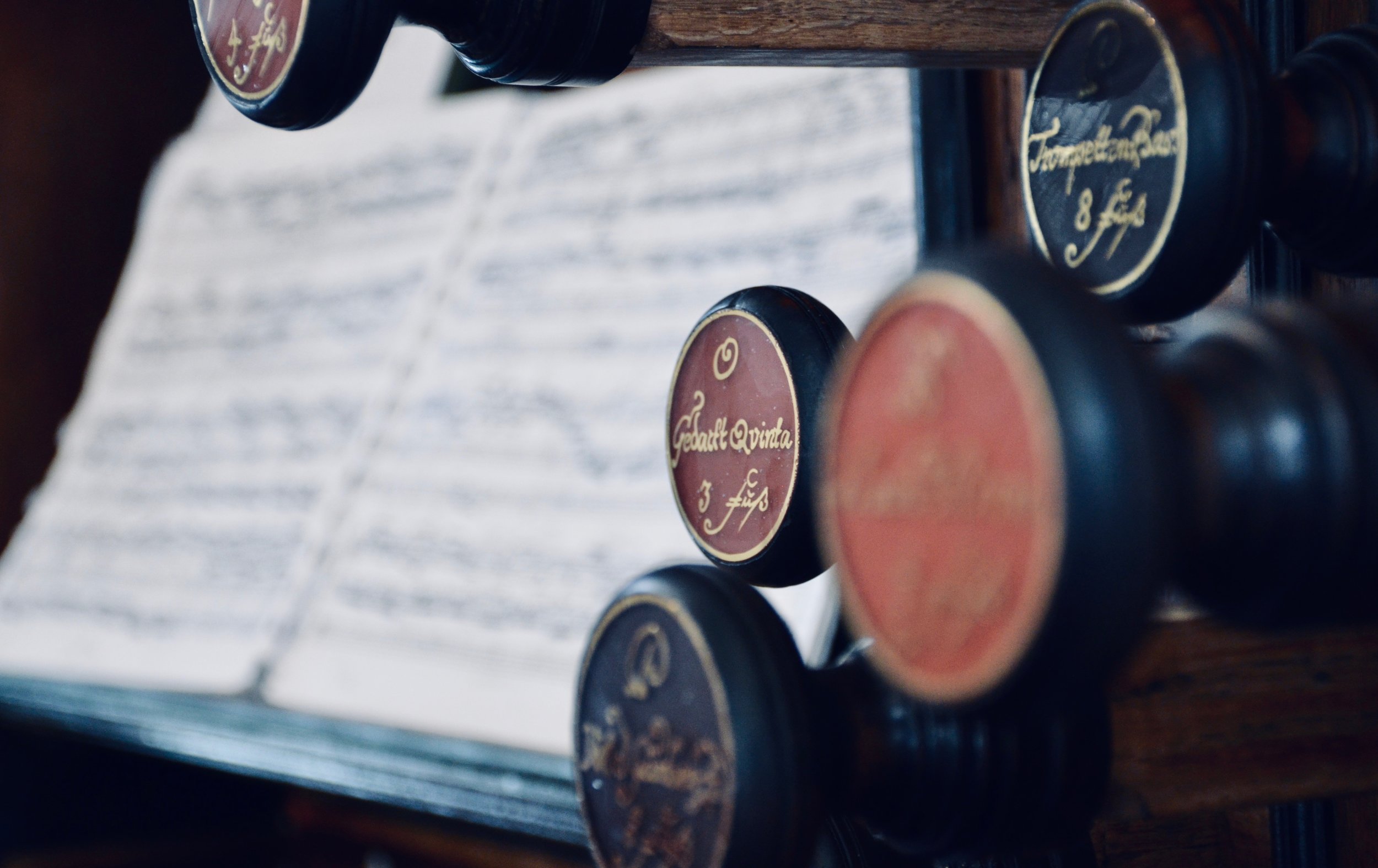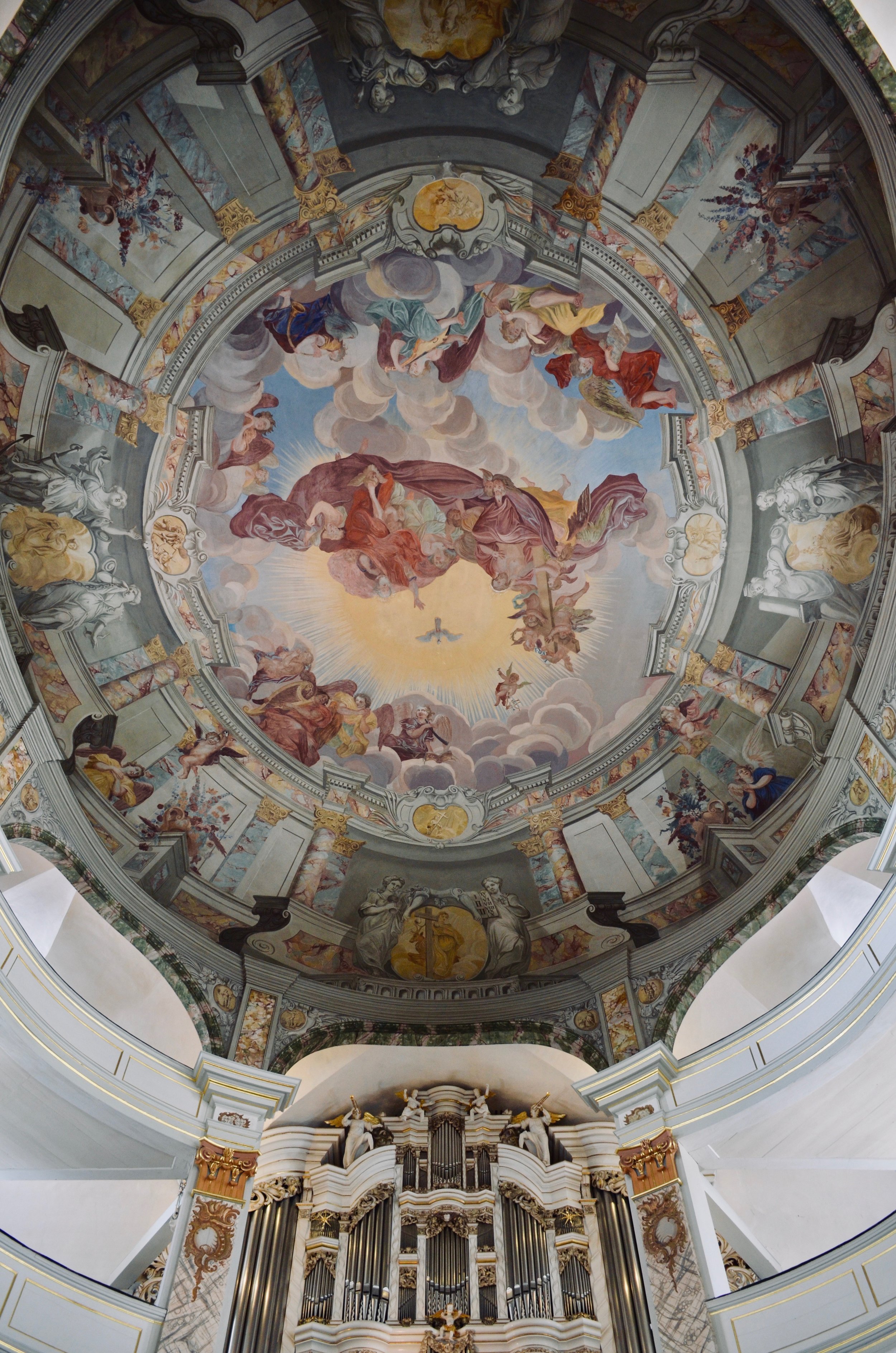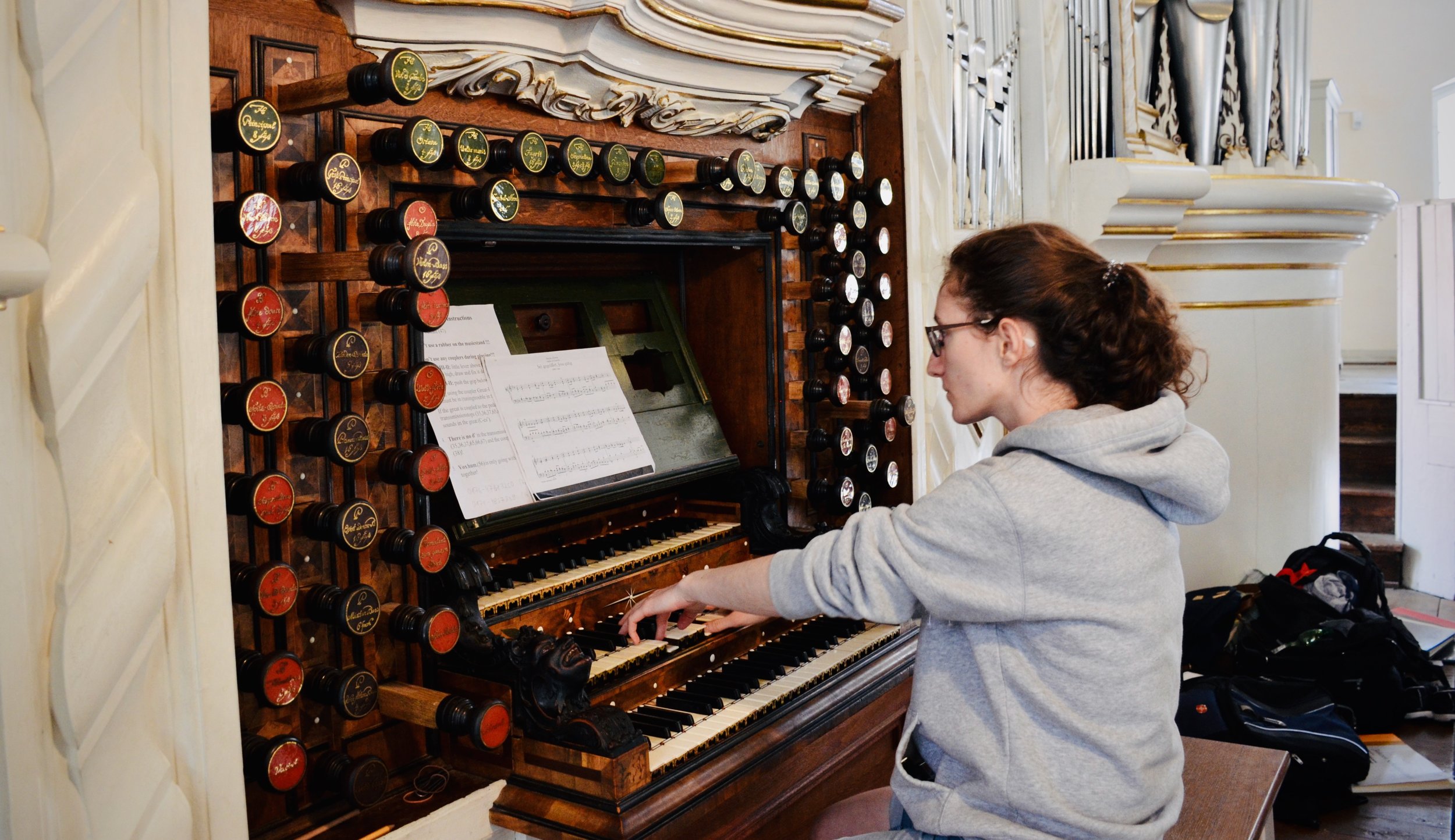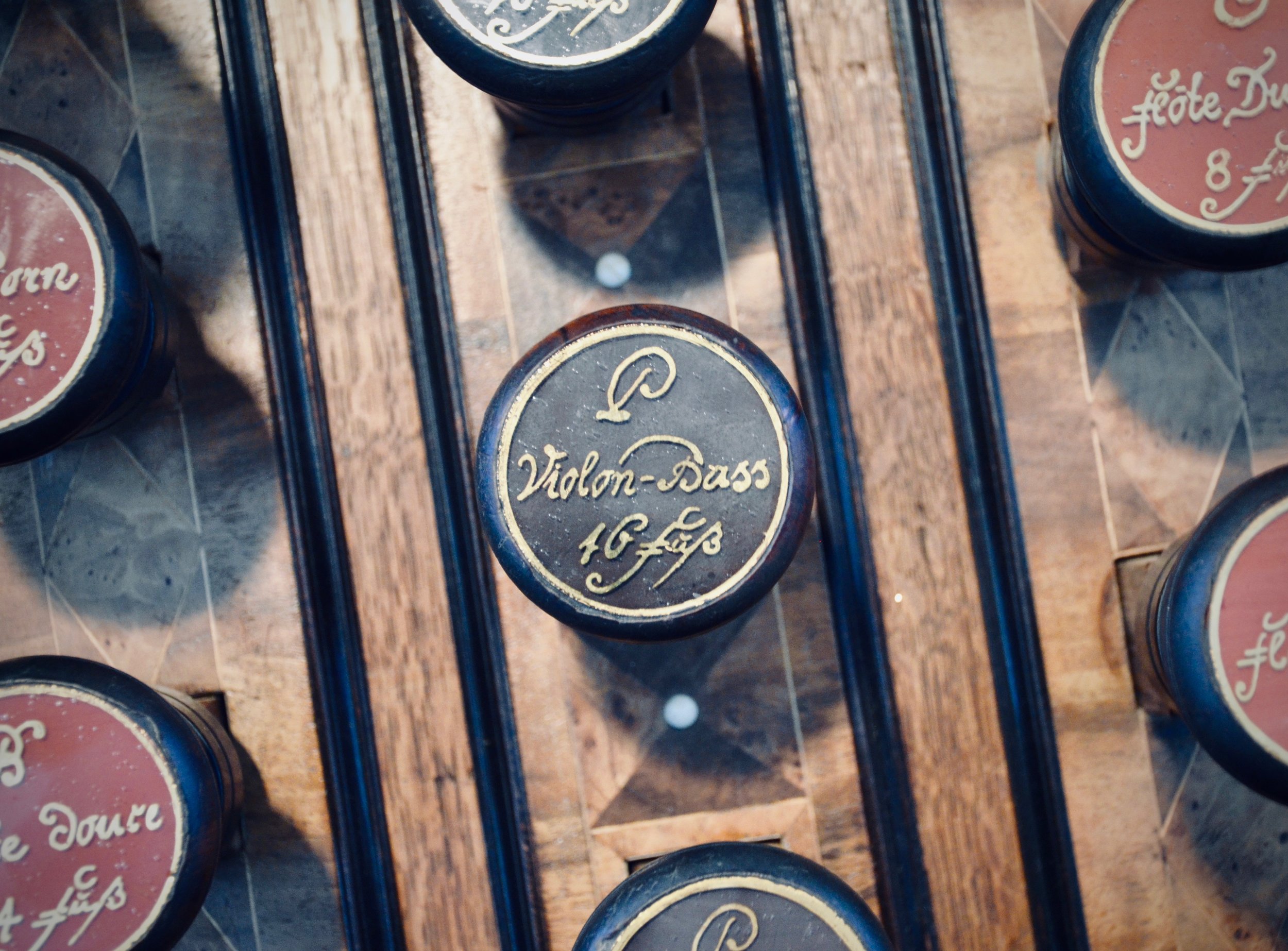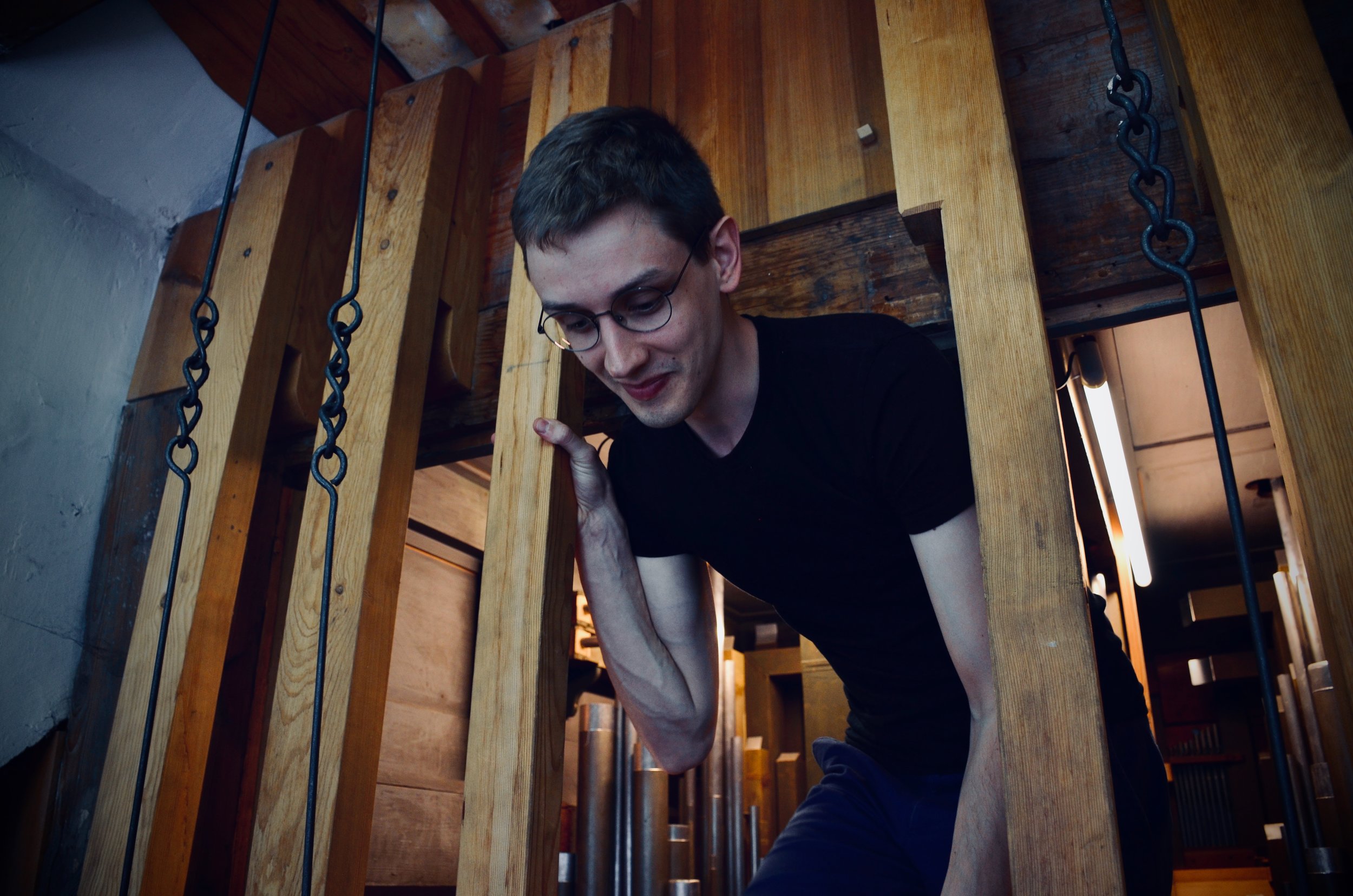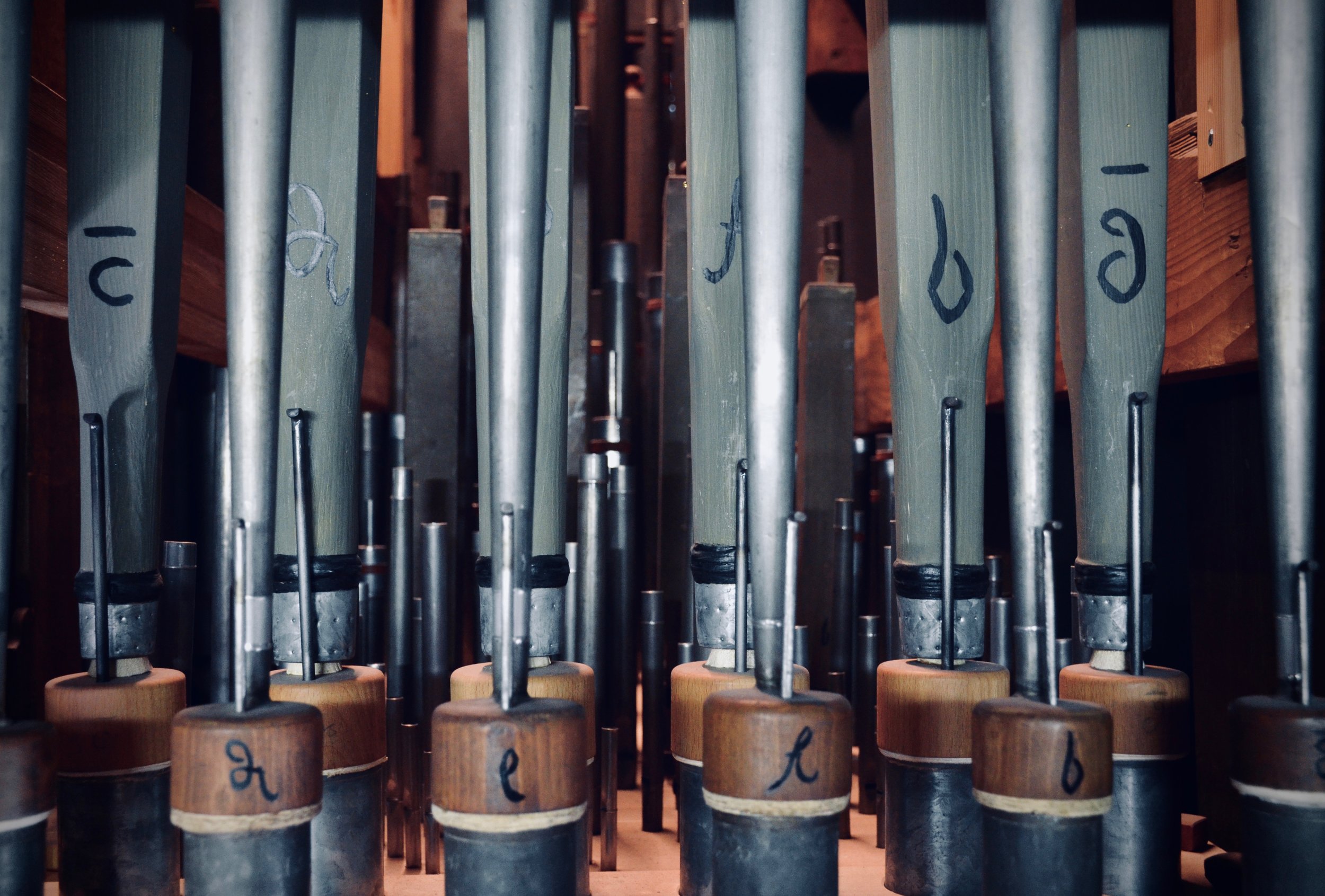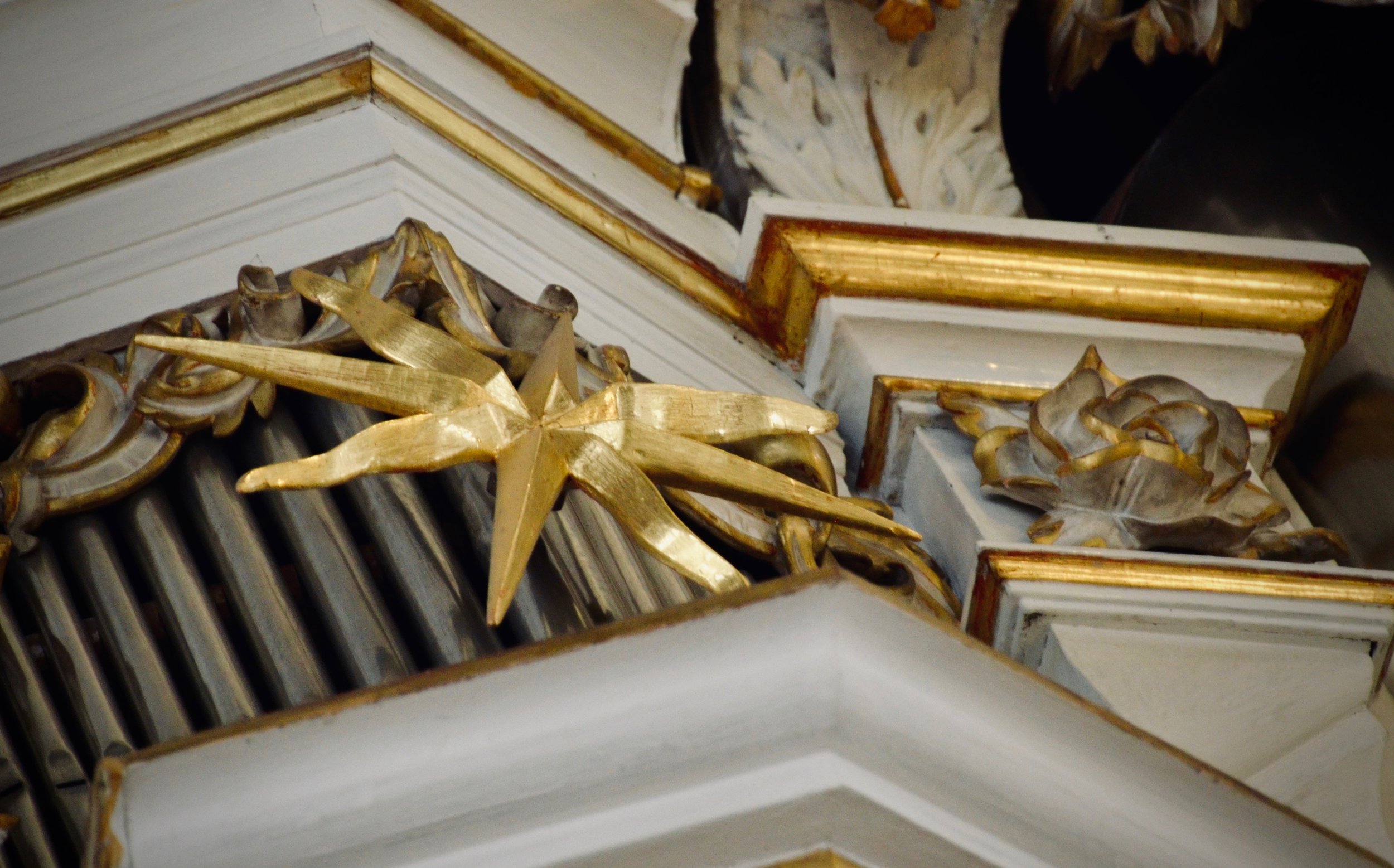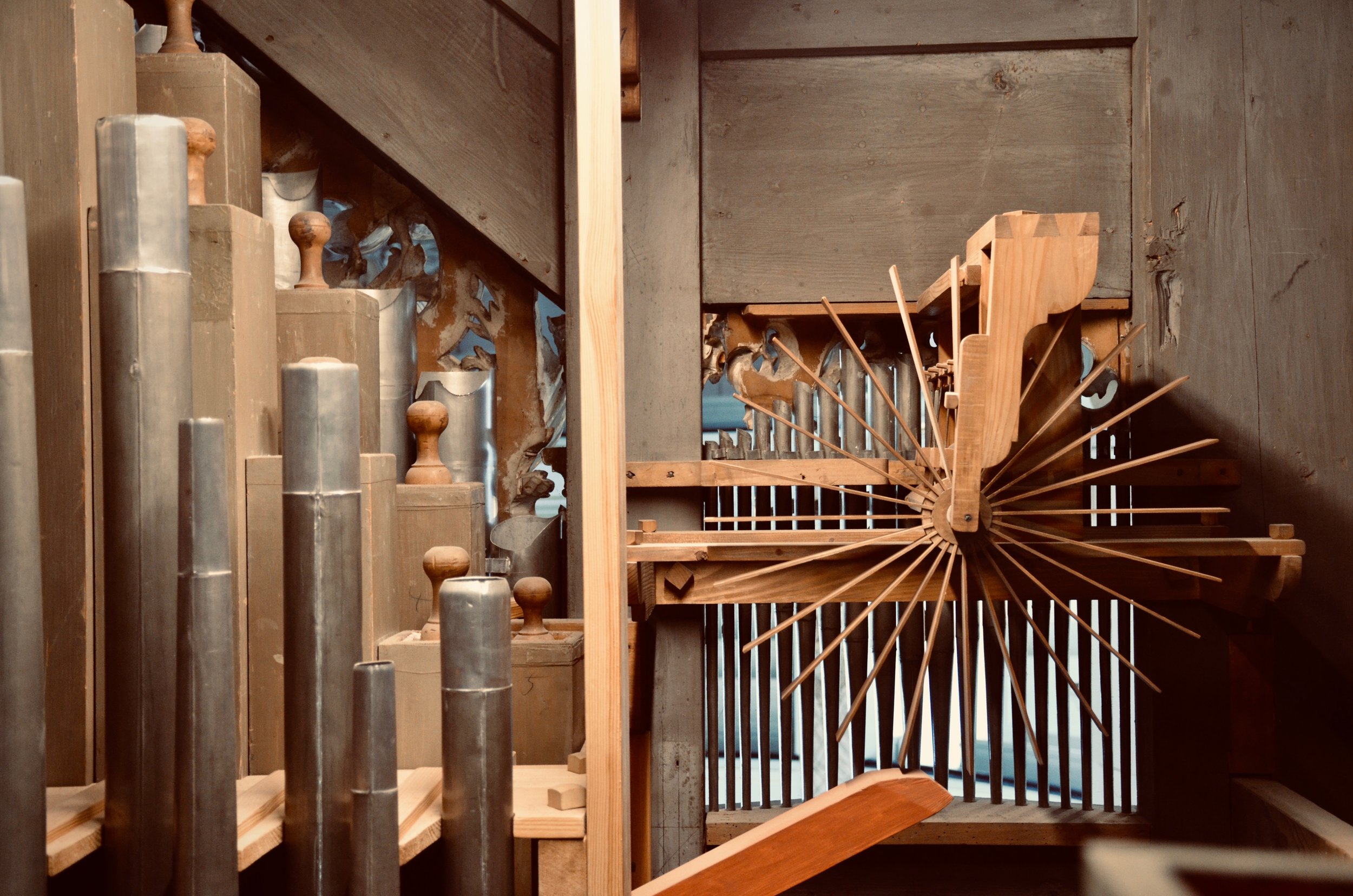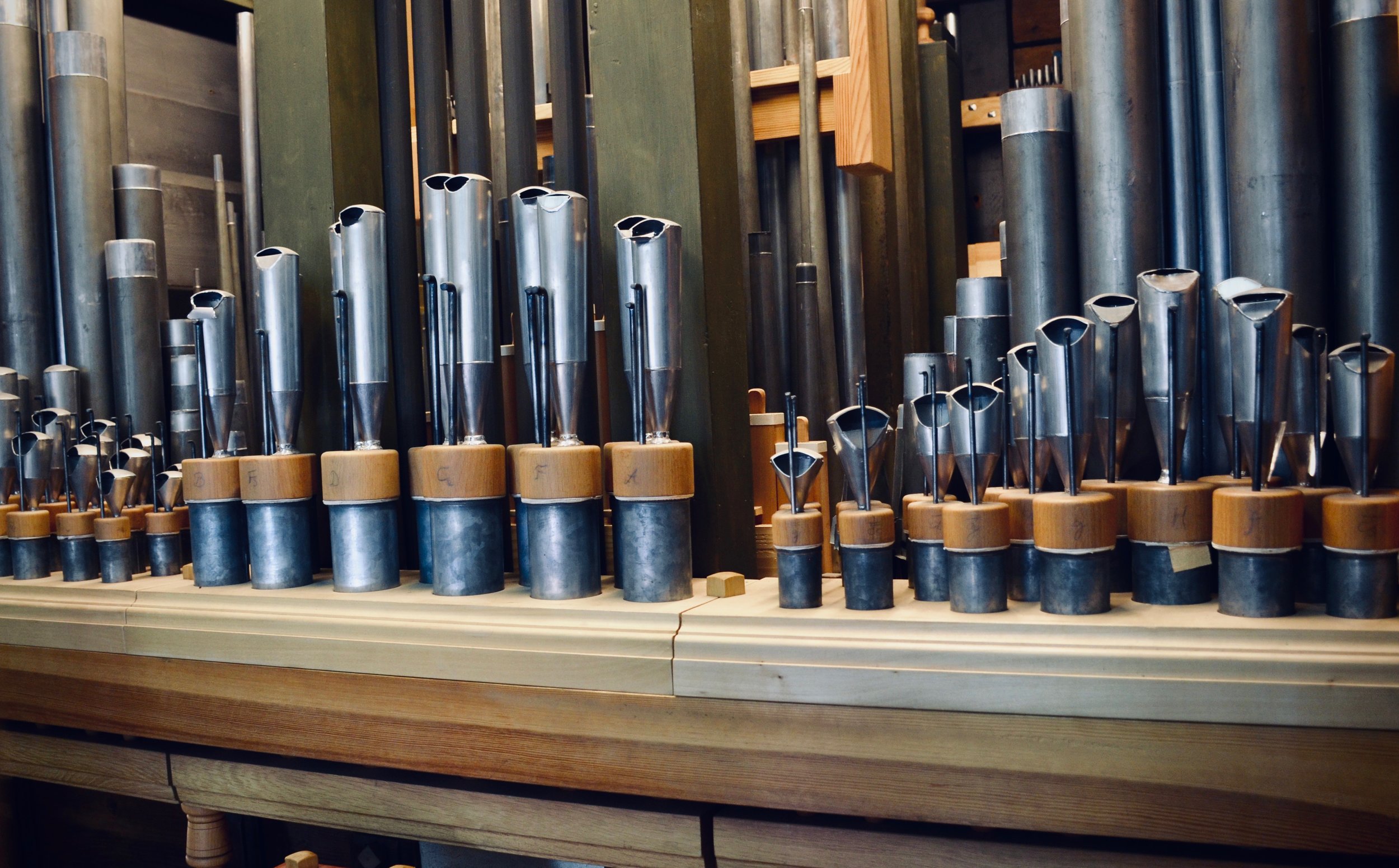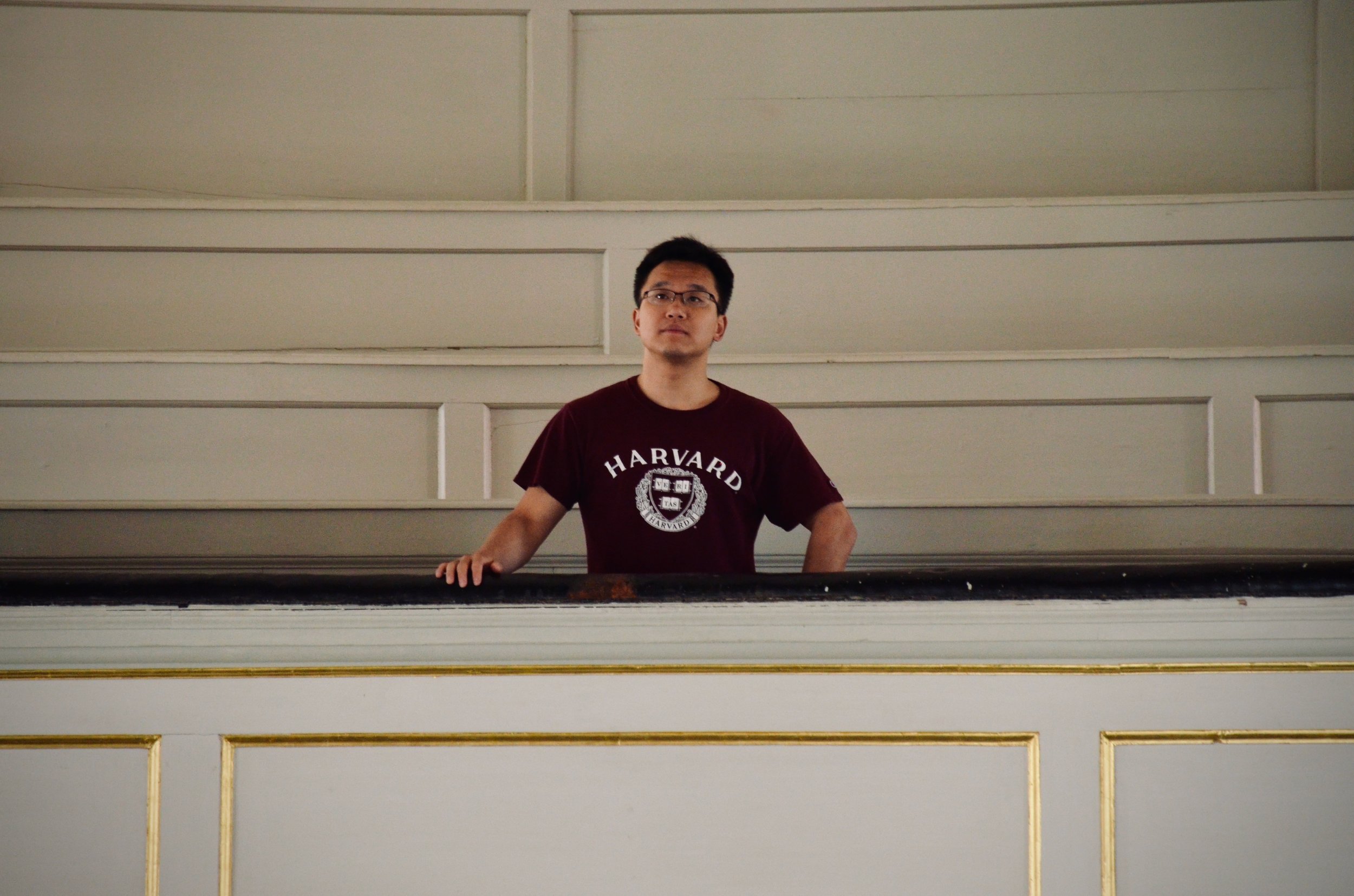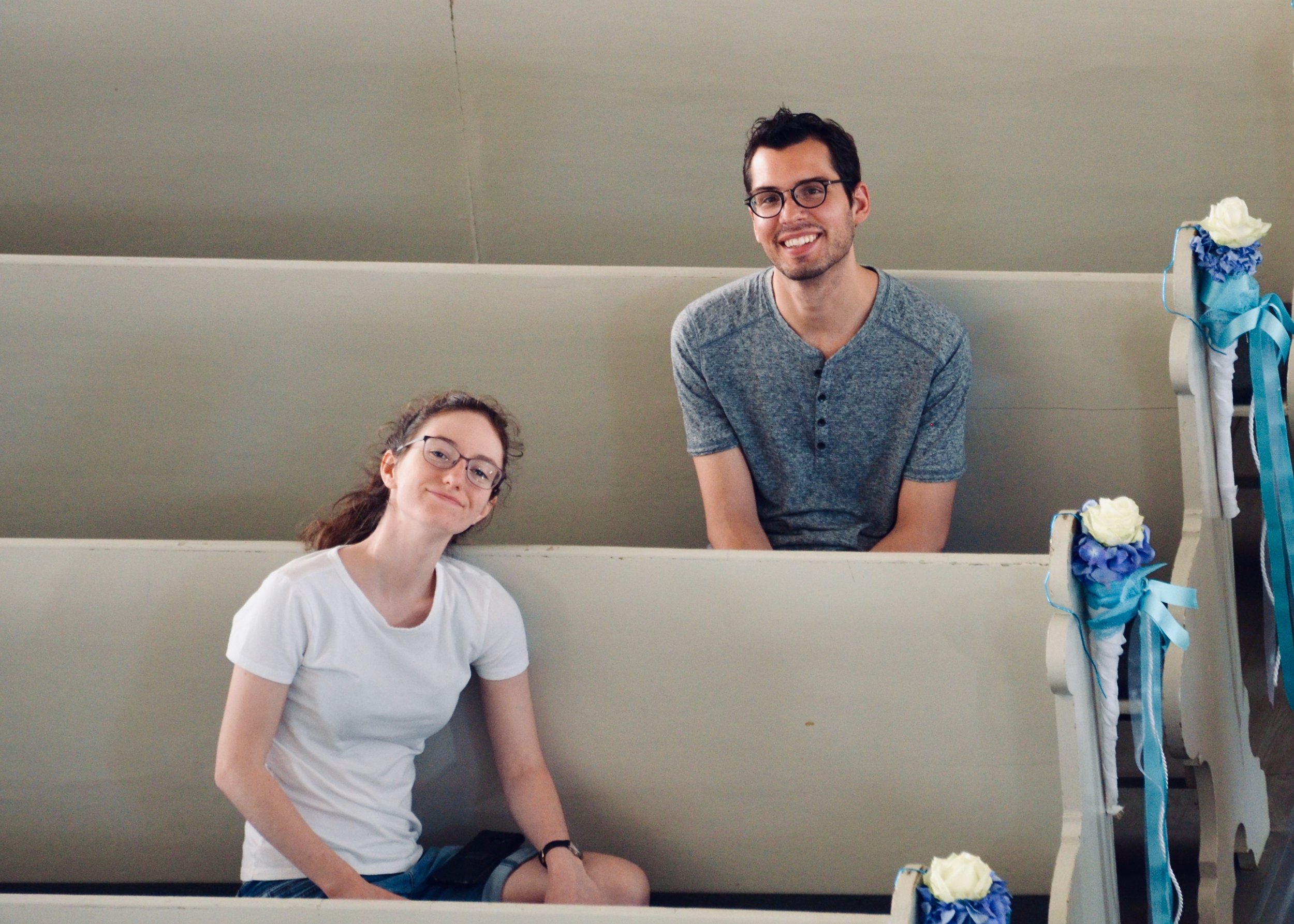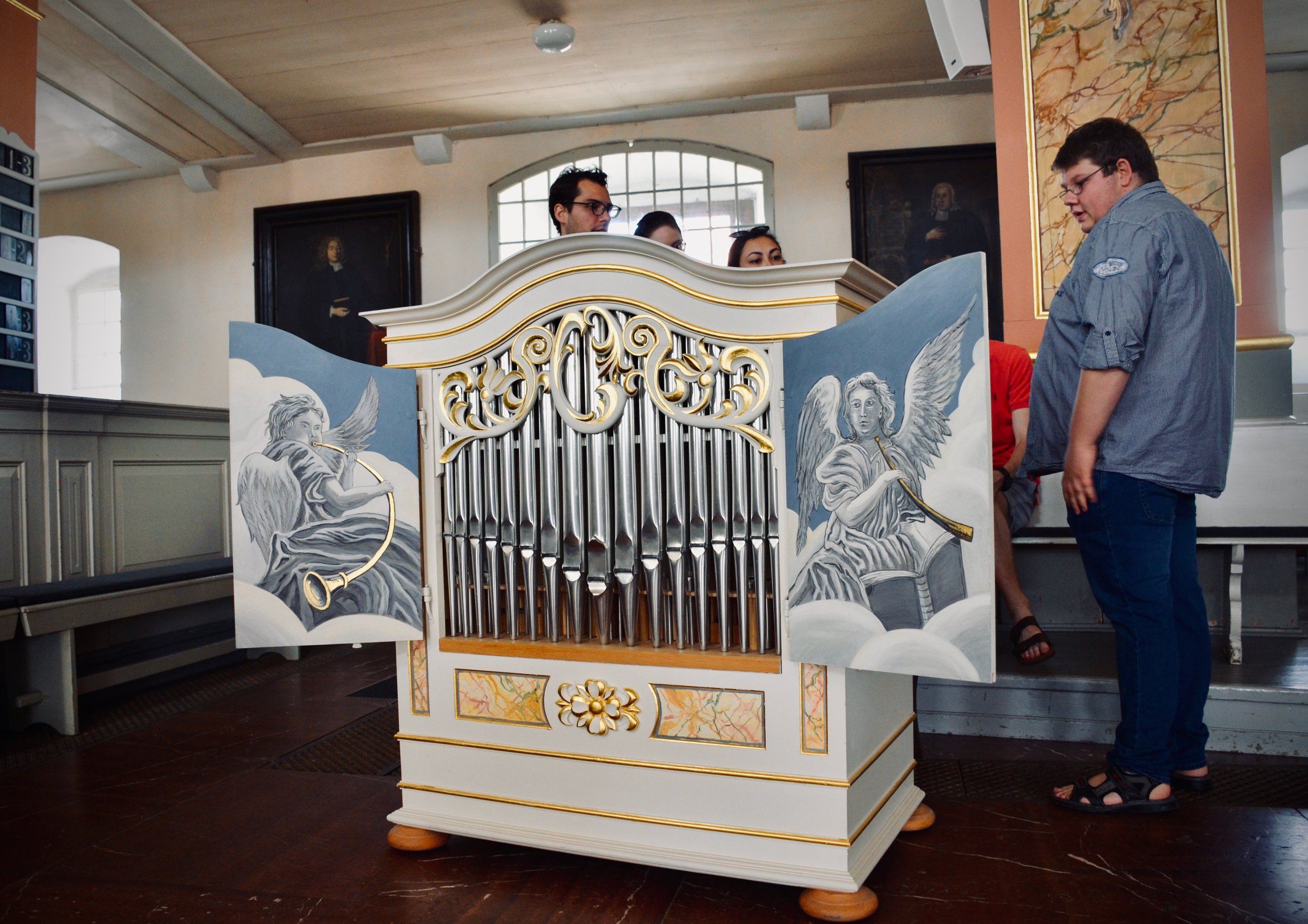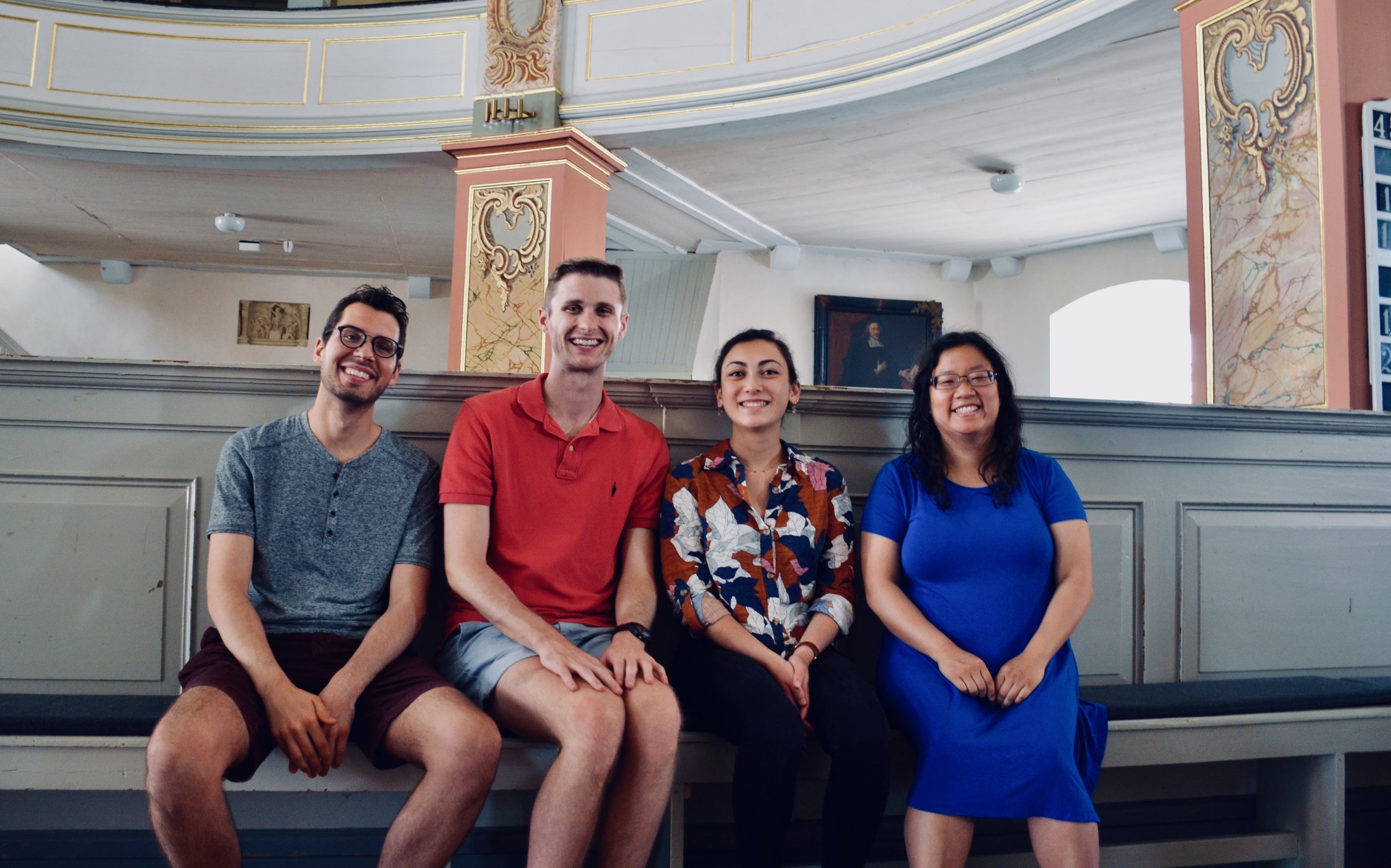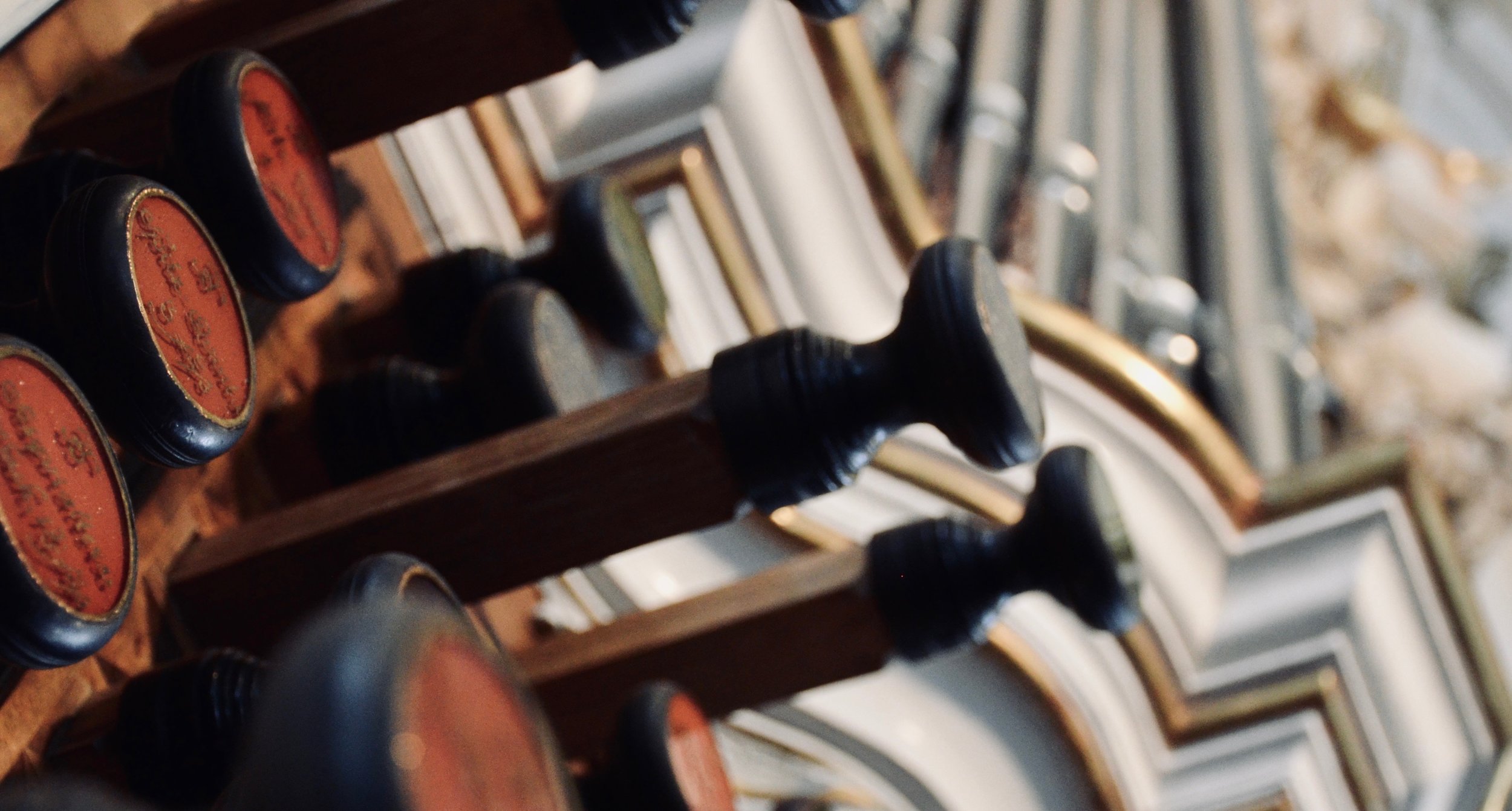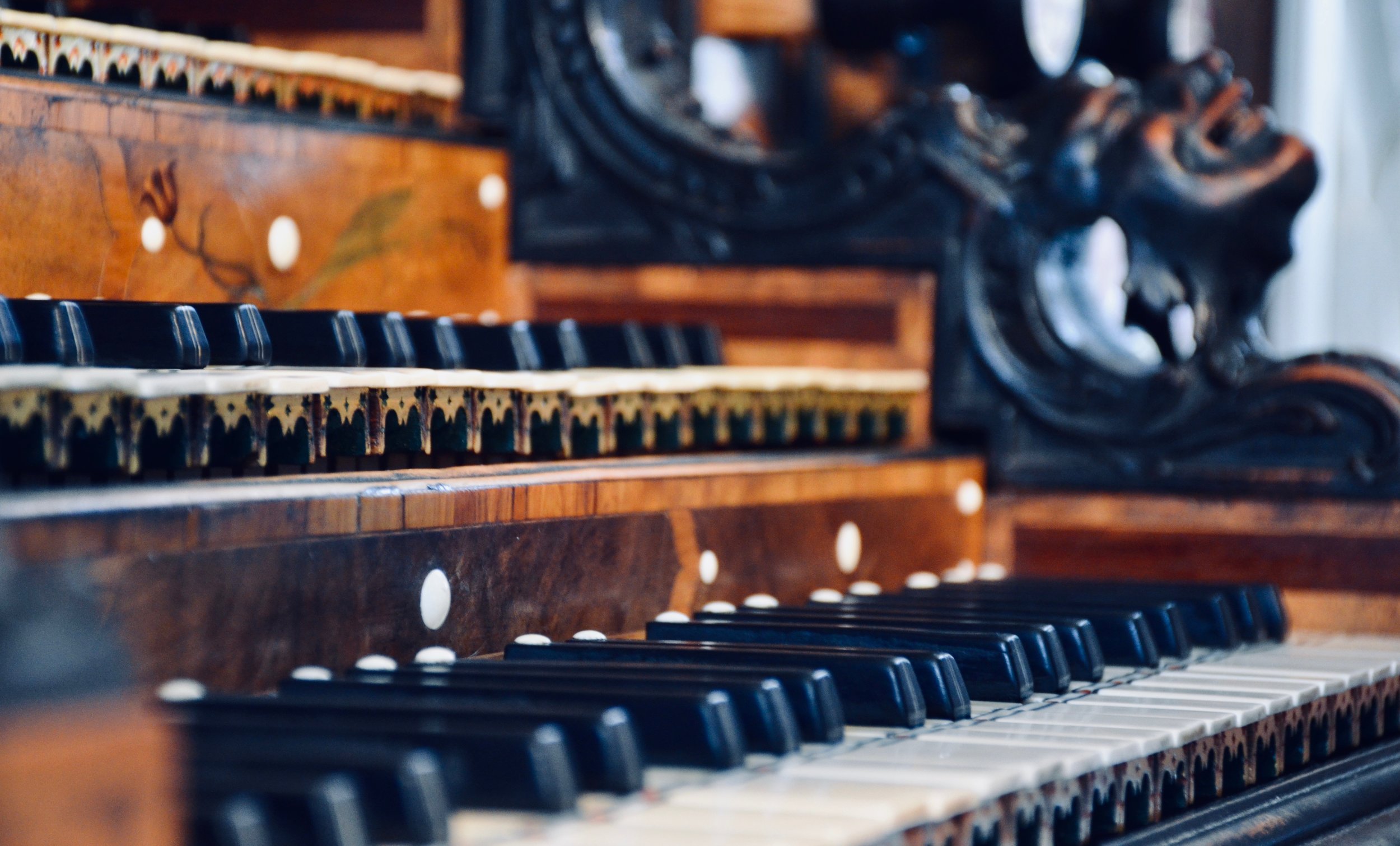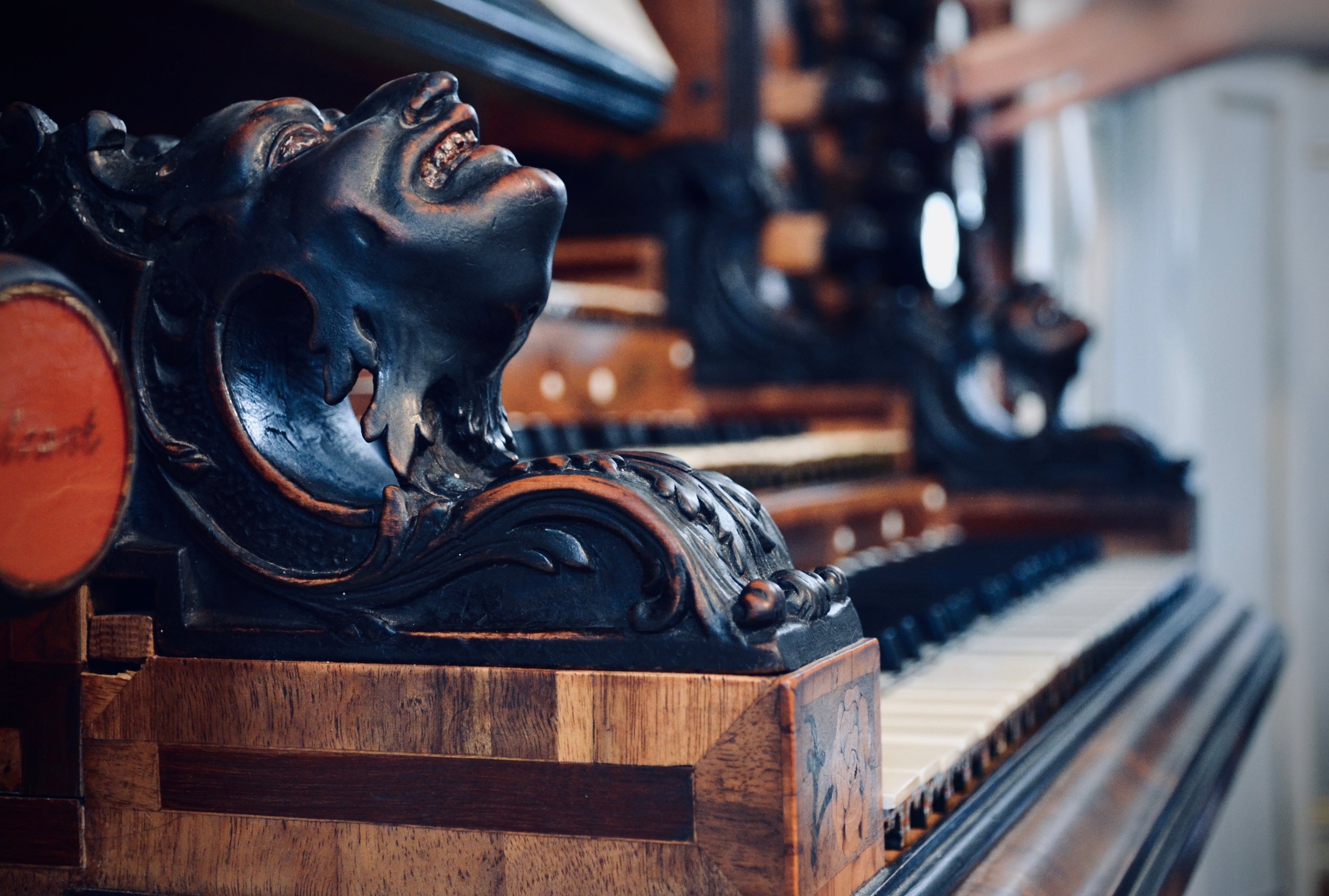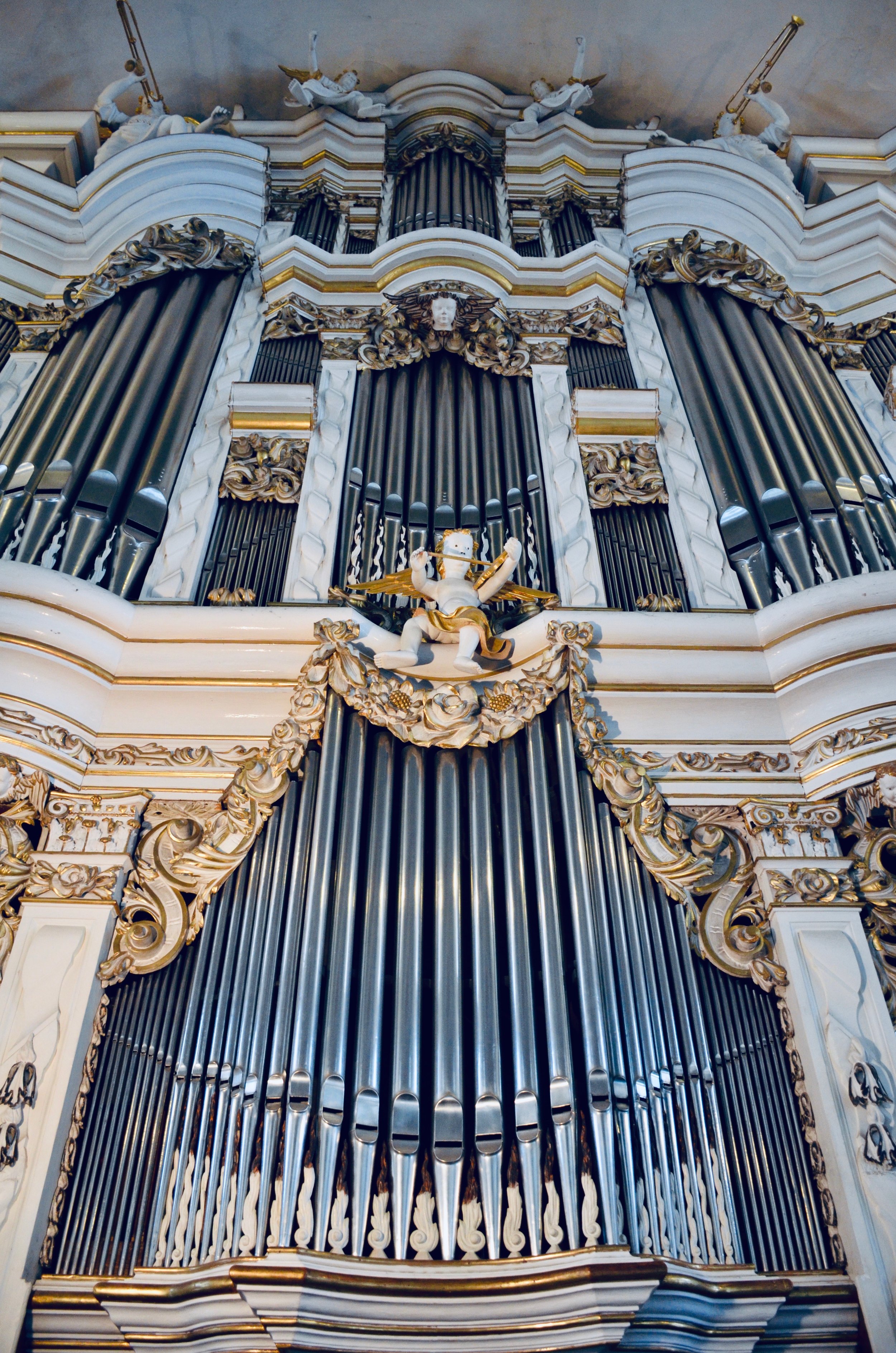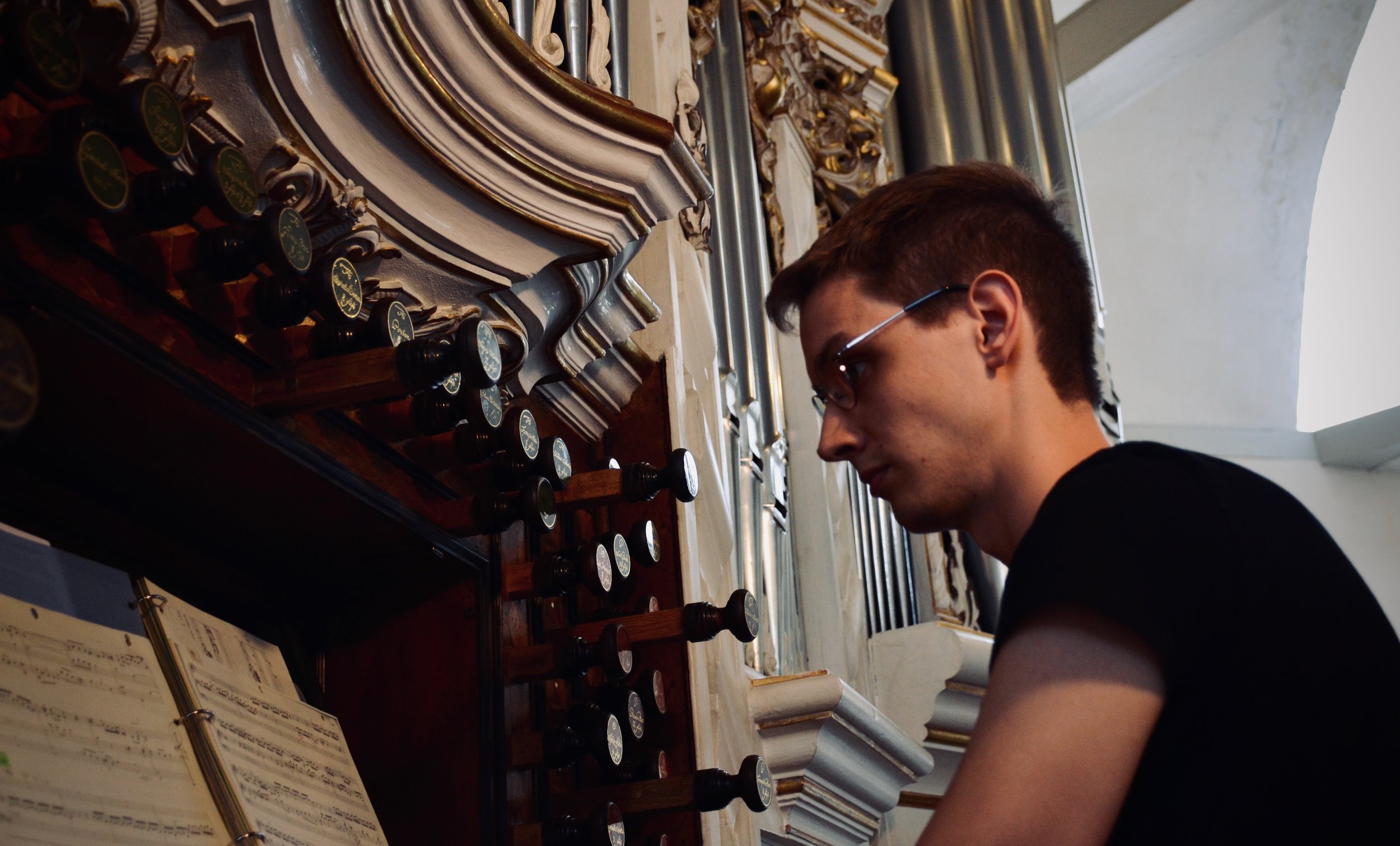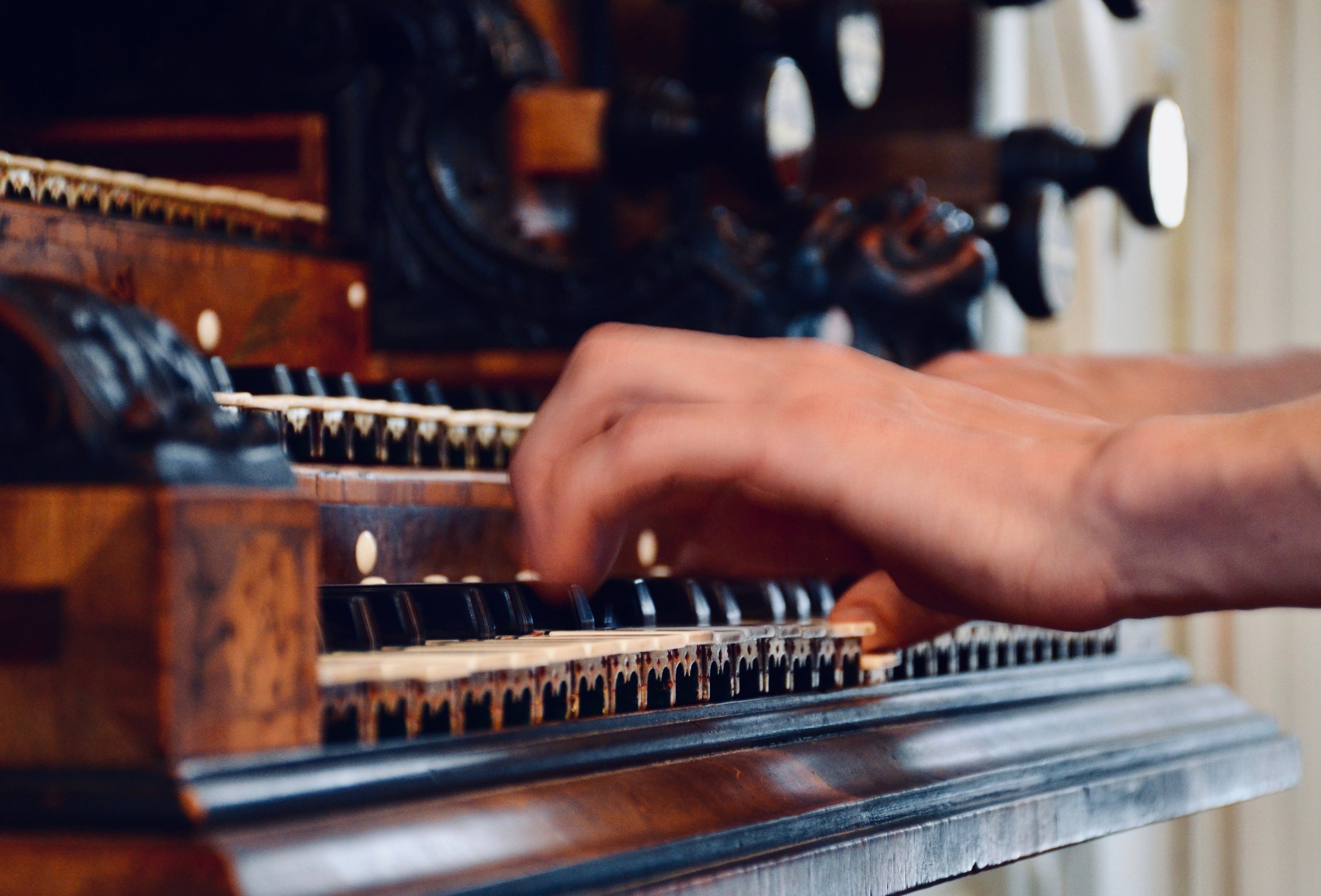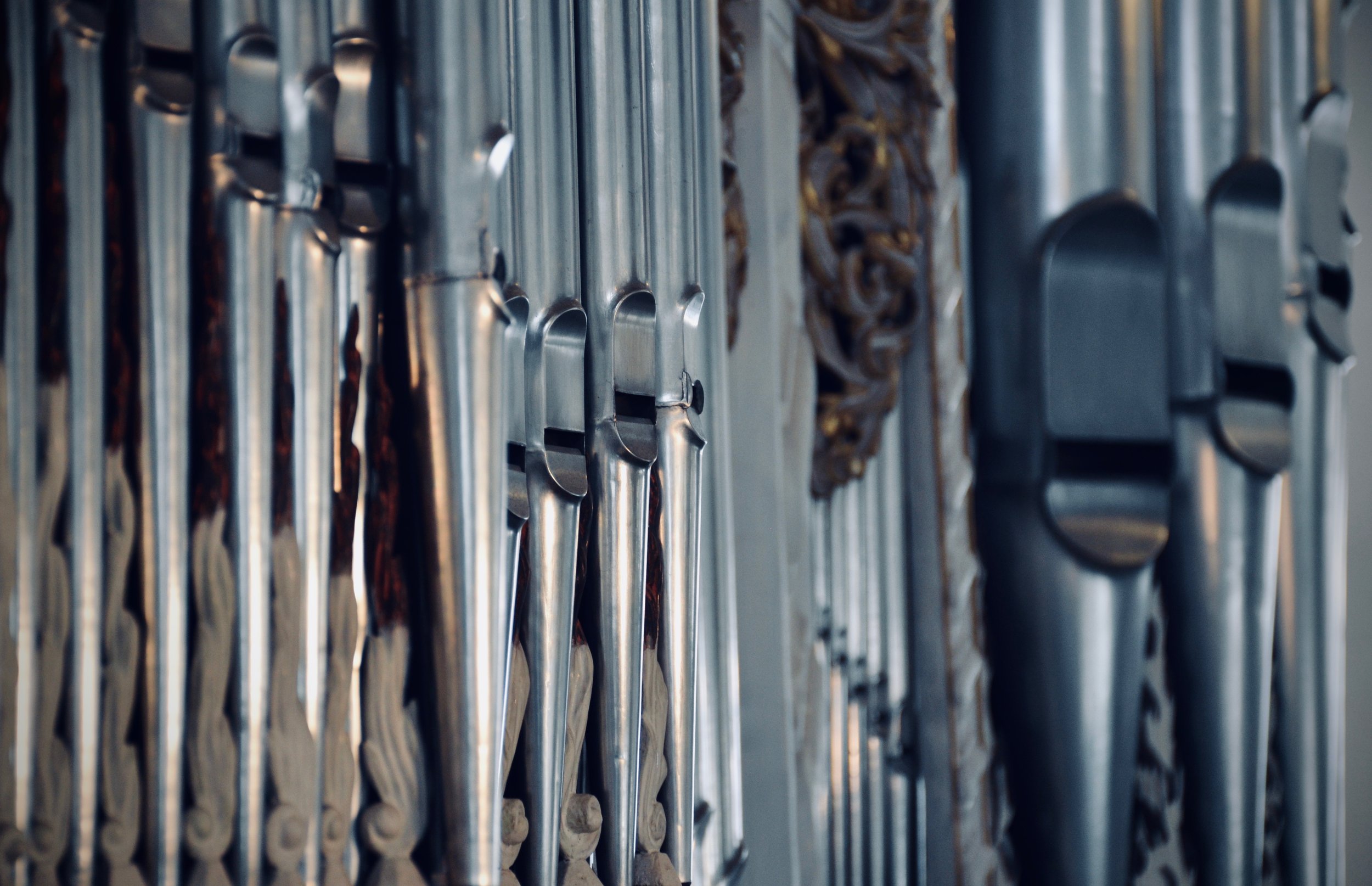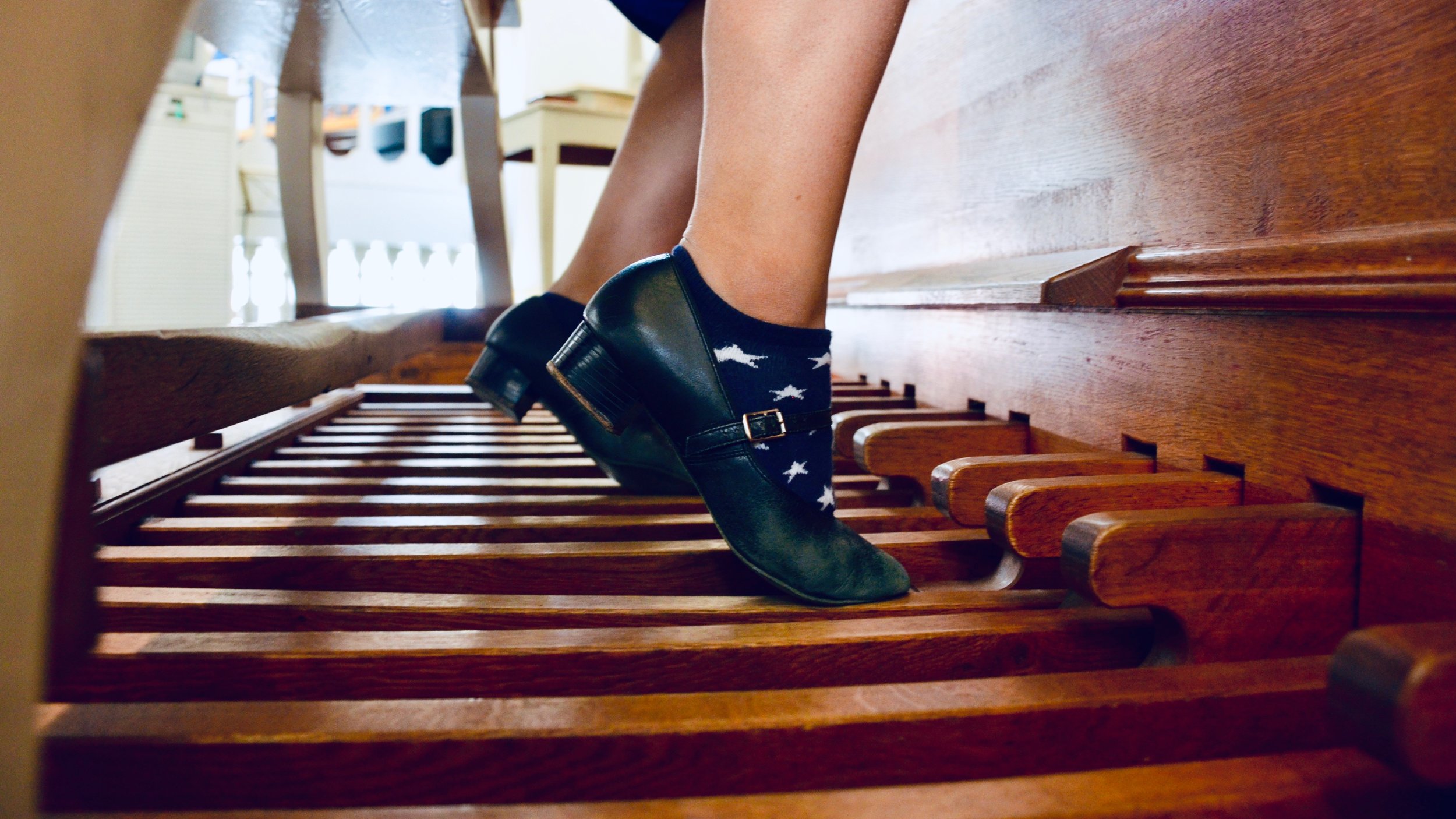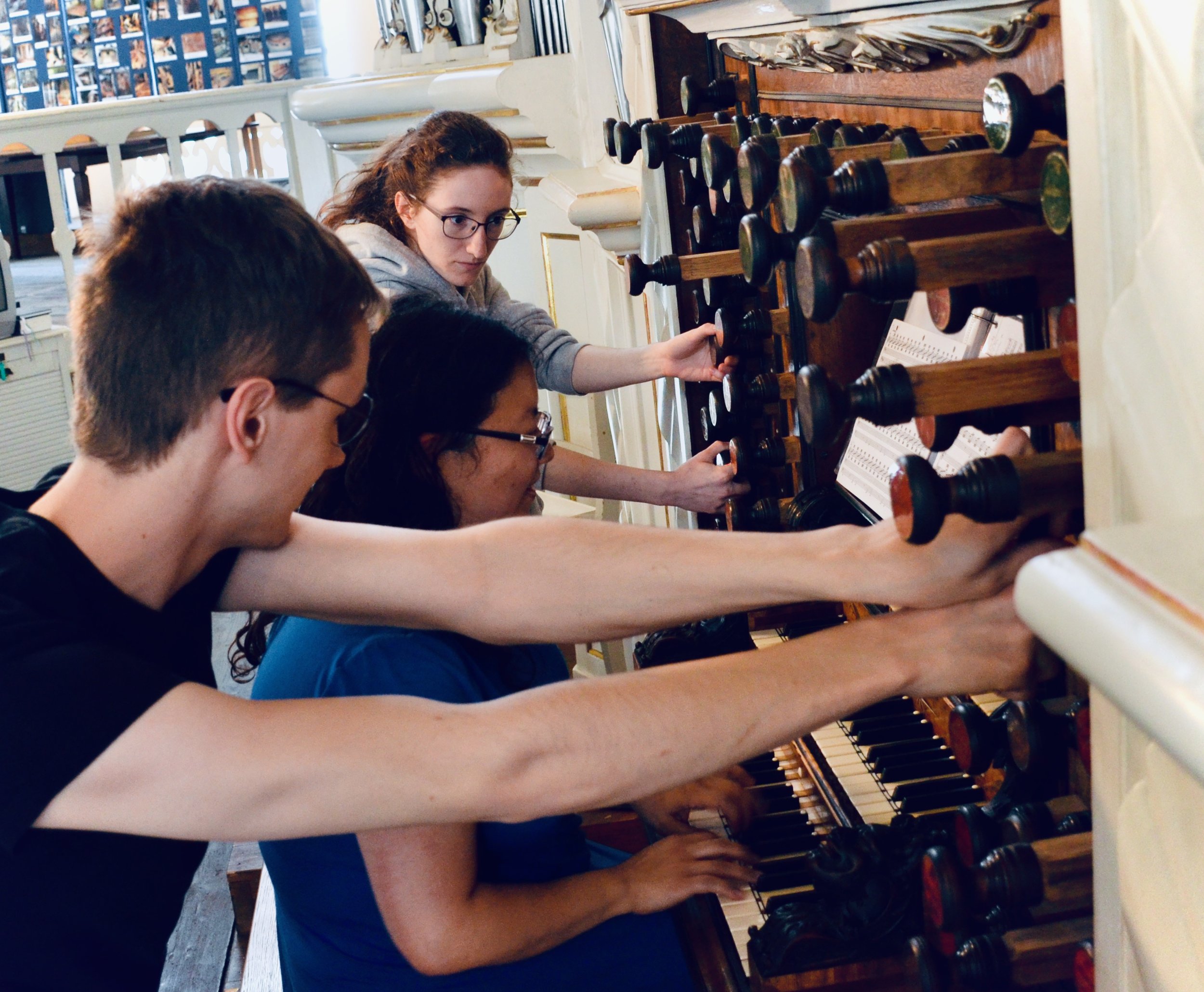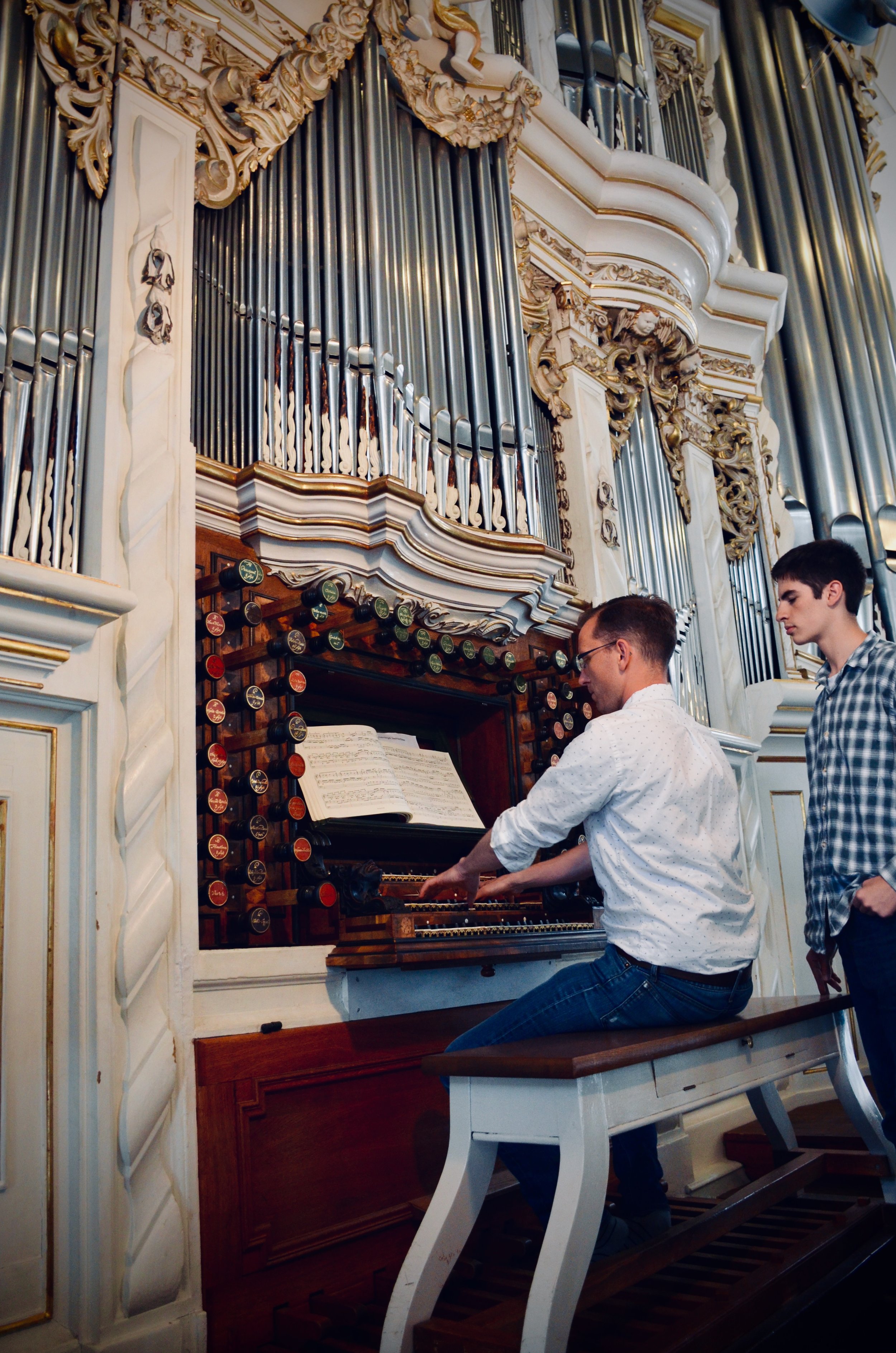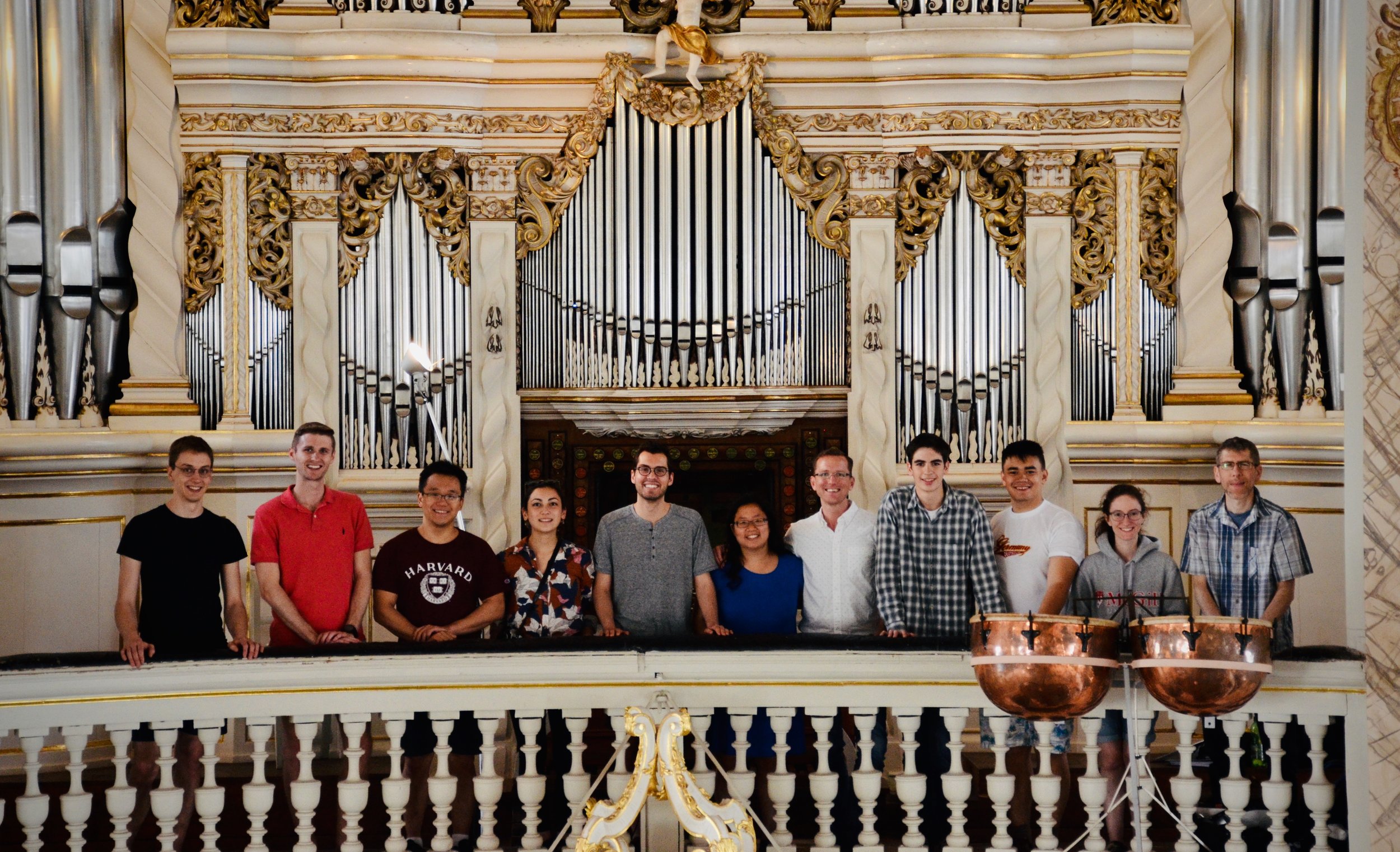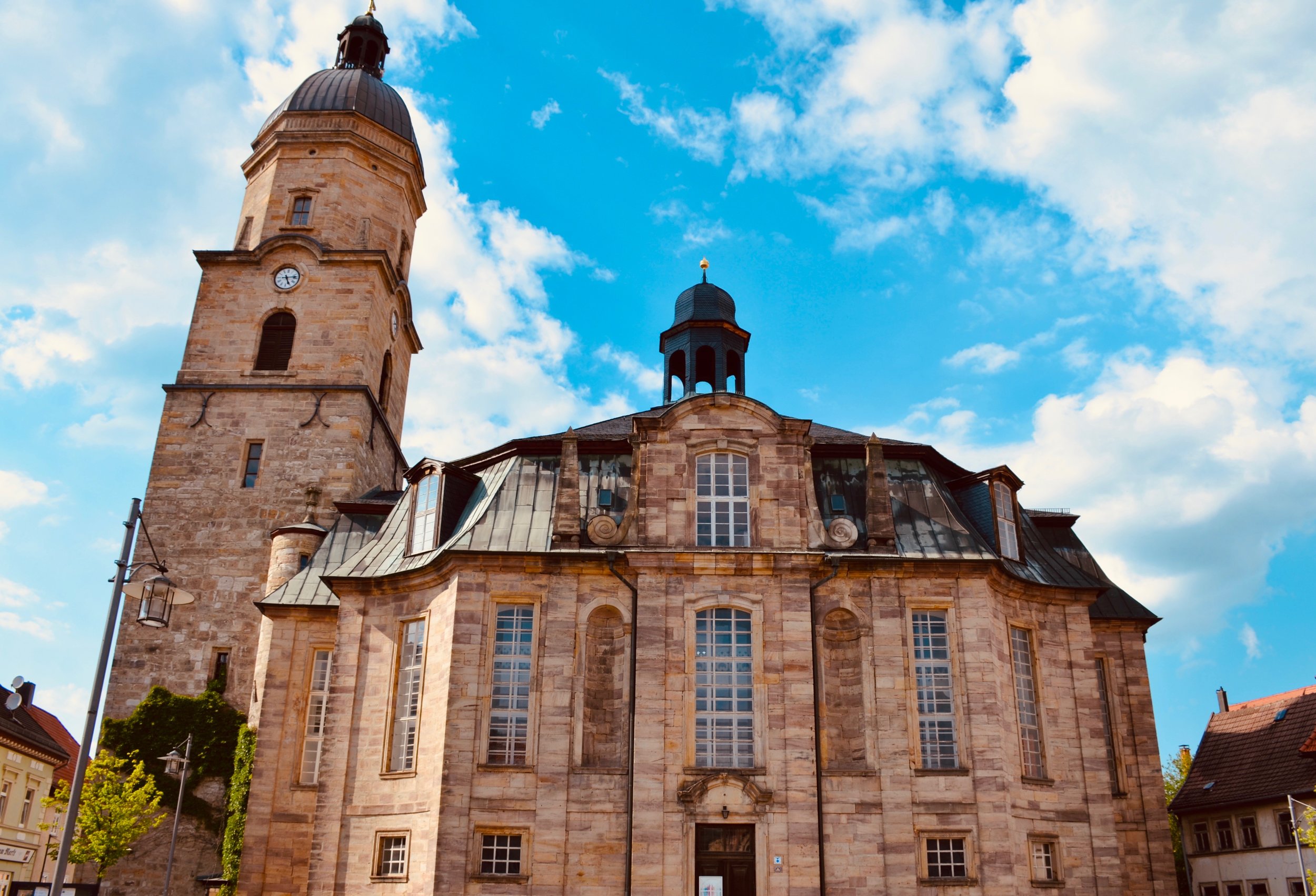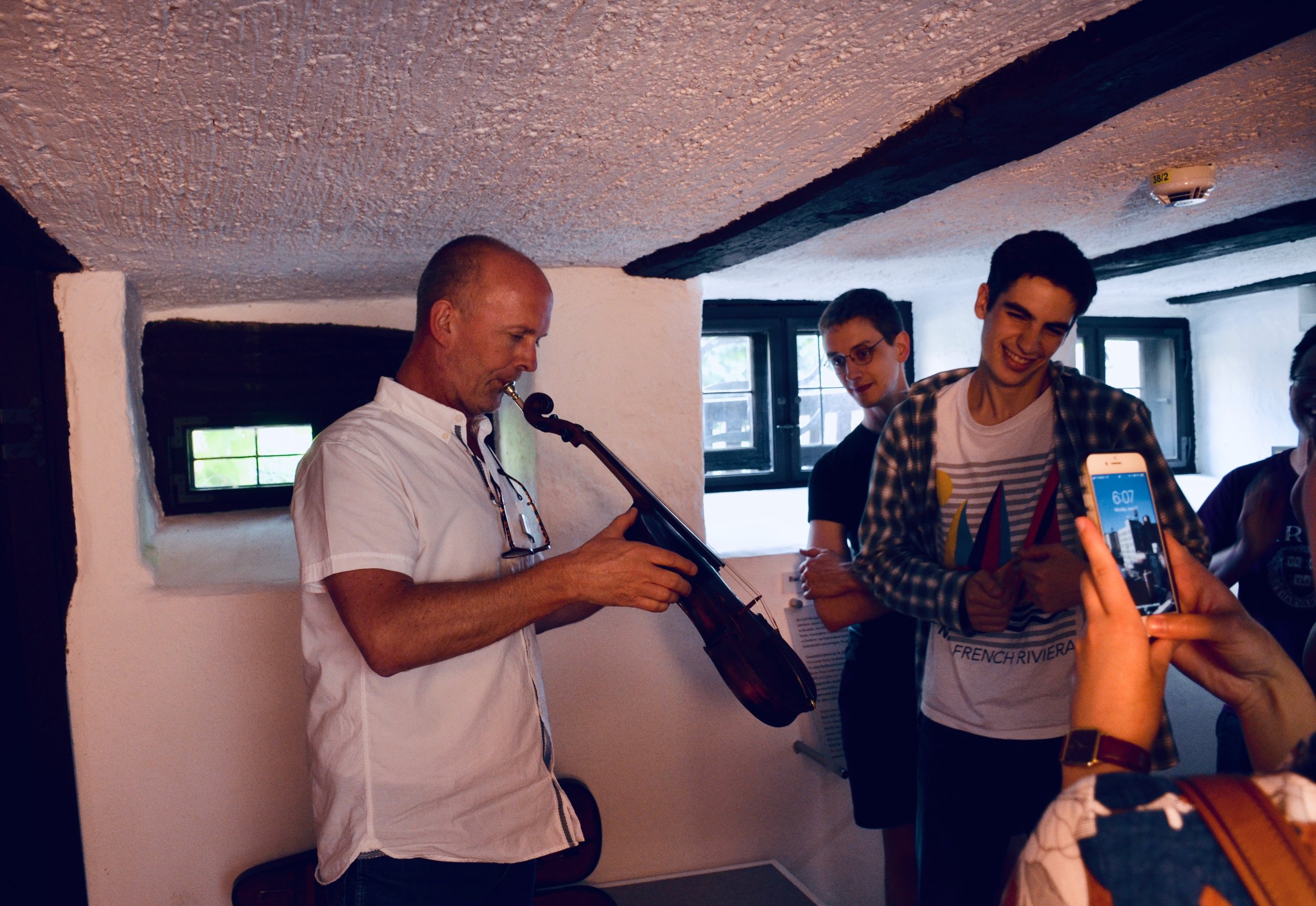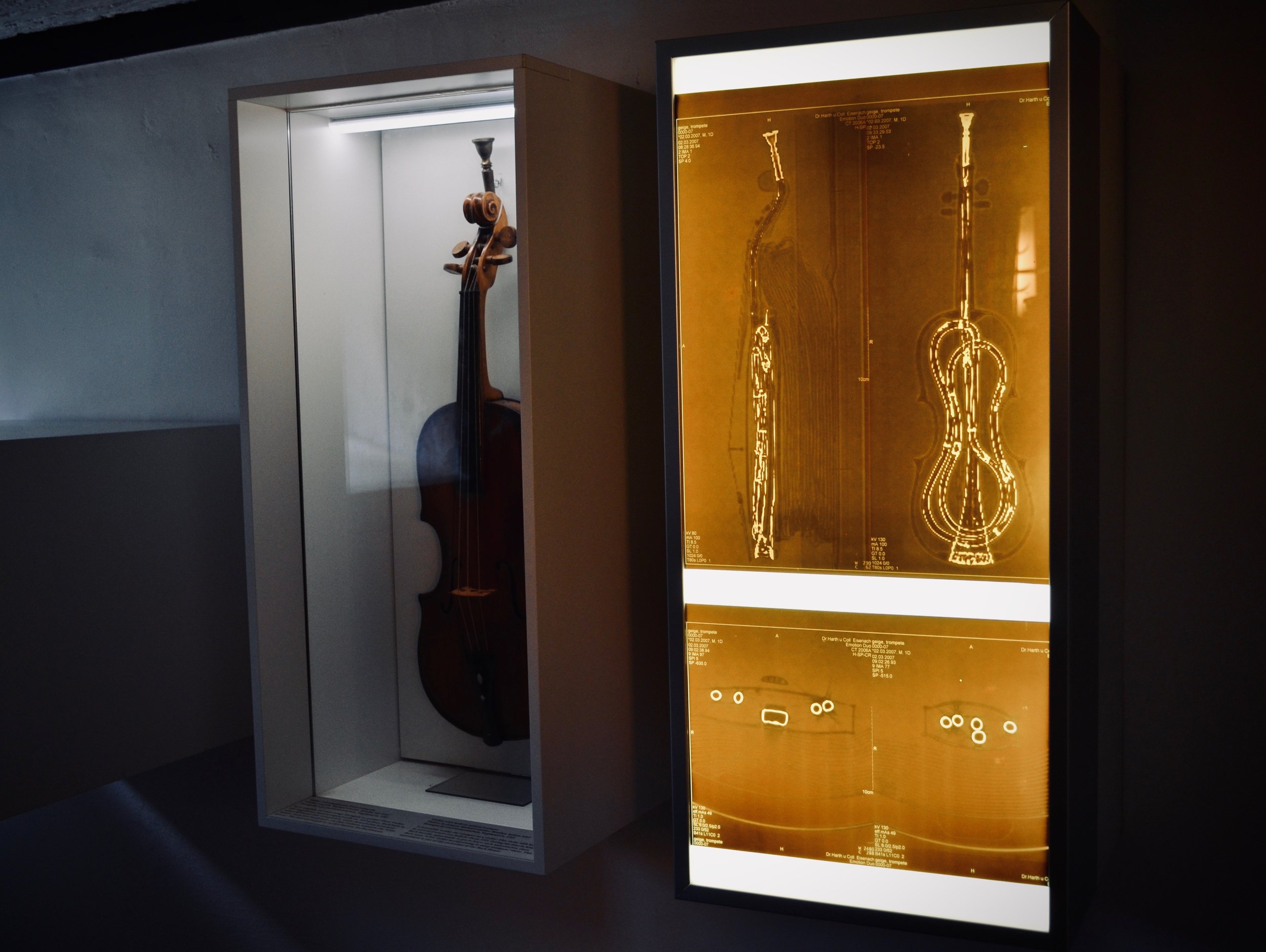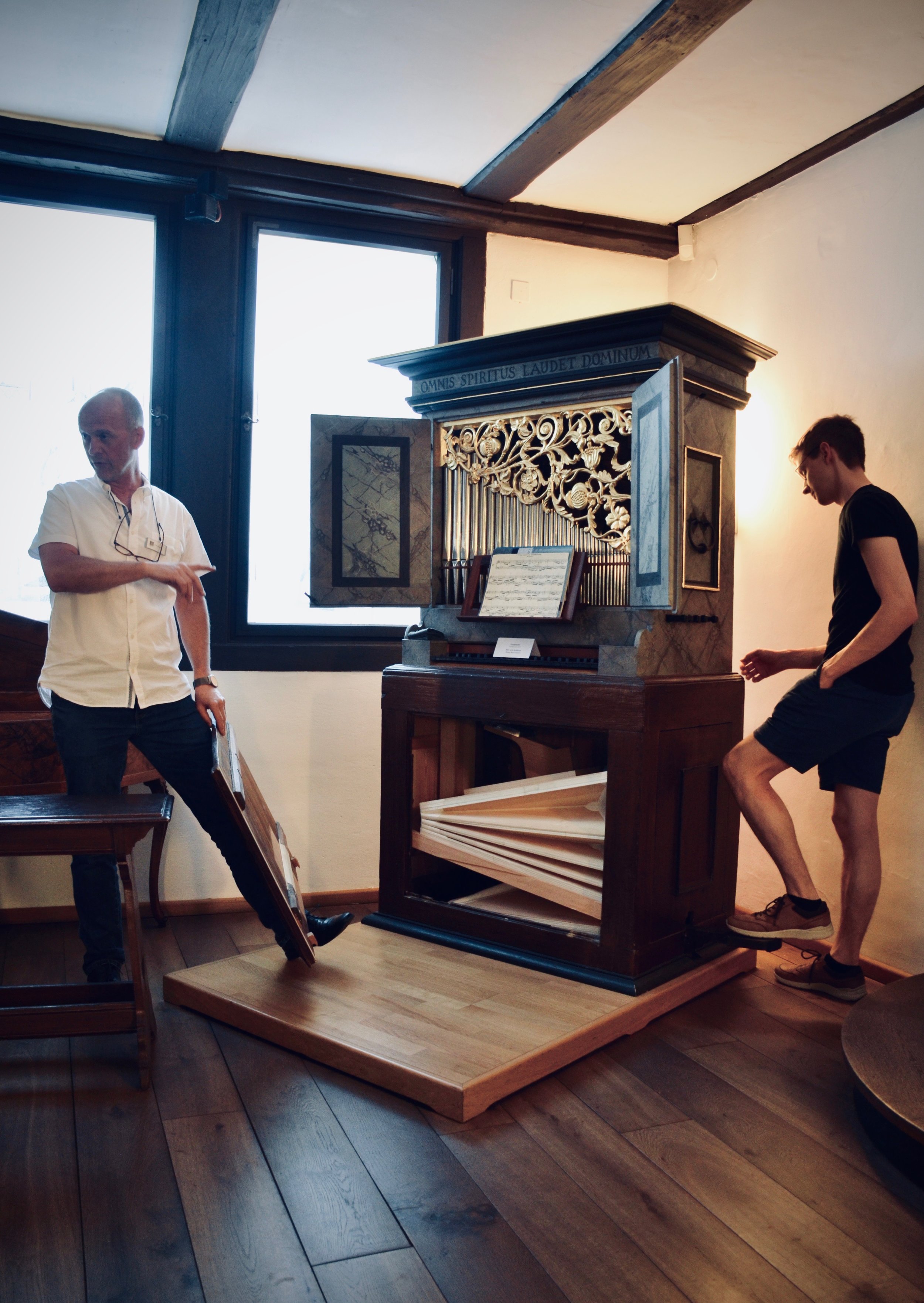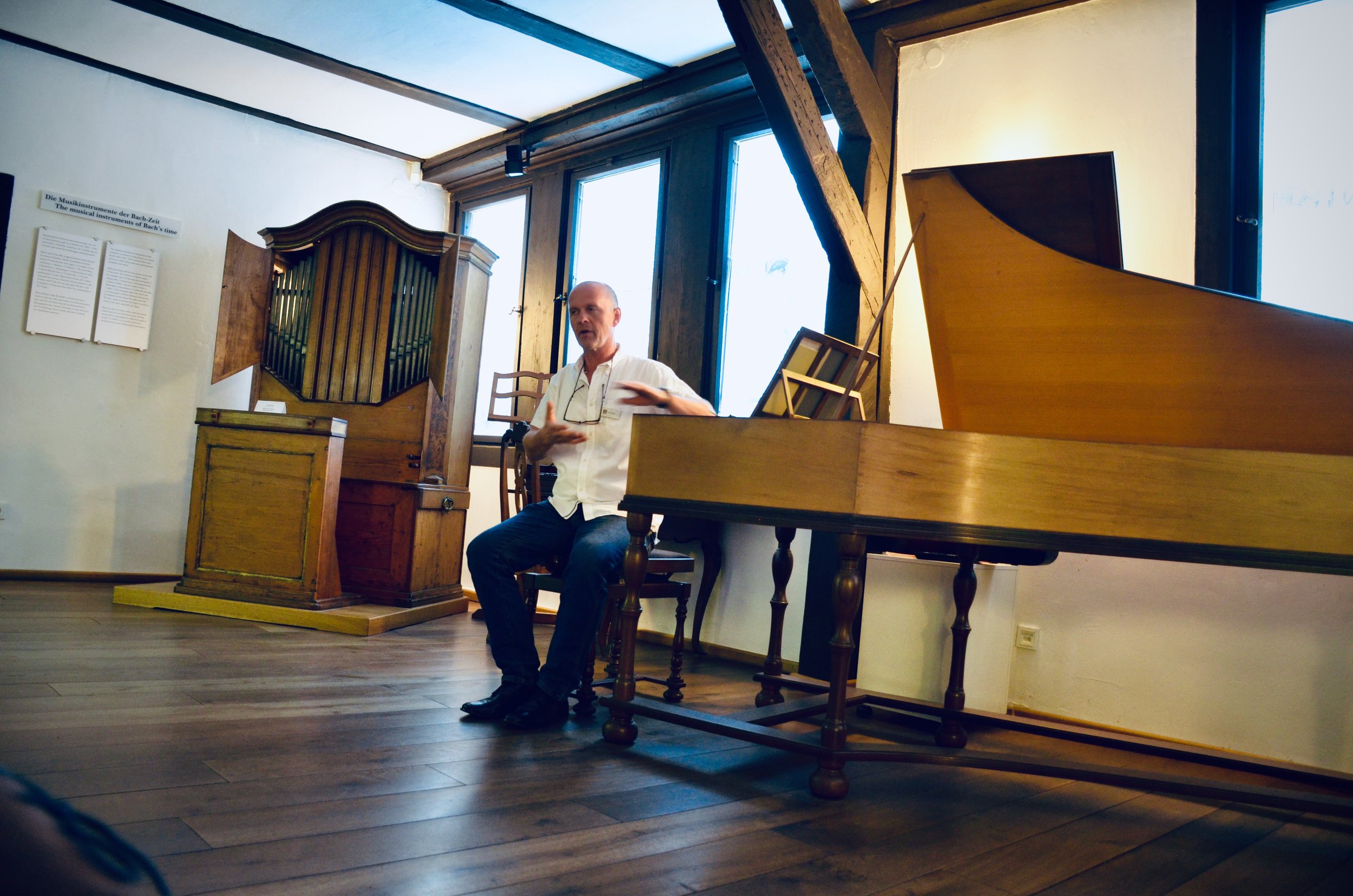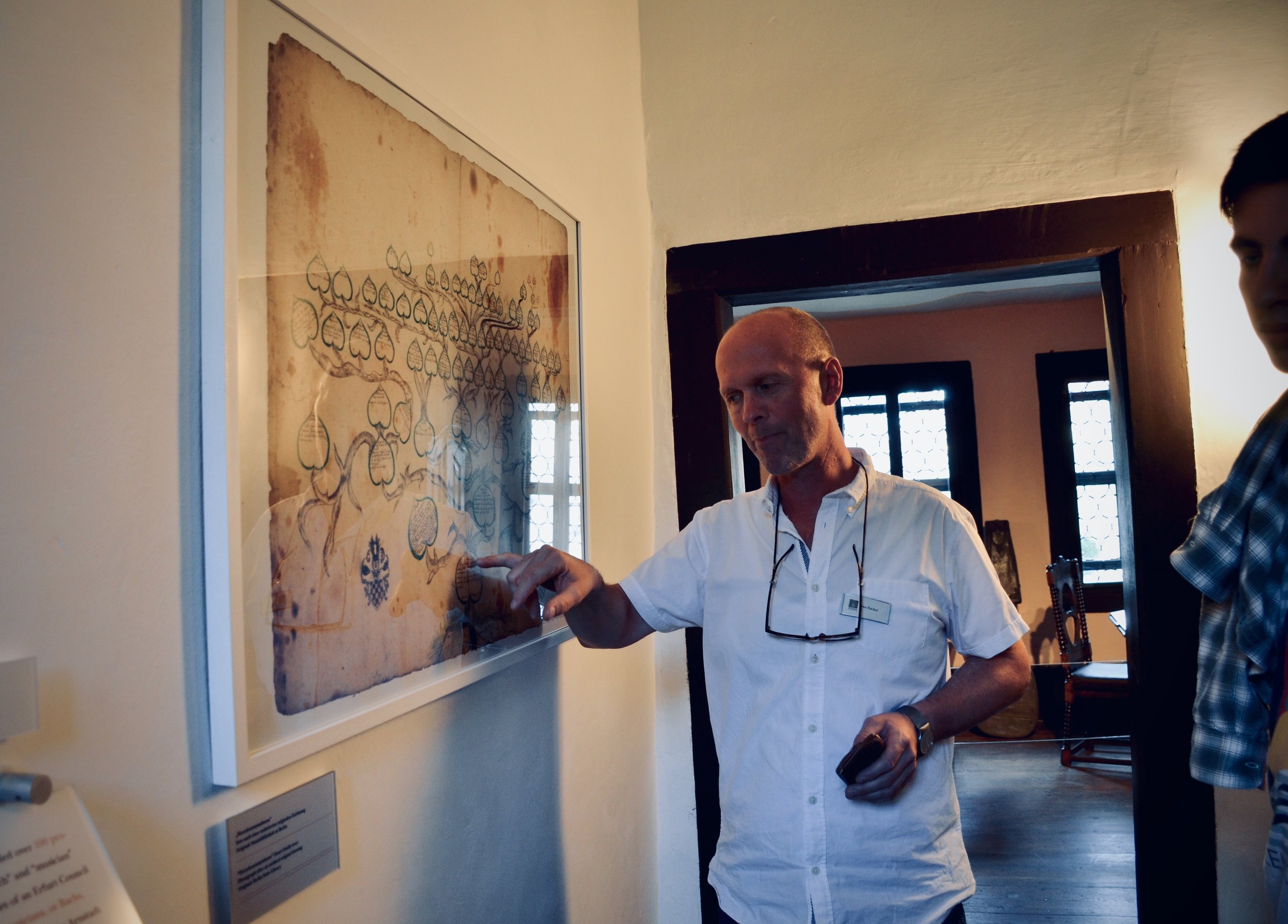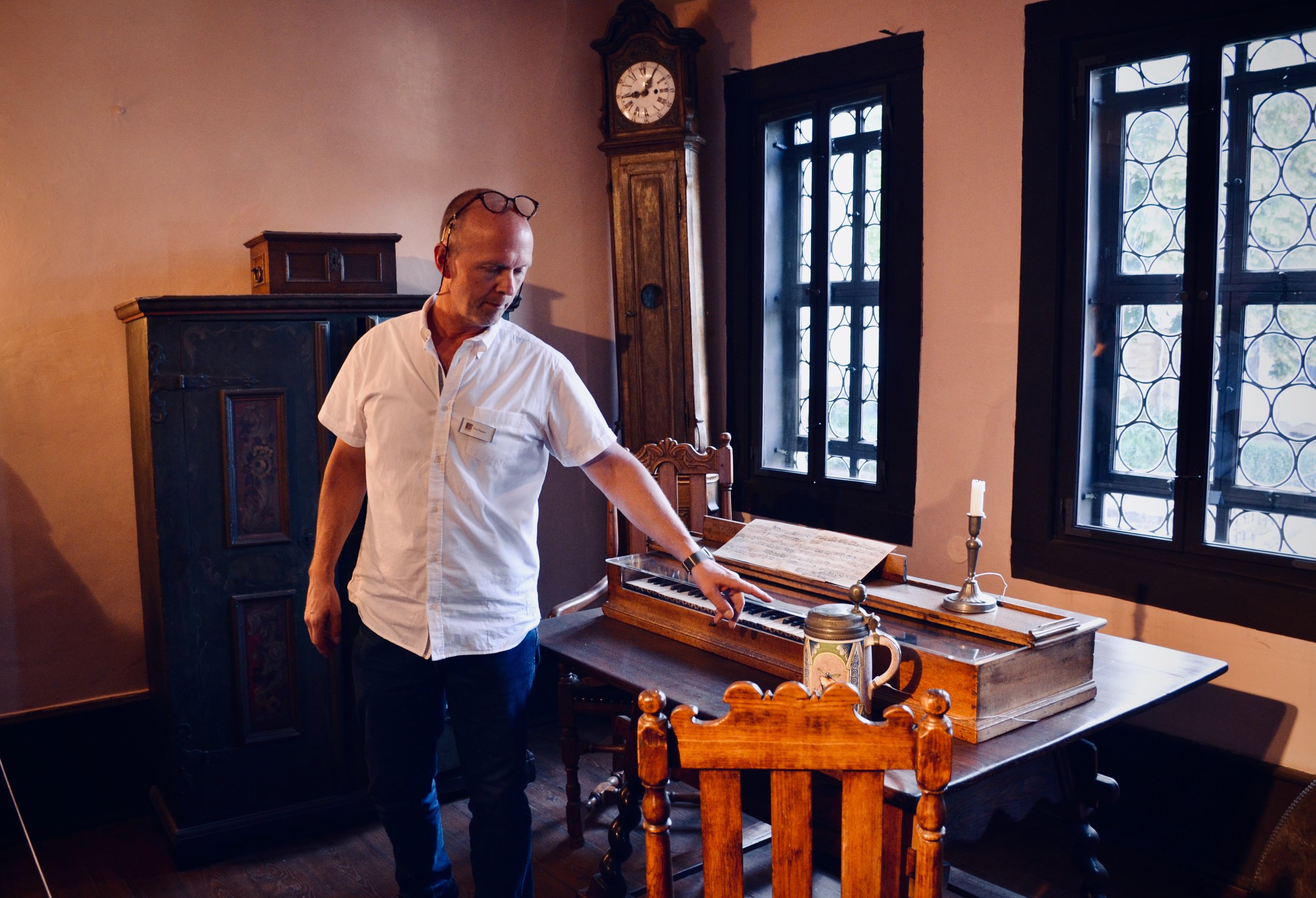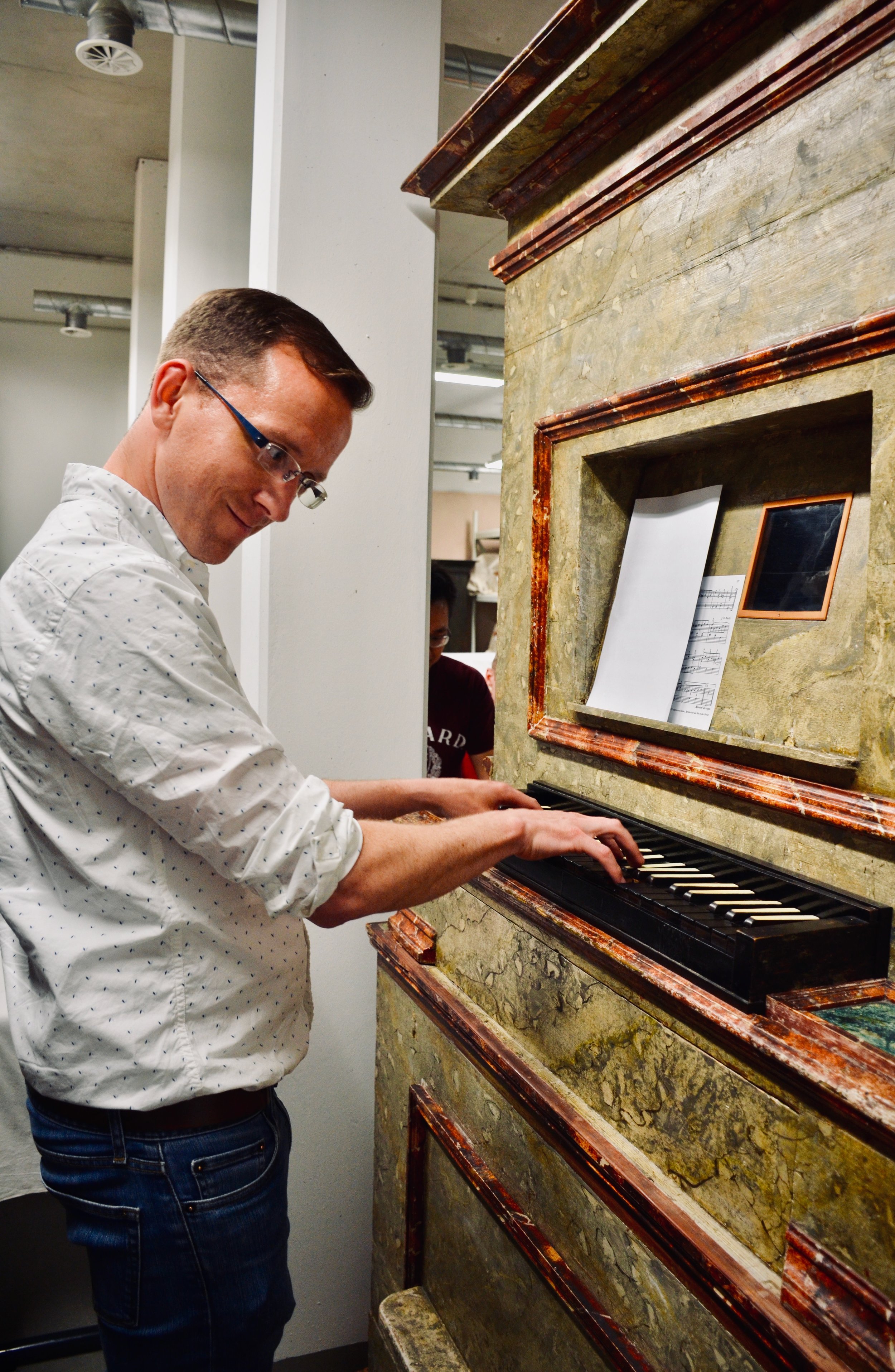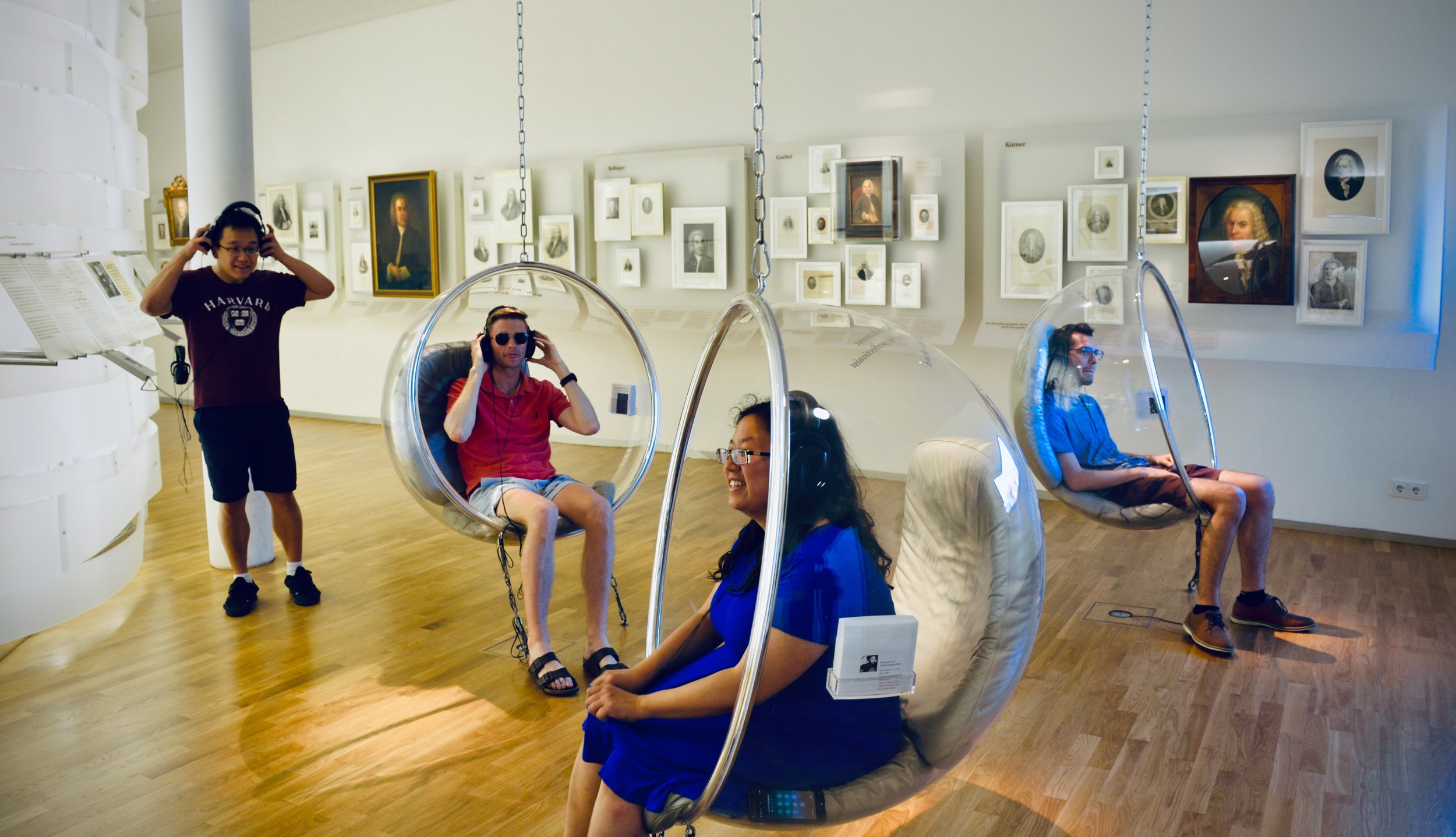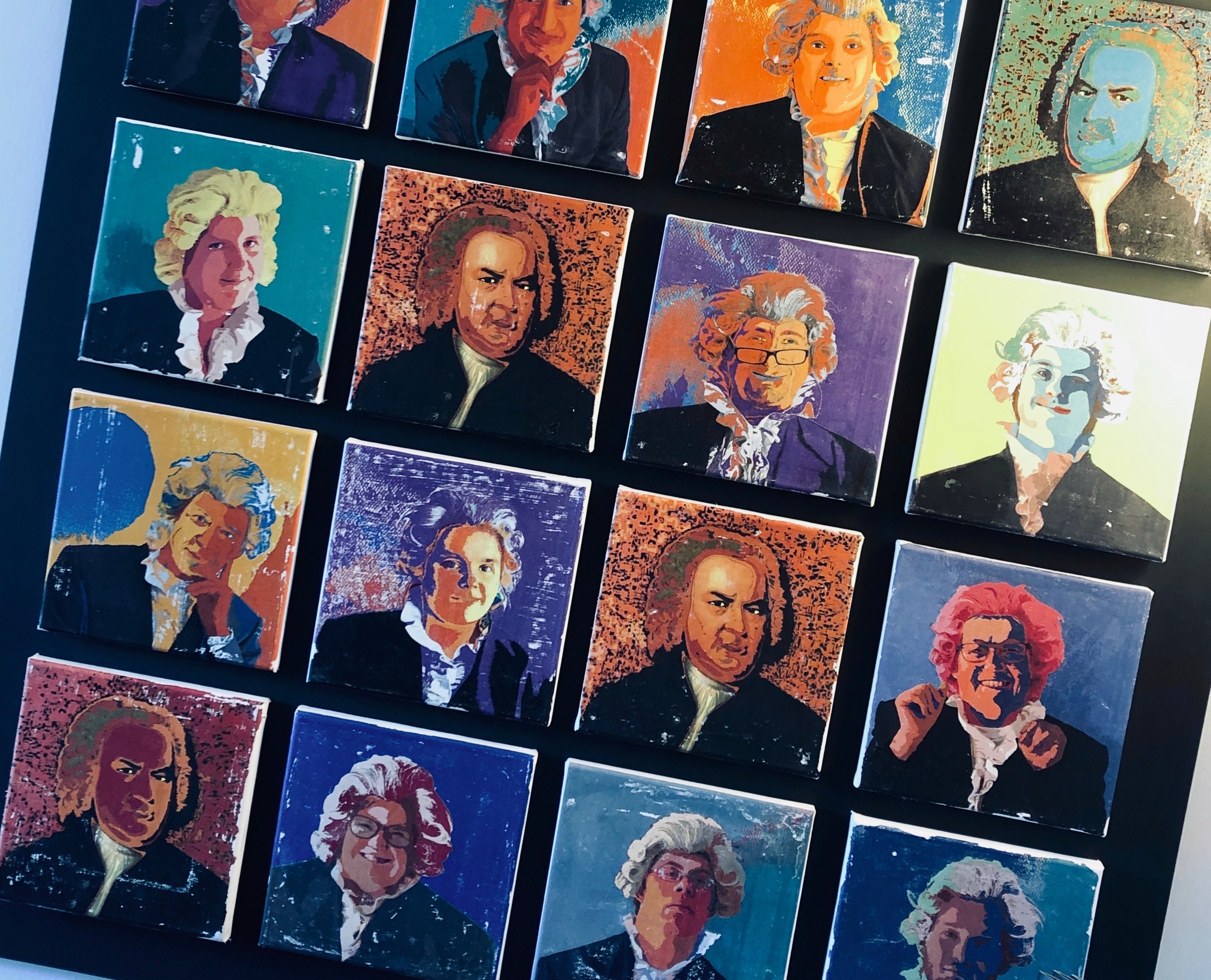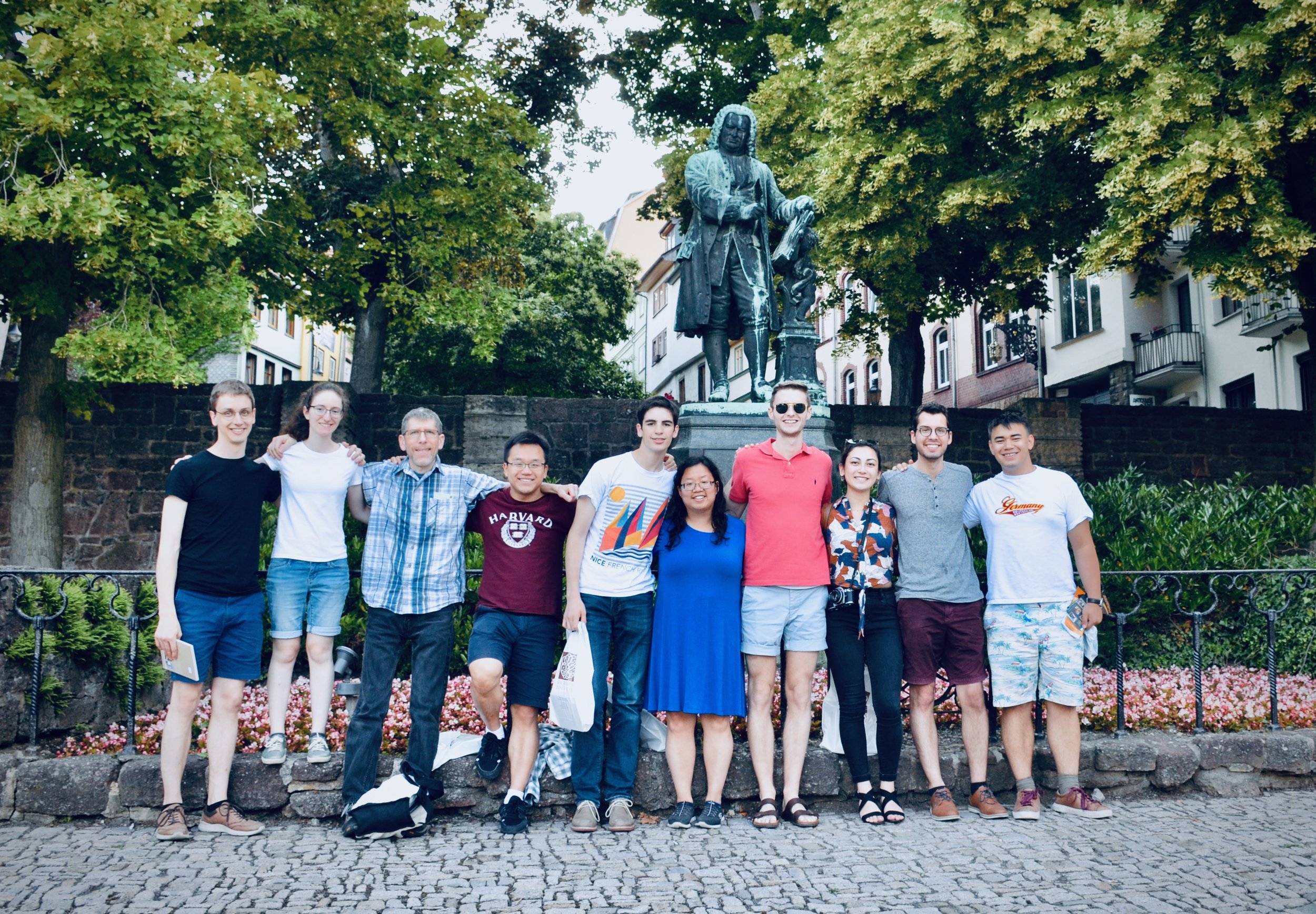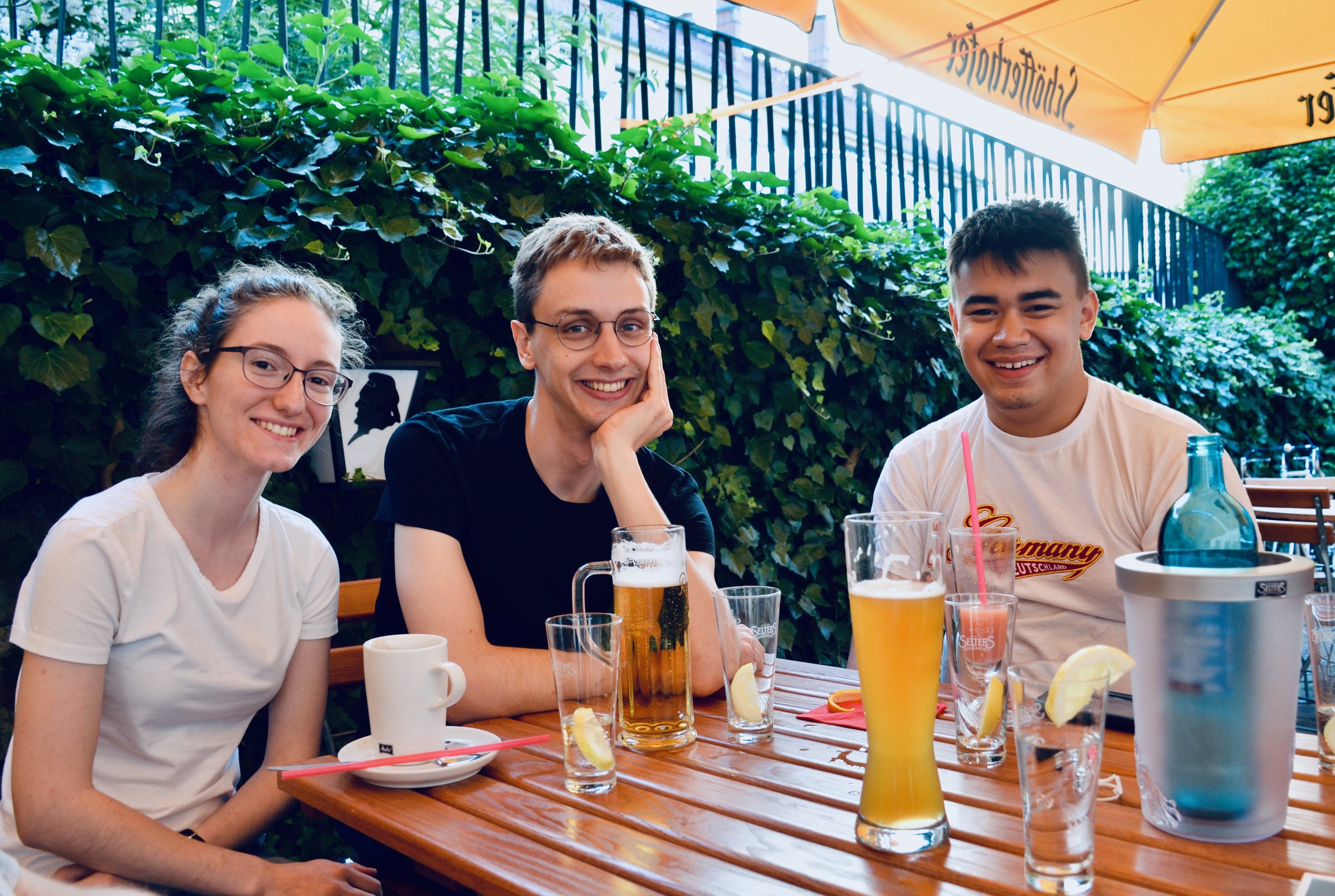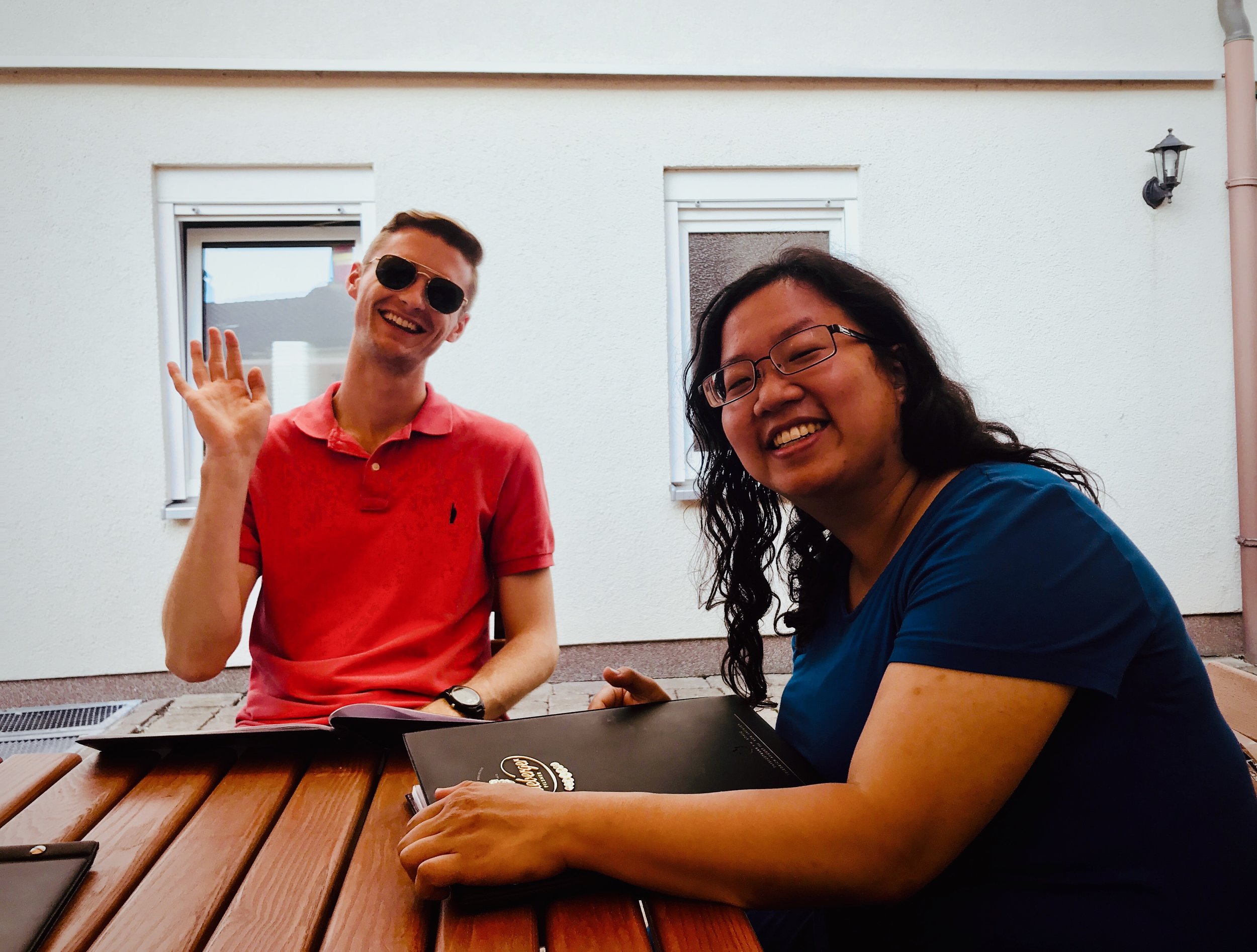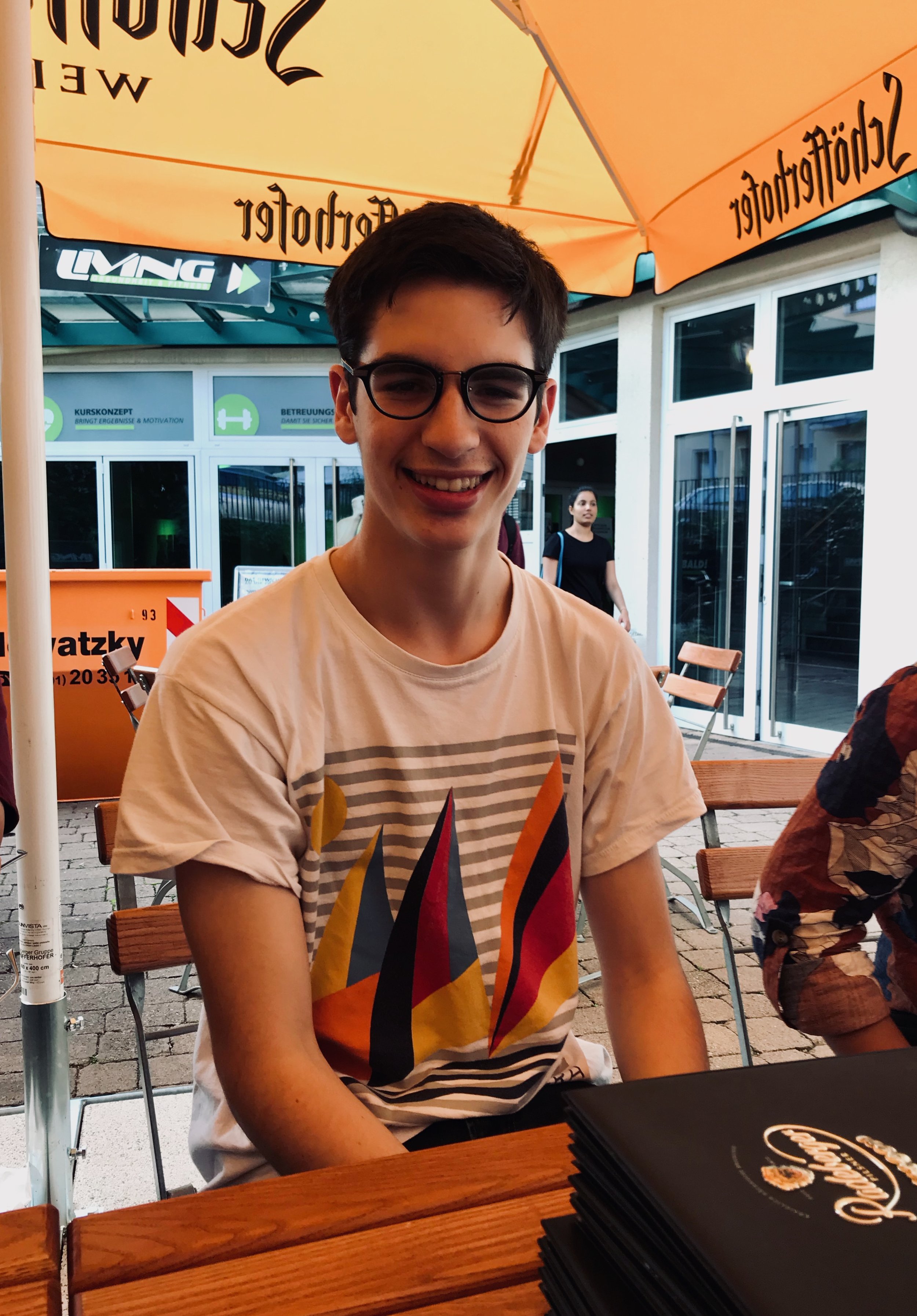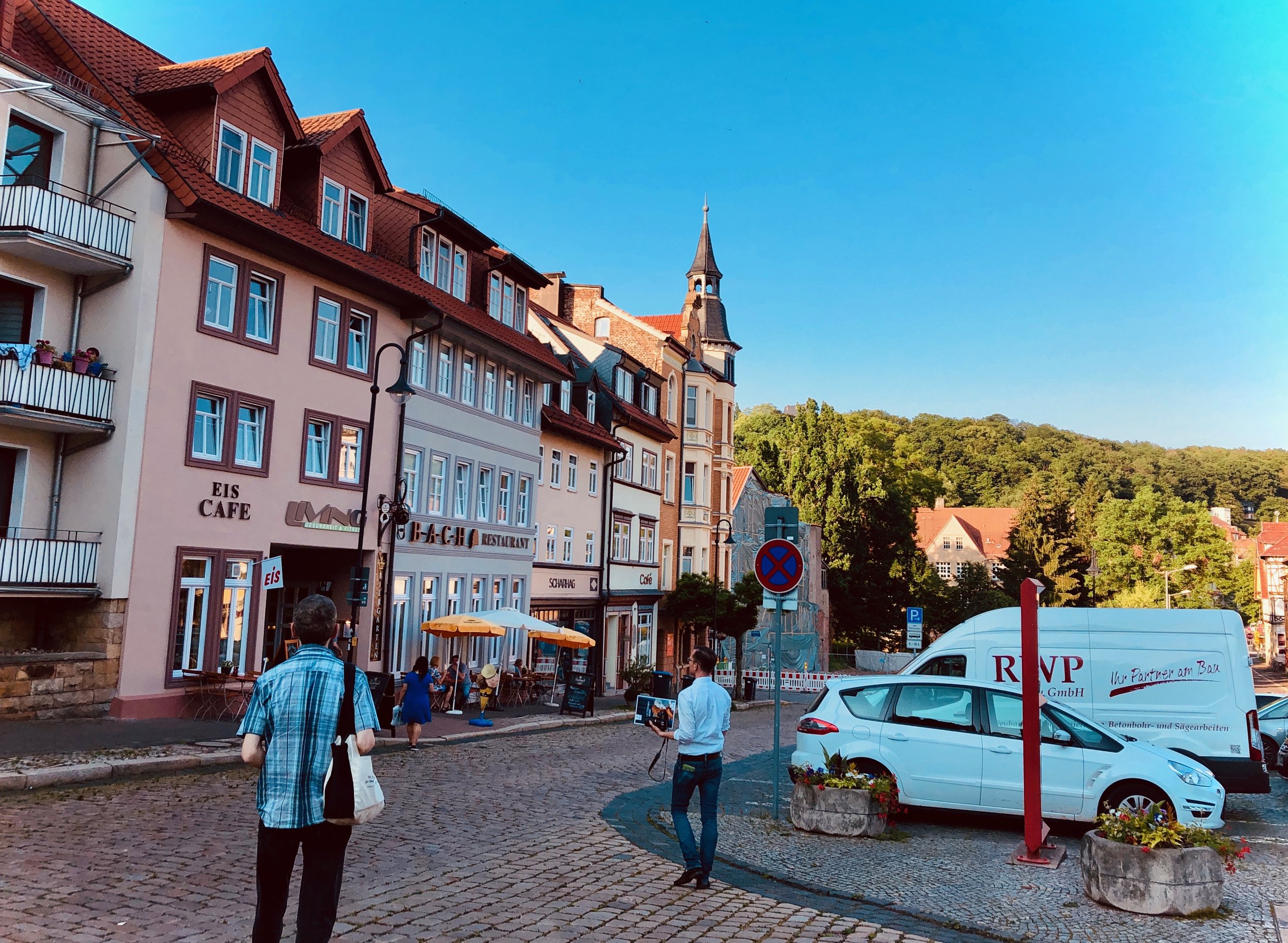Touring Thuringia
by Chris Porter
Today’s itinerary was a whirlwind tour of the land where Johann Sebastian Bach spent some of his early years. Leaving behind the flat plains surrounding Leipzig and the valley of the Elbe River, the autobahn ascended under a powder blue sky into rolling hills covered with a patchwork of light green farmland, dark green forest, and red-roofed towns. After a two-hour drive at speeds exceeding those legal in the U.S., we wound our way on narrow cobblestone streets into the town of Arnstadt.
The reconstructed Wender Organ (1703/2000) in Bachkirche, Arnstadt.
Jörg Fritz Reddin, organist of the Bach Church in Arnstadt
Our appointment was at the Bach Church (known in Bach’s time as the Neue Kirche or New Church), where Bach was appointed organist at the young age of 18. There, covered with a gleaming gold and white façade and perched high on the fourth level of this otherwise plain church, organist Jörg Fritz Reddin introduced us to the instrument. It is not the exact organ on which Bach played, but rather a reconstruction to the original specifications. It also uses some of the original pipes. The original was finished by the Mühlhausen organ builder Johann Friedrich Wender just before Bach arrived, and Bach approved of it. With two manuals and 21 stops, we struggled to find appropriate registrations for some pieces – a reminder that Bach never had a large, three-manual organ to work with and had to make the best of the instruments at his disposal (just like many church musicians today). The pedal action was stiff and noisy, but the organ contained some sweet flutes and bright mixtures. Nick played “Ach Gott, von Himmel sich darein” (BWV 741), one of Bach’s first organ works. I was thrilled to play BWV 549, the C minor prelude and fugue that Bach composed while in Arnstadt.
Chris Porter plays BWV 549 on the reconstructed Wender Organ (1703/2000) in Bachkirche, Arnstadt.
Stadtkirche, Waltershausen.
We then continued west and, after a 40-minute drive, found ourselves searching for (legal) parking in the larger town of Waltershausen. We broke from our tradition of eating German food to enjoy a quick, but most excellent Italian lunch in the sunny, vine-filled courtyard of Casa Nostra. We then walked across the street into the Stadtkirche (state church) to meet the assistant organist, Tom Andschutz.
1730 Trost Organ, Stadtkirche, Waltershausen.
Jennifer Hsiao plays the 1730 Trost Organ, Stadtkirche, Waltershausen.
This church houses an organ built in the 1730s by Heinrich Gottfried Trost; it is unusually well preserved, with most of the organ being original. While it is not Bach’s instrument, it is possible that Bach inspected it. This organ had a quite large and varied collection of stops. While Herr Trost was commissioned to build a 2-manual organ of about 30 stops, he instead provided a 3-manual instrument with over 50 stops. He likely wanted to demonstrate that he could compete with the famous Silbermann instruments and also try out some new stops such as double flutes and an Unda Maris. We found this organ to have quasi-Romantic elements, with a variety of rich, full flutes, although the reeds were still distinctively German Baroque. Some of us were intrigued by the distinctive plenum, which seemed more metallic and lacking in depth than we had expected. The room is very tall (four floors) and to my ears, the plenum sounded somewhat distant from the ground floor — as if the organist was playing for those in heaven, not on earth. Some of us struggled with the extremely large and heavy pedalboard, which seemed to have been constructed by — and for — giants! Despite its challenges, we found this organ to be a fascinating demonstration of the type of instrument that would have been played in Bach’s time.
Members of Boston Organ Studio visit the 1730 Trost Organ, Stadtkirche, Waltershausen.
Bachhaus curator Uwe Fischer demonstrates instruments from the museum collection.
Our third and final stop was a bit further west in the town where Bach was born: Eisenach. We had a private guided tour of the Bach house — a five-century-old house on the street where he was likely born and now restored as a museum. We learned that the name “Bach” was nearly synonymous with the word “musician” in his time and region — the Bach family had over 100 musicians spanning five generations. The Bach house also has an extensive collection of period instruments, including chamber organs representative of those at the time and a 3-stop double harpsichord. They were adeptly demonstrated by our guide Uwe Fischer. Other curiosities included a pocket-size violin and a violin with a trumpet built inside!
Rosemarie, Alex, and Alex enjoy dinner in Eisenach.
We ate a fine German meal at, natürlig, the B-a-c-h restaurant across the street. Over dinner, we counted at least a dozen of Bach’s works we had played that day, including preludes and fugues and various chorale preludes. We also heard the “Freu dich sehr” partita by one of Bach’s most influential teachers, Georg Böhm.
As we breezed back to Leipzig in the light evening traffic, a hazy orange sunset and rising strawberry moon graced the Thuringian countryside. We speculated about Bach’s famous walk from Arnstadt to Lübeck to meet Dieterich Buxtehude — a 280-mile journey that would have taken weeks at that time. Today, we covered over one-third of that distance in less than two hours. Is it any wonder that after going to all that effort, Bach overstayed his leave by nearly three months?
